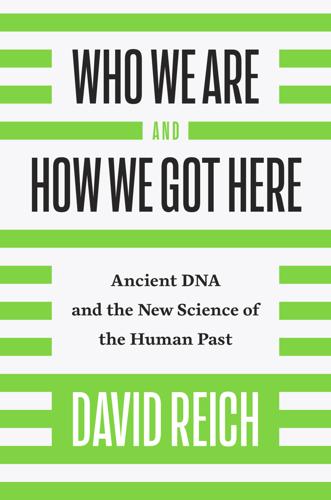
Who We Are and How We Got Here: Ancient DNA and the New Science of the Human Past
by
David Reich
Published 22 Mar 2018
Pääbo’s own 1997 work strengthened the evidence for a purely African origin by showing that Neanderthal mitochondrial DNA fell far outside all modern human variation.19 I too came into the Neanderthal genome project with a strong bias against the possibility of Neanderthal interbreeding with modern humans. My Ph.D. supervisor, David Goldstein, was a student of Luca Cavalli-Sforza, who had made a fully out-of-Africa model a centerpiece of his models of human evolution, and I was steeped in this paradigm. The genetic data I knew about supported the out-of-Africa picture so consistently that from my perspective the strictest possible version of the out-of-Africa hypothesis, in which there was no interbreeding between the ancestors of present-day humans and Neanderthals, seemed like a good bet. Coming from this background, we were deeply suspicious of the evidence we were finding for interbreeding with Neanderthals, and so we applied a particularly stringent series of tests in order to find some problem with our evidence.
…
Foley, “Multiple Dispersals and Modern Human Origins,” Evolutionary Anthropology 3 (1994): 48–60. 13. H. Reyes-Centeno et al., “Testing Modern Human Out-of-Africa Dispersal Models and Implications for Modern Human Origins,” Journal of Human Evolution 87 (2015): 95–106. 14. H. S. Groucutt et al., “Rethinking the Dispersal of Homo sapiens Out of Africa,” Evolutionary Anthropology 24 (2015): 149–64. 15. R. Grün et al., “U-series and ESR Analyses of Bones and Teeth Relating to the Human Burials from Skhul,” Journal of Human Evolution 49 (2005): 316–34. 16. S. J. Armitage et al., “The Southern Route ‘Out of Africa’: Evidence for an Early Expansion of Modern Humans into Arabia,” Science 331 (2011): 453–56; M.
…
Multiregionalism soon encountered its antithesis, the out-of-Africa theory. In this theory, modern humans did not evolve in each location in the world separately from local archaic forms. Instead, modern humans everywhere derive from a relatively recent migration from Africa and the Near East beginning around fifty thousand years ago. The recent date of “Mitochondrial Eve” compared with the deep divergence of Neanderthal mitochondrial DNA provided some of the best evidence for this theory. In opposition to the multiregional hypothesis, the out-of-Africa theory emphasizes the recent origin of the differences among present-day human populations, relative to the multimillion-year time depth of the human skeletal record.
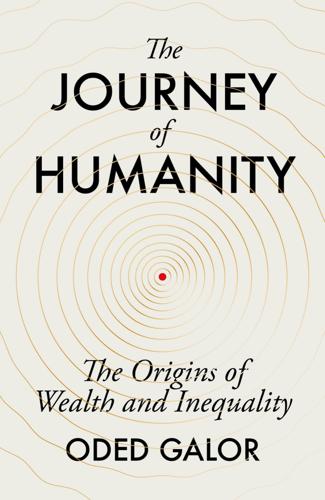
The Journey of Humanity: The Origins of Wealth and Inequality
by
Oded Galor
Published 22 Mar 2022
All humans on Planet Earth today are descended from this one African woman.[13] The widely accepted ‘Out of Africa’ hypothesis suggests that the current population of anatomically modern humans across the globe descends predominantly from a more significant migration of Homo sapiens from Africa as early as 60,000–90,000 years ago.[14] Humanity flocked to Asia via two routes: the northern via the Nile Delta and the Sinai Peninsula to the eastern Mediterranean region known as the Levant, and the southern one via the Bab-el-Mandeb Strait at the mouth of the Red Sea into the Arabian Peninsula (Fig. 3).[15] The first modern humans reached South East Asia more than 70,000 years ago,[16] Australia 47,000–65,000 years ago,[17] and Europe nearly 45,000 years ago.[18] They settled Beringia approximately 25,000 years ago, crossing the land bridge over the Bering Strait during several periods of the Pleistocene Ice Age, and entered deeper into the Americas 14,000–23,000 years ago.[19] These waves of migrations out of Africa contributed to the size and the diversity of the human population across Planet Earth. As prehistoric humans settled new ecological niches, they enjoyed access to new grounds for hunting and gathering and started to multiply more rapidly. Meanwhile, their adaptation to diverse new environments led to greater human and technological diversity, fostering the spread and cross-pollination of innovations, and leading to further population growth. Figure 3. The Migration of Homo sapiens out of Africa The estimated migration routes of Homo sapiens and their approximate years before the present.
…
Thus, as long as the parrots migrate from each parental island more rapidly than the pace of potential mutations on the island, the further away the parrots migrate (sequentially) from the original island, the less diverse their population will be. Human migration out of Africa followed a comparable pattern. An initial group left Africa and settled in fertile regions nearby, carrying only a subset of the diversity that existed in their parental African population. Once the initial migratory group had grown to the extent that its new environment could no longer support any additional expansion, a less diverse subgroup departed in search of other virgin territory and settled in habitats further away. During this human dispersal out of Africa and the peopling of the continents, this process repeated itself: as populations grew, new subgroups containing only some of the diversity in their parental colony left again in a quest for greener pastures.
…
Armed with this powerful measure of the overall diversity of each population, we can at last explore whether the exodus out of Africa that occurred tens of thousands of years ago, and its impact on human diversity, might have had an astoundingly long-lasting effect on current living standards across the globe. Diversity and Prosperity Living conditions in the course of history have indeed been influenced significantly by levels of diversity and therefore by the migration of Homo sapiens out of Africa.[15] Migratory distances of the ancestral populations of each country, or ethnic group, from the cradle of humankind in East Africa have generated a persistent ‘hump-shaped’ influence on development outcomes, reflecting a fundamental trade-off between the beneficial and the detrimental effects of diversity on productivity at the societal level.
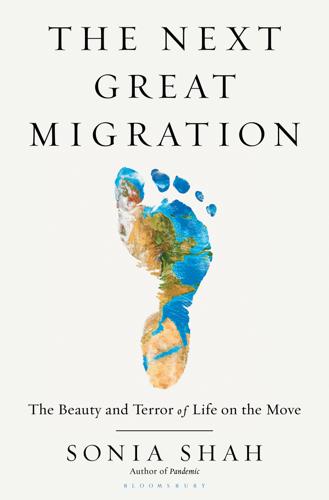
The Next Great Migration: The Beauty and Terror of Life on the Move
by
Sonia Shah
But already paleogeneticists such as Sweden’s Svante Pääbo and Harvard’s David Reich, among others, have revealed a backstory of ancient migrations that is far more complex than what Cavalli-Sforza and others extrapolated from modern-day DNA. The Out of Africa journey had been cast as a dispersal into vast empty spaces. But when our ancestors walked out of Africa, new data from ancient DNA revealed, they moved into lands where other peoples already lived. These now-extinct archaic humans had beaten us there, having migrated out of Africa themselves some 1.8 million years ago. When our ancestors encountered them, they did what migrants do everywhere: they had babies with the locals, a process of mixing that allowed bits of their DNA to enter ours.
…
After centuries of allegiance to sedentist myths, commentators viewed the notion of a mass migration out of Africa with suspicion.20 Critics complained that Wilson and his colleagues “simply didn’t have the training” to untangle the complexities of the human past. “African migrants” could never have successfully colonized the entire planet, the paleoanthropologists Alan G. Thorne and Milford Wolpoff wrote in a 1992 Scientific American article. Research by scientists such as the population geneticist Luigi Luca Cavalli-Sforza supported the migratory history suggested by Mitochondrial Eve. Cavalli-Sforza called that ancient exodus the “Recent Out of Africa” migration. He, among others, incorporated the new DNA evidence21 with the way skulls had changed, how pathogens, languages, and cultures had evolved, and a raft of other archaeological evidence to prove that we had indeed migrated out of Africa just hundreds of thousands of years ago.
…
He, among others, incorporated the new DNA evidence21 with the way skulls had changed, how pathogens, languages, and cultures had evolved, and a raft of other archaeological evidence to prove that we had indeed migrated out of Africa just hundreds of thousands of years ago. Cavalli-Sforza’s work forced the fact of our recently shared African origins into mainstream acceptance. But his theory left other central planks of the sedentist paradigm intact. The premodern migrations he described occurred under exceptional and short-lived circumstances. The way Cavalli-Sforza imagined it, the journey out of Africa had been a dispersal into empty land, motivated by the allure of unoccupied territory. Our earliest ancestors evolved in Africa in a world of vast, unpopulated spaces, “new, pristine environment[s],” and “virgin territory.”
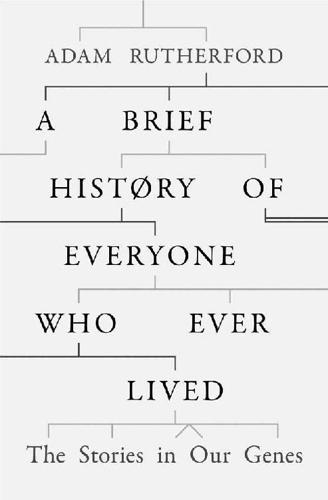
A Brief History of Everyone Who Ever Lived
by
Adam Rutherford
Published 7 Sep 2016
The oldest true Neanderthal bones we’ve found are 300,000 years old, and we’ve not discovered any younger than 30,000. That is a reasonable longevity for a human species. Homo erectus, an earlier upright ape, spread all over the world from an exodus out of Africa that began 1.9 million years ago. But the Neanderthals still clocked up a longer innings than we have so far. We anatomically modern humans are generally thought to have evolved in eastern Africa around 200,000 years ago, and emerged out of Africa in our own exodus sometime in the last 100,000 years. This number inches up every few years, as more specimens are found. A discovery in October 2015, from the Fuyan cave in the Daoxian region in southern China, dug up forty-seven modern teeth at least 80,000 years old, and it’s not unreasonable to presume that the owners of those teeth took some tens of thousands of years to get that far east from the motherland.
…
The full gamut of suggestions has been made over the years, from their being the direct ancestors of modern Europeans, to their existence on a completely different bough of the evolutionary tree, who left no extant descendants. The last common ancestor of us and them is thought to have existed around 600,000 years before today. The migration of Homo sapiens out of Africa. Anatomically modern humans began their tenure on Earth in eastern Africa, around 200,000 years ago. They had begun to trickle out of Africa at least 100,000 years ago. They met Neanderthals in Europe, and other human species en route, and according to our DNA, bred with many of them. Svante Pääbo’s digging within Neanderthal 1’s arm bone was the first step in answering this.
…
But what DNA analysis revealed more categorically than anything else was that we had sex with them, repeatedly, probably as soon as these two peoples met, and every time afterwards. So what happened? Humans are both horny and mobile. The language we use feels deceptive in these terms, at least in the timescales we’re referring to. When we say humans migrated out of Africa, as our ancestors surely did, it sounds a little like they packed their bags, upped sticks and headed north to the Promised Land. The whole basis of current thinking about the origin of us is referred to as the Out of Africa hypothesis, defined by our migration away from the first site of anatomically modern humans. The timescales are not really known precisely, other than to say that they were over thousands of years.

A Short History of Humanity: How Migration Made Us Who We Are
by
Johannes Krause
and
Thomas Trappe
Published 8 Apr 2021
If the entire genome consisted of genes, the number of variants—that is, mutations—would depend not on how long ago the split occurred but on how widely the two populations’ environments differed. For example, sub-Saharan Africans have fewer changes in several of their genes than the descendants of people who migrated out of Africa. This is because the migrants’ genes had to adapt to new conditions, while those of the people who remained in Africa did not, or only to a lesser degree. Yet today the genome of sub-Saharan Africans contain even more mutations compared to people outside Africa. The reason? Mutations take place in the genome’s junkyard, just as they do in genes, but are not as much subject to positive or negative selection.
…
One of the reasons I became interested in archaic humans was that only a few streets from my parents’ house in my hometown, Leinefelde, in the Thuringian region of Eichsfeld, was the birthplace of Johann Carl Fuhlrott, who discovered the Neanderthals. Fuhlrott was one of my idols growing up. Back then, I never would have dreamed that I too would discover a new hominin, the Denisovans. Furthermore, what are the odds that the two extinct hominin forms that modern humans encountered on their way out of Africa and mixed with were discovered by two gentlemen born in the same village in eastern Germany, albeit almost 200 years apart? Even more strikingly, Johann Carl Fuhlrott and I both eventually became professors at the University of Tübingen. CHAPTER 2 Persistent Immigrants EVERYBODY’S DOING IT WITH everybody else.
…
In 2010, our comparison between Neanderthal DNA and living humans revealed that between 2 and 2.5 percent of the European, Asian, and Australian genomes consists of Neanderthal DNA. Our Denisova study produced a similar result: contemporary indigenous Papua New Guineans and Australians—descendants of the modern humans who arrived in the Pacific region from Africa via Asia tens of thousands of years ago—have 5 percent Denisovan genes. This also further supported the “out of Africa” theory, according to which human beings originated in Africa and then expanded across the globe. This is why we find Neanderthal DNA in the genes of people living outside Africa but not in people from sub-Saharan Africa. Their ancestors simply never saw any other kind of archaic hominin that we know of.
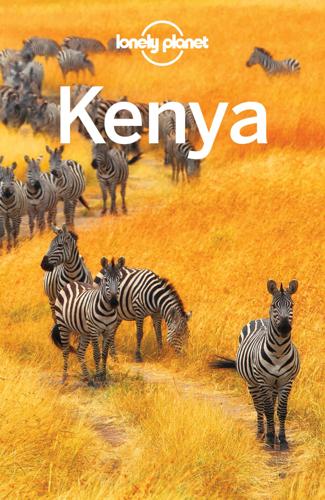
Lonely Planet Kenya
by
Lonely Planet
After her first marriage broke down, she began a love affair with the British playboy Denys Finch Hatton, who subsequently died in a plane crash during one of his frequent flying visits to Tsavo National Park. After the farm came close to bankruptcy, Blixen returned to Denmark, where she began her famous memoir Out of Africa. The book is one of the definitive tales of European endeavour in Africa, but Blixen was passed over for the 1954 Nobel Prize for Literature in favour of Ernest Hemingway. She died from malnutrition at her family estate in Denmark in 1962. In 1985 Out of Africa was made into a movie starring Meryl Streep, Robert Redford and one of the retired trains from Nairobi’s Railway Museum. The final production was terrific from a Hollywood perspective, but it left out enough of the colonial history to irk historians and Kenyan nationalists alike.
…
The park's main gate was forced to move back up the hill during the 2014 floods. Budget Tips Stay outside the park and you'll pay far less for accommodation, and won't risk needing a permit for longer than 24 hours. Pega Tours offers cheap vehicle hire with guides for those without vehicles. 1Sights Out of Africa LookoutVIEWPOINT ( GOOGLE MAP ) To get the best view that takes in much of the park, head up to the rocky Out of Africa Lookout. Less frequented by tour groups than the lower Baboon Cliff, the incline is steeper but it offers sweeping views out over the lake and fond memories for fans of the film – parts of the movie were filmed in the park, with some shots taken from here.
…
With no cars around, the best way to get to know this graceful town is by wandering its backstreets, admiring the grand old Swahili doors, peeking into hidden courtyards bursting with unexpected colours, slipping into an easy chair and sipping on a fruit juice, and accepting all invitations to stop and shoot the breeze. Do all this and the backstreets of Lamu will become a place you’ll dream of forever. NIGEL PAVITT / GETTY IMAGES © Top Experiences Lake Nakuru National Park This world-class national park with strong echoes of Out of Africa is dominated by one of the Rift Valley’s most beautiful lakes. The waters are lined on one side by an abrupt escarpment and the shoreline is at times given colour and texture by massed birdlife. But Lake Nakuru is also a wildlife haven for land-borne mammals, home as it is to tree-climbing lions, leopards, the highly endangered Rothschild’s giraffes, zebras, buffaloes, various primate species and some of Kenya’s most easily spotted rhinos.

Straight on Till Morning: The Life of Beryl Markham
by
Mary S. Lovell
Published 1 Jan 1983
Make once more my heart thy home. 28 Isak Dinesen: The Life of Karen Blixen, Judith Thurman, Weidenfeld & Nicolson, 1982. 29 ibid. 30 Interview with Mrs Doreen Bathurst Norman, Jersey, May 1986. 31 Out of Africa, Karen Blixen, Penguin, 1984. 32 Mrs Doreen Bathurst Norman in telephone conversation, October 1986. 33 Interview with Mrs Doreen Bathurst Norman, Jersey, May 1986. 34 Isak Dinesen: The Life of Karen Blixen, Judith Thurman, Weidenfeld & Nicolson, 1982. 35 ibid. 36 The Times, 21 September 1936. 37 Out of Africa, Karen Blixen, Penguin, 1984. 38 ibid. 39 ibid. 40 Interview with Beryl Markham, Nairobi, April 1986; and transcript of interviews with Beryl by film crew of the documentary World without Walls, Kenya, 1984. 41 ibid. 42 The Times, 21 September 1936. 43 Hunters’ Tracks: Great Men – Great Hunters, J.A.
…
But some memories I have kept for myself as everyone must. And because she understands this I have tried to help her, as she – in her own way – has helped me. Beryl Markham Nairobi, 3 April 1986 INTRODUCTION In 1985 my ex-husband, Cliff Lovell, flew his De Havilland Gipsy Moth airplane during the making of the movie Out of Africa. When he returned home at Christmas after three months of filming in Kenya, I asked him to tell me all about it. Instead of stories about Meryl Streep and Robert Redford (which is what I wanted to hear), he began telling me about an elderly woman who had been brought onto the set to see the Moth.
…
He told me that she now lived a retired life in Kenya, but that as a pioneer aviatrix she had been a bush pilot, had made many record-breaking flights, and was the first woman to fly the Atlantic ‘the hard way’ – east to west against the prevailing winds. She had also been a friend of Karen Blixen and Denys Finch Hatton, whose relationship was the basis for the Out of Africa movie, and she had been a leading racehorse trainer. To my knowledge I had never heard the name Beryl Markham, but I recall that I was aware of a frisson of recognition – almost amounting to déjà vu – and to this day I cannot explain it. As Cliff finished telling me about her he said, ‘Someone ought to write a book about her,’ and there it was again, an inexplicable prickle of the hairs on the back of my neck.
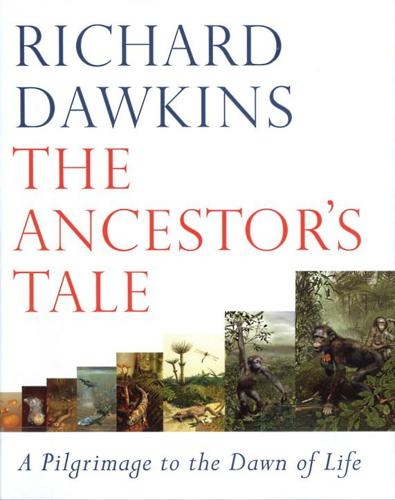
The Ancestor's Tale: A Pilgrimage to the Dawn of Evolution
by
Richard Dawkins
Published 1 Jan 2004
'Out of Africa' is unfortunate because everybody agrees that our ancestors are from Africa if you go back far enough. 'Separate Origins' is also not an ideal name because, again if you go back far enough, the separation must disappear on any theory. The disagreement concerns the date when we came out of Africa. It might be better to call the two theories 'Young Out of Africa' (YOOA) and 'Old Out of Africa' (OOOA). This has the added advantage of emphasising the continuum between them. If today's non-Africans all stem from a single recent emigration from that continent, we would expect modern gene distributions to demonstrate a recent, Africa-centred, small-population 'bottleneck'.
…
Coalescent gene trees have helped resolve a long-standing debate over human origins. The 'Out of Africa' theory holds that all surviving peoples outside Africa are descended from a single exodus around a hundred thousand years ago, more or less. At the other extreme are the 'Separate Origins' theorists or 'Multiregionalists', who believe that the races still living in, say, Asia, Australia and Europe are anciently divided, separately descended from regional populations of the earlier species, Homo erectus. Both names are misleading. 'Out of Africa' is unfortunate because everybody agrees that our ancestors are from Africa if you go back far enough.
…
This is, in effect, what the evolutionary biologist Alan Templeton did, and he came up with his engagingly titled theory 'Out of Africa Again and Again'. Templeton used a type of coalescence theory, similar to that in our haemophilia discussion, but he did it for lots of separate genes instead of just one. This enabled him to reconstruct the history and geography of genes over the whole world and over hundreds of thousands of years. At the moment, I favour Templeton's 'Out of Africa Again and Again' theory, because he seems to me to use all the available information in a way that maximises its power to generate inferences; and because he bent over backwards, at every step of his work, to guard against overreaching the evidence.
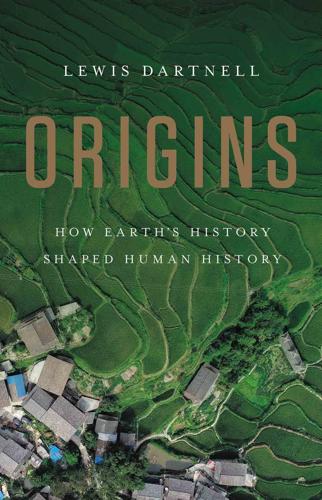
Origins: How Earth's History Shaped Human History
by
Lewis Dartnell
Published 13 May 2019
One recent controversial study, for example, argues that an unidentified hominin species reached California during the preceding ice age, 130,000 years ago.50 What does seem likely, however, is that the exodus of modern humans out of Africa around 60,000 years ago, which gave rise to all people around the world today, was not the first. Fossilised remains in caves in Israel and stone tools found in the Arabian Peninsula51 suggest earlier migrations around 100,000 years ago, but these apparently reached a dead end and didn’t go on to populate the rest of the world.52 It’s almost as if early sparks of humanity blew out of Africa but didn’t catch. § The Neanderthals weren’t the only species to have been apparently greatly affected by modern humans appearing in their environment.
…
Overall, of the fifteen hominin species we know of, twelve first appeared during these three variable phases.32 What’s more, the development and spread of the different stages of tool technologies that we discussed earlier–Oldowan, Acheulean, Mousterian–also correspond with the eccentricity periods of extreme climate variability.33 And not only did the variable periods determine our evolution, they are also thought to have been the force driving several hominin species to migrate out of their birthplace and into Eurasia. We’ll explore in detail in the next chapter how our species Homo sapiens were able to disperse around the entire globe, but the conditions propelling hominins out of Africa in the first place again lie with the climate fluctuations in the Great Rift. During each wet phase the filling of the large amplifier lakes and the extra availability of water and food would cause a population boom, while at the same time limiting the amount of space available for habitation along the tree-lined rift shoulders.
…
Moister conditions would also have allowed hominin migrants to move north along the Nile tributaries and across the greener corridors of the Sinai Peninsula and Levant region to spill into Eurasia.34 Homo erectus left Africa during the variable climate phase around 1.8 years ago, eventually spreading as far as China. In Europe, H. erectus evolved into the Neanderthals, while the H. erectus population that remained in East Africa eventually gave rise to anatomically modern humans 300,000–200,000 years ago. Our own species dispersed out of Africa around 60,000 years ago, as we’ll see in the next chapter. We encountered the descendants of previous waves of hominin migrants–Neanderthals and Denisovans–as we moved through Europe and Asia. But both of these had died out by around 40,000 years ago, and only anatomically modern humans remained.
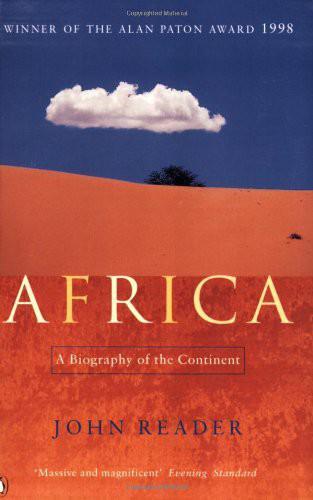
Africa: A Biography of the Continent
by
John Reader
Published 5 Nov 1998
By AD 200 numbers are said to have risen to 20 million – of whom more than half lived in North Africa and the Nile valley (and thus would have been part of the Roman Empire population in AD 14), leaving a sub-Saharan population of under 10 million.4 By AD 1500 the population of the continent is estimated to have been 47 million and in a state of ‘stable biological equilibrium’, with population size fulfilling the potential of the environments that people occupied.5 Meanwhile, the out-of-Africa population had risen to just over 300 million. A massive disparity is evident. While the out-of-Africa population grew from just hundreds to 200 million in 100,000 years, and rose to just over 300 million by AD 1500, the African population increased from 1 million to no more than 20 million in 100,000 years, and rose to only 47 million by AD 1500.
…
At an early but unrecorded date, some representatives of the species took the human line out of Africa for the first time. Their fossil remains have been found in Europe, Java and China; the oldest dates from 1.8 million years ago (Java); 8 the youngest (200,000 years old) comes from China. Homo erectus is a prime candidate for the immediate ancestry of the Neanderthals, Homo neanderthalensis, who populated Europe from about 120,000 years ago; if this is true, then the Homo erectus line persisted out of Africa until about 30,000 years ago, when the Neandertals became extinct. Homo erectus individuals were significantly bigger than their antecedents and contemporary cousins.
…
By AD 200 numbers are said to have risen to 20 million, of whom more than half lived in North Africa and the Nile valley (and thus would have been part of the Roman Empire population in AD 14), leaving a sub-Saharan population of under 10 million.2 By AD 1500 the population of the continent is estimated to have been 47 million and in a state of ‘stable biological equilibrium’, with population growth fulfilling the potential of the environments that people occupied.3 Meanwhile, the out-of-Africa population of the world had risen to just over 300 million by AD 1500. A massive disparity in population growth rates is evident. While the out-of-Africa population soared from just hundreds to 200 million in 100,000 years, and rose to just over 300 million in the next 1,500 years, the African population increased from 1 million to no more than 20 million 100,000 years later, and to only 47 million in AD 1500.
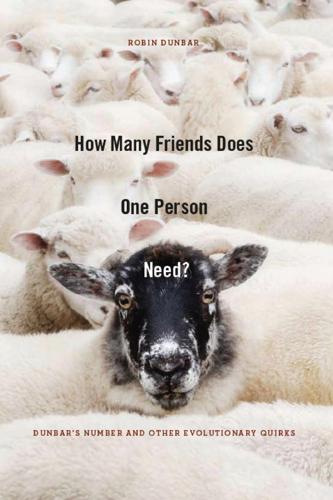
How Many Friends Does One Person Need? Dunbar’s Number and Other Evolutionary Quirks
by
Robin Dunbar
and
Robin Ian MacDonald Dunbar
Published 2 Nov 2010
With its body newly designed for long-distance walking, Homo erectus set off to conquer the world, breaking out of Africa for the first time around a million years ago, and very rapidly colonising the farthest corners of main- [Page 129] land Asia. For a long time, nothing much of interest happened, and there was little to differentiate between the Afro-European populations and those in eastern Asia. But in the millennia that followed, the Asian populations went their own way, cut off from their African cousins. Around half a million years ago, some of the African populations began to undergo rapid change, mainly involving a dramatic increase in brain size and another exodus out of Africa into Europe.
…
We still bear the scars of that evolutionary history today. Some of those scars – like our particular skin colour – are relicts of a surprisingly recent evolutionary history and date only to within the last few tens of thousands of years. Most of these are recent genetic mutations triggered by the great migrations out of Africa that resulted in modern humans peopling the whole planet. Others, however, are older, dating back to earlier species in the lineage that led to modern humans. One of these is the fact that, unlike all other primates, we give birth to very premature babies – one of the consequences of which seems to have been the need to persuade males to get involved in the business of child-rearing in a way that is very rare among mammals.
…
There were many blind alleys that led nowhere in the end, even though some of them prospered for many hundreds of thousands of years before going extinct – the many australopithecines (the apemen that diversified into more than a dozen different species between six and two million years ago), the early Homo erectus species that migrated out of Africa and colonised Asia as far east as modern Beijing, the iconic Neanderthals of Europe. There were, equally, many moments when the fragile lineage that eventually gave rise to us teetered on the brink of extinction. The genetic evidence now indicates that all modern humans are descended from as few as five thousand breeding women who lived around two hundred thousand years ago in Africa.
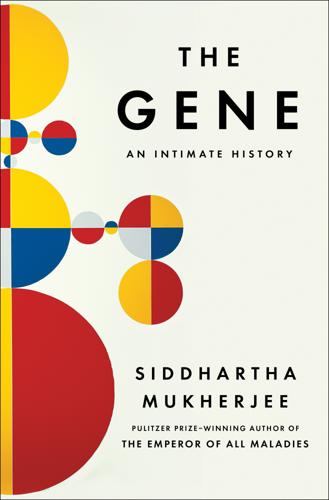
The Gene: An Intimate History
by
Siddhartha Mukherjee
Published 16 May 2016
The “youngest” humans, in contrast, are the indigenous North Americans who left Europe, and crossed into the Seward peninsula in Alaska through the icy cleft of the Bering Strait, some fifteen to thirty thousand years ago. This theory of human origin and migration, corroborated by fossil specimens, geological data, tools from archaeological digs, and linguistic patterns, has overwhelmingly been accepted by most human geneticists. It is called the Out of Africa theory, or the Recent Out of Africa model (the recent reflecting the surprisingly modern evolution of modern humans, and its acronym, ROAM, a loving memento to an ancient peripatetic urge that seems to rise directly out of our genomes). The third important conclusion of these studies requires some conceptual background.
…
It is called the Out of Africa theory: For the origin of humans in Southern Africa, see Brenna M. Henn et al., “Hunter-gatherer genomic diversity suggests a southern African origin for modern humans,” Proceedings of the National Academy of Sciences 108, no. 13 (2011): 5154–62. Also see Brenna M. Henn, L. L. Cavalli-Sforza, and Marcus W. Feldman, “The great human expansion,” Proceedings of the National Academy of Sciences 109, no. 44 (2012): 17758–64. “Sexual intercourse began”: Philip Larkin, “Annus Mirabilis,” High Windows. “In terms of modern humans”: Christopher Stringer, “Rethinking ‘out of Africa,’ ” editorial, Edge, November 12, 2011, http://edge.org/conversation/rethinking-out-of-africa.
…
What is certain is that every perilous ocean-crossing left hardly any survivors—perhaps as few as six hundred men and women. Europeans, Asians, Australians, and Americans are the descendants of these drastic bottlenecks, and this corkscrew of history too has left its signature in our genomes. In a genetic sense, nearly all of us who emerged out of Africa, gasping for land and air, are even more closely yoked than previously imagined. We were on the same boat, brother. What does this tell us about race and genes? A great deal. First, it reminds us that the racial categorization of humans is an inherently limited proposition. Wallace Sayre, the political scientist, liked to quip that academic disputes are often the most vicious because the stakes are so overwhelmingly low.
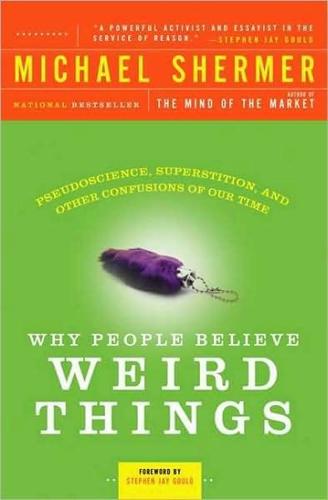
Why People Believe Weird Things: Pseudoscience, Superstition, and Other Confusions of Our Time
by
Michael Shermer
Published 1 Jan 1997
Today we may view him as an unusual blending of ethnic backgrounds, but a thousand years from now all humans may look like this, and historians will look back upon this brief period of racial segregation as a tiny blip on the screen of the human career spanning hundreds of thousands of years. If the "Out of Africa" theory holds true, then it appears a single race migrated out of Africa (probably "black") that then branched out into geographically isolated populations and races with unique features to each, and finally merged back into a single race with the onset of global exploration and colonization beginning in the late fifteenth century.
…
Further, the abduction experience itself is often a memory reconstructed through "regression hypnosis," which makes external validation even more difficult. Yet historical events can be tested. External validation is possible. For example, classicist Mary Lefkowitz has written a thoughtful reply to Afrocentric claims that Western civilization, philosophy, science, art, literature, and so on came out of Africa, not Greece and Rome. Her book, Not Out of Africa, raised storms across America, and she was accused of being everything from racist to politically incorrect. Lefkowitz wrote her book after attending a lecture given in February 1993 at Wellesley College (where she teaches) by Dr. Yosef A. A. ben-Jochannan, a noted extreme Afrocentrist.
…
For another thing, how far back does one go in history? Native Americans are really Asians, if you go back more than twenty or thirty thousand years to before they crossed the Bering land bridge between Asia and America. And Asians, several hundred thousand years ago probably came out of Africa, so we should really replace "Native American" with "African-Asian-Native American." Finally, if the Out of Africa (single racial origin) theory holds true, then all modern humans are from Africa. (Cavalli-Sforza now thinks this may have been as recently as seventy thousand years ago.) Even if that theory gives way to the Candelabra (multiple racial origins) theory, ultimately all hominids came from Africa, and therefore everyone in America should simply check the box next to "African-American."
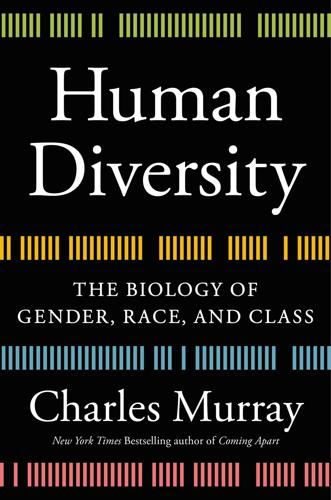
Human Diversity: The Biology of Gender, Race, and Class
by
Charles Murray
Published 28 Jan 2020
How the Earth Was Peopled This body of theoretical work became especially relevant as paleontologists and then geneticists found compelling evidence for what is known as the Out-of-Africa explanation of human expansion. It started out simple. It is now exceedingly complex and becoming more so. Around 6 million years ago, the first hominins diverged from chimpanzees, becoming fully bipedal sometime more than 4 million years ago.8 Homo habilis, who was bipedal and apparently used stone tools, appeared about 2.5 million years ago. About 2 million years ago came our likely direct ancestor, Homo erectus. Hominins first expanded out of Africa around 1.8 to 2.1 million years ago and eventually spread throughout Eurasia.9 LABELS FOR OUR ANCESTORS Hominins: Refers to all branches of the human family, modern and extinct.
…
Anatomically modern humans: This term, abbreviated AMH in the technical literature, refers to archaic Homo sapiens who had globular brain cases and other physiological traits of Homo sapiens but did not leave behind substantial evidence of cultural accouterments (art, burials, ornament, musical instruments).11 Until the late 1980s, three theories competed to explain where and how Homo erectus became Homo sapiens.12 The oldest of these was Franz Weidenreich’s multiregional hypothesis, dating back to the 1940s, arguing that evolution from Homo erectus to anatomically modern humans happened contemporaneously throughout Africa and Eurasia but with continual gene flow across regions during the process.13 In the early 1960s, Carleton Coon countered with the “candelabra hypothesis,” arguing that anatomically modern humans had evolved along separate lines in Africa, Europe, and Asia.14 The third theory was the Out-of-Africa hypothesis. It emerged in the 1980s as paleontologists realized that the oldest fossil remains of anatomically modern humans were always being found in eastern Africa, not in Europe or Asia. Genetics entered the debate in 1987 when geneticist Rebecca Cann used mitochondrial DNA, which is inherited solely from the mother, to argue that all of today’s humans are descended from a single female who lived sometime between 99,000 and 148,000 years ago.15 A year later, paleontologists Christopher Stringer and Peter Andrews combined the genetic evidence with the growing paleontological record to make the case that anatomically modern humans had evolved exclusively within Africa and only thereafter expanded to the rest of the world.[16] By the end of the 1980s, the circumstantial evidence for the Out-of-Africa model had won over a majority of the scientists working on the problem, but definitive evidence required more detailed access to the genome.
…
Genetics entered the debate in 1987 when geneticist Rebecca Cann used mitochondrial DNA, which is inherited solely from the mother, to argue that all of today’s humans are descended from a single female who lived sometime between 99,000 and 148,000 years ago.15 A year later, paleontologists Christopher Stringer and Peter Andrews combined the genetic evidence with the growing paleontological record to make the case that anatomically modern humans had evolved exclusively within Africa and only thereafter expanded to the rest of the world.[16] By the end of the 1980s, the circumstantial evidence for the Out-of-Africa model had won over a majority of the scientists working on the problem, but definitive evidence required more detailed access to the genome. In 1991, population geneticist Luigi Luca Cavalli-Sforza of Stanford University initiated the Human Genome Diversity Project (HGDP). Geneticists around the world had been collecting blood samples and other data from different populations.
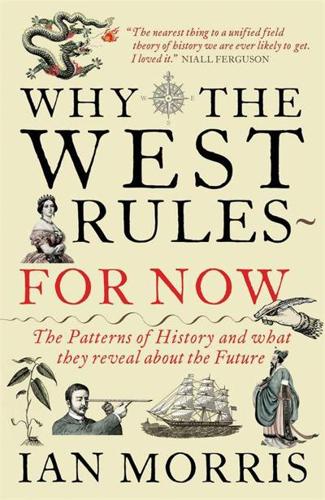
Why the West Rules--For Now: The Patterns of History, and What They Reveal About the Future
by
Ian Morris
Published 11 Oct 2010
Instead of dying out so often, bands of modern humans grew big enough and numerous enough to stay in regular contact, pooling their genes and know-how. Change became cumulative and the behavior of Homo sapiens diverged rapidly from that of other ape-men. And once that happened, the days of biological distinctions between East and West were numbered. OUT OF AFRICA—AGAIN Figure 1.3. The unity of mankind restored: the spread of fully modern humans out of Africa between roughly 60,000 and 12,000 years ago. The numbers show how many years ago humans arrived in each part of the world and the coastlines represent those of the late Ice Age, around 20,000 years ago. Climate change is rarely simple, and while Homo sapiens’ homelands in eastern and southern Africa were getting wetter seventy thousand years ago, North Africa was drying out.
…
(Reproduced from the Illustrated London News volume 12, April 1, 1848, p. 222) Figure I.2. The British ship Nemesis in action on the Yangzi River, 1842. (National Maritime Museum. Copyright © National Maritime Museum, Greenwich, London) Figure 1.1. Locations mentioned in Chapter 1 Figure 1.2. The Movius Line Figure 1.3. The spread of modern humans out of Africa, 60,000–14,000 years ago Figure 1.4. The Altamira cave paintings. (Kenneth Garrett/National Geographic Image Collection) Figure 1.5. Finds of cave paintings and portable art in Europe Figure 1.6. The Hohle Fels “Venus” figurine. (Copyright © University of Tübingen, photo by H. Jensen) Figure 2.1.
…
Instead, Eastern sites produced rougher tools much like the pre-Acheulean finds associated with Homo habilis in Africa. If the so-called Movius Line (Figure 1.2) really does mark the beginning of separate Eastern and Western ways of life, it could also provide an astonishingly long-term lock-in theory—one holding that almost as soon as ape-men moved out of Africa, they divided between Western/technologically advanced/Acheulean hand ax cultures in Africa and southwest Asia and Eastern/technologically less advanced/flake-and-chopper cultures in East Asia. No wonder the West rules today, we might conclude: it has led the world technologically for a million and a half years.

The New Nomads: How the Migration Revolution Is Making the World a Better Place
by
Felix Marquardt
Published 7 Jul 2021
We don’t simply migrate to escape crises, but for all kinds of other reasons besides. The urge to migrate, to quest, to go on a journey, is deep-seated – ancestral, essential and instinctive. If we had no instinct to migrate, the entire human species would still be in Africa. We may even have died out. This instinct led Homo erectus and other early humans out of Africa in successive waves some 1.9 million years ago. Our closer ancestors with bigger brains followed a similar path and populated every continent save Antarctica from 70,000 BC onwards. Even leaving out our distant forbears, 98 per cent of our time on earth as anatomically modern humans has been spent as slowly migrating small groups of hunting and gathering nomads.
…
Ultimately, it is about finding our Heimat; the place we all long for deep inside. The Hebrew term Teshuva (תשובה), which means repentance or salvation, has as its root shuv, to turn or return. By extension, it also means ‘to come home’. The title of this book is a tribute to the continuum between migrants, old and new, from our earliest pioneering ancestors who walked out of Africa, to today’s young people who are bravely migrating to, away from, and within every continent on the planet. But I am also deeply interested in nomadism as a way of living. Pre-agricultural nomads were both highly mobile and deeply rooted to a place. We have spent the vast majority of our time on earth as nomadic hunters and gatherers, working in small groups of less than one hundred individuals.
…
Aaron (ranch mechanic, Montana) 3, 4, 5, 7–8, 14, 166, 234 Abkhazia 175–7, 178 Achour, Mouloud 124, 125 Afghanistan 3, 9, 10, 84, 140 Africa 20–1, 44, 53, 83–4, 96–7, 220 African American immigrants in 63, 67–8, 114–15 China, African immigrants in 130–9 climate change and 90, 217 emigration to 83–5, 93–9, 100, 102, 107, 114–15, 119, 122, 229, 236 entrepreneurship in 75–90 Europe, African migrant journeys to 9, 122, 148–50, 152, 157, 160, 238 Europe, African refugees in 9, 148–57, 158, 161, 167, 229, 236, 238 France, African immigrants in 38, 52, 115, 124 gerontocracy in 126–7 ‘out of Africa’ migration of early humans 9, 18, 69 racism in 7, 115 US, African immigrants in 1–8, 12, 13–14, 21–2, 47, 59, 68, 133, 206, 218, 224, 232–4, 233, 234, 235, 238, 241 African American 44, 111–15 agricultural revolution 222, 227, 228 air travel 73, 198, 214, 216–18 Allt, Nicky 59–63, 68, 220, 229 Al Sarajj, Mustafa 179–82 American Civil War (1861–5) 1 American dream 20, 35, 72, 73, 81, 196, 211, 234 American Exceptionalism 28, 35 American Family Radio 3 Amore Gelato 143–4 Andreotti, Vanessa 238 Aneesa (entrepreneur) 75–6, 79, 80, 81, 82 anywheres (self-perceived as mobile, educated and progressive) and somewheres (more grounded and ‘real’, conservatives rooted in the place of their birth) divide 41, 223, 234, 236 Anzisha Prize 99 Apothéose (group of rappers) 45–6, 48 Arabo-centrism 24–5 Asquith, James 195 asylum seekers 152, 158, 161, 167 see also refugees Atsoko 84–5 Attali, Jacques 188, 195 Augustine of Hippo: The City of God 20–1 Australia 1, 47, 72, 73, 96, 161, 162, 178 emigration to London from 102–7 migration to 72–3, 102–4, 126, 140 Austria 24, 26, 36, 41, 42, 47, 62 banlieue, Paris 51, 55, 115 ‘Barrez-vous!’
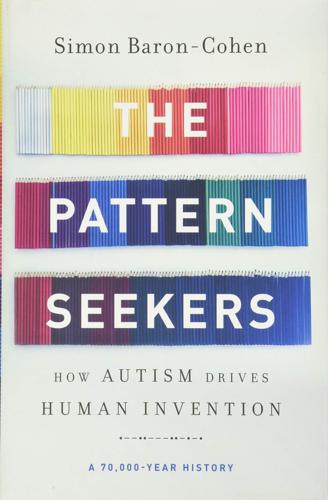
The Pattern Seekers: How Autism Drives Human Invention
by
Simon Baron-Cohen
Published 14 Aug 2020
We’ll look at the genetic evidence later, but suffice it to say that polygenic traits (traits involving many genes, each having a small effect) typically evolve gradually, not abruptly.21 Taking the wider time window of around 100,000 years ago for the cognitive revolution, it is interesting to speculate on the influence of the cognitive revolution on the two major dispersals by humans out of Africa—one 108,000 years ago, when they went to the Levant and coexisted with the Neanderthals, and the other 50,000 years ago that led to humans replacing the Neanderthals by 40,000 years ago.22 Humans ended up in what today we call Australia by 40,000 years ago and in what today we call North America by 16,000 years ago. Were these dispersals out of Africa and across the world caused by the cognitive revolution as humans began to be able to invent new complex tools (like boats) and complex ways of understanding the natural world (like reading the stars) to navigate continents?
…
The first barbecues would have been our ancestors’ cooking what they caught. Aside from cooking, fire most obviously provided our ancestors with light, enabling them to live in caves and see in the dark, as well as to scare away lions and other predators. And it enabled our ancestors to stay warm in colder environments as they moved out of Africa. Later, the domestication of fire would lead to a suite of other things, like baking clay to create ceramic objects, heat-treating stones to create stronger tools, and clearing forests for planting. But these last functions of fire would not have been relevant to Homo erectus, because there is no evidence that they engaged in any of them.
…
There is some debate about whether Homo habilis was the first hominid to use tools, as Australopithecus garhi, who lived 2.6 million years ago, has been found with some stone tools, and this would have been 100,000 to 200,000 years earlier than Homo habilis. See S. Oppenheimer (2004), The real Eve: Modern man’s journey out of Africa (New York: Carroll and Graf). For a useful online resource from Oppenheimer’s research group, including a discussion on whether any of the other gracile Australopithecines used stone tools, see Bradshaw Foundation, www.bradshawfoundation.com. 3. The main change in the tool-making of Homo erectus was that they made their axes symmetrically; working on both sides, they produced a tool that allowed for more uses, such as slicing.

Beyond: Our Future in Space
by
Chris Impey
Published 12 Apr 2015
To be an emissary of Earth in the late twenty-first century. To be in a small group chosen for a unique experiment. The experiment was designed by sober scientists and engineers but it had the trappings of madness. We were human seedlings, charged with taking root in a new world. 1 Dreaming of Beyond _______________________ Out of Africa When we were just one million strong, did we dream about what lay beyond? Two hundred thousand years ago, anatomically modern humans first emerged in Northeast Africa.1 The cradle of our creation was the place now known as Ethiopia. Over the next hundred thousand years, these humans spread across Africa.
…
Those artifacts speak of a rugged, doughty species that ceremonially buried their dead, hunted with sharpened flints made into spears and arrows, and daubed paint on cave walls to record the iconography of their lives. Their evocative images, which must have seemed kinetic in the flickering glow of an oil lamp or a fire, speak to us across the millennia of their fears and dreams. Modern genetic techniques have allowed us to reconstruct their journey out of Africa—an epic migration as audacious as our first steps into space many millennia later. Life on Earth is united by a single genetic code. A four-letter alphabet of base pairs encodes the unique function and form of every organism. The four bases—A for adenine, C for cytosine, G for guanine, and T for thymine—form the rungs of the twisted ladder that is DNA.
…
The route from the Horn of Africa to the Arabian Peninsula was probably across the Bab el-Mandeb strait. Today that strait is one of the world’s busiest shipping lanes; at that time, after the last ice age had lowered sea levels, it was merely a narrow, shallow channel. The tribe that ventured out of Africa may have been only a few thousand strong. It was not a single expedition but a series of small clans of loosely related family members leaving over a period of centuries. They prospered as they dispersed, starting settlements in Central Asia and then in Europe. By 50,000 years ago, they had spread to southern China and Australia.
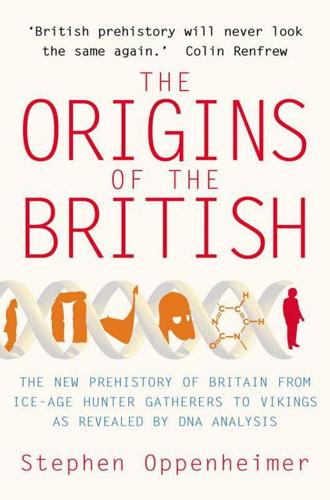
The Origins of the British
by
Stephen Oppenheimer
Published 1 Jul 2007
I have also retained some alliterative and biblical names from my previous book, Out of Eden, such as the out-of-Africa Y-line founder Adam and his three descendent lines, Cain, Abel and Seth. There is no intention in adopting such names to infer any deeper meaning – they are simply aides-mémoires. The mtDNA picture is slightly easier. Many of the different labs agreed at an early stage to try to use a single nomenclature (perhaps there was less testosterone involved in the process!). For instance, there are two agreed non-African daughter and granddaughter lines relevant to the colonization of Europe and Western Eurasia in general: N, from the single out-of-Africa line L3, and her daughter R.
…
It turns out that the oldest changes in our mtDNA (i.e. the earliest in the tree) took place in Africa between 190,000 and 150,000 years ago. Then new mutations start to appear in Asia, about 80,000 to 60,000 years ago. This tells us that modern humans evolved in Africa, and that 80,000 years ago some of us began to migrate out of Africa into Asia. It is important to realize that because of the random nature of individual mutations, the dating is only approximate. Various mathematical ways of dating population migrations were tried during the 1990s with varying degrees of success, but in 1996 a method was established which dates each branch of the gene tree by averaging the number of new mutations in daughter types of that branch.2 This method (estimation of rho) has stood the test of time, and is the main approach used to calculate the mtDNA genetic dates I give in this book.
…
Gene group boxes for Europe are labelled in consensus nomenclature5 qualified after Capelli,11 with relevant nicknames Ruisko, Ivan and Rostov below. These three clusters are expanded respectively in Figures A4 to A6. The dotted lines indicate major world gene groups A, B and C not represented in Europeans; nicknames are shown for the common male ancestor and the three out-of-Africa lines.8 (Haplogroups are based on ‘unique event polymorphisms’ – labelled horizontal lines along branches; branch length does not represent age.) After dividing the entire composite dataset of 3,084 into gene groups and sub-groups, I then ranked the haplotypes within each group.15 As found previously,16 within each group there were several groups of related gene types clustering around a common or modal haplotype.
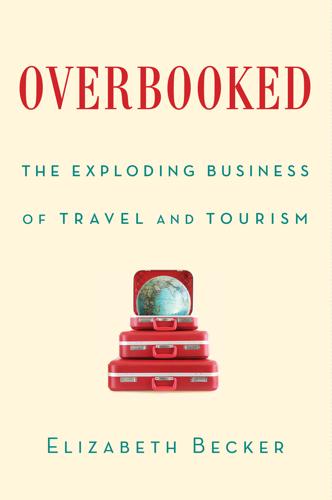
Overbooked: The Exploding Business of Travel and Tourism
by
Elizabeth Becker
Published 16 Apr 2013
Silvers Associates, 32 Mugabe, Robert, 209, 237 Muller, Margit Gabriele, 198 Murano glass, 80–81, 83–84 Murkowski, Frank, 160 Musée d’Orsay, 56 Muslims: Hajj pilgrimages of, 17–18, 167, 170, 181–85 Umrah pilgrimages of, 181, 185 Mvula, Evelyn, 231–32 Nader, Ralph, 266 NagaWorld, 113–14 Nairobi, Kenya, 244 Nakheel, 179 Namibia, 208, 209, 233 Namugala, Catherine, 229, 232–33, 237 National (Abu Dhabi), 189 National Academy of Sciences, 381 National Geographic, 24–25, 31, 91, 154–155, 239, 246, 255, 257, 262, 266, 268 Center for Sustainable Destinations of, 155, 267 National Geographic Traveler, best vs. worst lists in, 267–68 National Museum of Modern Art, France, 56 National Museums of Kenya, 221 national parks, tourism and, 208–9, 220, 221, 252, 253, 382–84 National Park System, U.S., 38, 346, 382–83 National Review, 165 National Travel and Tourism Strategy, U.S., 365–66 Nature Conservancy, 259 Navigator of the Seas, The (cruise ship), 125–26, 143, 246 Negombo, Sri Lanka, 286 Nevada, 371 Newhouse, Nancy, 29–30 Newman, Stuart, 26–27, 31 newspapers, tourism industry advertising in, 11, 26, 28, 33 Newsweek, 169 New World Development Company, 313 New York, N.Y., 365 New Yorker, 32, 239 New York Times, 65, 379 tourism industry advertising in, 28 New York Times Travel section, 27–31 breadth of coverage by, 27–29 consumer pieces emphasized in, 29–31 gifts and free travel refused by, 27 New Zealand, 194 Chinese tourists in, 307–8 Foreign Ministry of, 162 tourism industry in economy of, 308 Nicaragua, civil war in, 254 Nides, Thomas R., 363–64 Nippon Television of Japan, 39 Nissan Shipping Building, 325 Noble Radiance, A (Leon), 85 nonprofits, cruise ship industry and, 165 Normandy, France, 51 Norodom Sihamoni, King of Cambodia, 112 North Luangwa Park, 223 Norway, 162–63 Zambian aid from, 224–25 Nouvel, Jean, 191 nuclear power, 195 Nuseibeh, Sari, 28 Obama, Barack, 134, 244, 271–72, 348, 387, 388 in 2012 election, 364–65, 366–67 and 2016 Olympics bid, 361–62 U.S. tourism industry and, 360–65 Obama, Michelle, 361 Obama administration, National Travel and Tourism strategy of, 365–66 oceans, pollution of, 20, 34, 156–63, 196–97 Oduber, Daniel, 258 Ofer, Sammy, 134 Olympic National Park, 383–84 Olympics: of 1992 (Barcelona), 350 of 1996 (Atlanta), 350, 351 of 2008 (Beijing), 163, 293–94, 322, 323, 333 of 2010 (Vancouver), 163, 293 of 2016 (Rio de Janeiro), 273, 276, 362 U.S. travel restrictions and, 361–62 Oman, 172 Ondaatje, Michael, 282 Oppenheimer, Nicky, 240 Oppenheimer, Strilli, 240 Organisation for Economic Co-operation and Development, 16, 348–49 Organization of American States, 251 Orlando, Fla., 370 Orly airport, 171 Orset, Christophe, 73–74 Osa Peninsula, 258–60 Ottoman Empire, 182 Out of Africa (Dinesen), 207 Out of Africa (film), 207, 211, 220 Out of the Rock Comes Life, 336 overconsumption, in UAE, 169–70, 196 Owen-Edmunds, Libby, 280 Pacheca island, 248 Pachequilla island, 248 Pacific Asia Travel Association, 287 Paggiarin, Claudio, 35–36, 78–79, 82 Palestinians, 185 Palin, Sarah, 165 Palm Jumeirah, 178 Panama, 157, 161 national parks of, 249 ship registry of, 140 Panama Canal, 247–48 Pan American Airways, 27 pandas, 335–38 “panther path,” 262 Papi, Daniela Ruby, 103 Parayil, Gopinath, 263 Paris, France, 70–72 as center for business meetings, 53 Twain’s love of, 50 Universal Exposition (1889) in, 50 Parker, Robert, 65–66 Park West Gallery, 131, 147–48 Parnell, Sean, 161 partisan politics, tourism policy and, 366–67 Patients Beyond Borders, 379 Patrick, Deval L., 374 Payton, Donald L., 148 Peace Corps, 228 Pei, I.
…
Eventually those endless hours spent looking at animals in well-appointed enclosures rearranged my images of wildlife. The raccoons and possums that prowled our backyard at night were wild. The animals in those cages were not. That could be one reason why I never jumped at the suggestion of going on an African safari. I’d read Isak Dinesen’s autobiographical novel Out of Africa about her life in turn-of-the-twentieth-century Kenya and saw the movie adaptation starring Meryl Streep and Robert Redford. This was beautiful, romantic Africa seen through the eyes of privileged Europeans who killed buffalo, lions and antelope, who eventually understood the harm being done and, too late, mended their ways.
…
To attract more tourists and encourage them to spend more days and money on the continent, the industry offers packages of visits to three and four wildlife camps in different countries, trumpeting what officials call their sublime “nature base” tourism. One visit to the Johannesburg airport, the massive air hub of the region, says it all. The shopping area of the terminal is kiosk after kiosk of safari-themed clothes, toys, gadgets and books. It is called, naturally, “Out of Africa.” Despite some attractive marketing, the parks are not on firm footing. The checkered history and modern pressures have created considerable problems: poaching, corruption, deforestation and, above all, encroaching human settlements. The promise is singular for the industry: without those animals, the industry would shrink, and with it the $76 billion in revenue tourism brings to the continent every year.
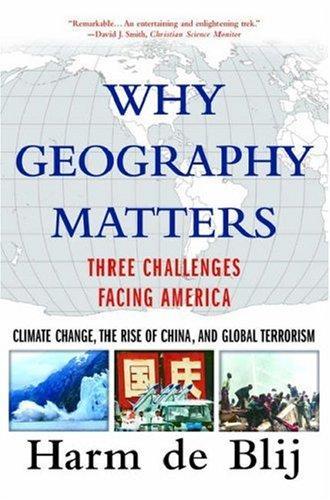
Why geography matters: three challenges facing America : climate change, the rise of China, and global terrorism
by
Harm J. De Blij
Published 15 Nov 2007
The worsening of Cenozoic Ice Age conditions, of course. Before Miocene climatic conditions deteriorated, the global environment, though cooler than it had been during the Oligocene, remained fairly stable (Fig. 3-4). During that time, the descendants of Proconsul and other early apes probably moved out of Africa into environmentally diverse Eurasia, where forest habitats varied widely and relatively warm temperatures ensured an ample supply of fruits and other forage. Now Eurasia, not Africa, was the heartland of differentiation and adaptation for the great apes, and numerous lineages evolved, some of them now part of the known fossil record.
…
Eventually and ironically, descendants of Dryopithecus and Sivapithecus would come face to face—but not ape to ape. When interglacials in the late Pliocene warmed the Earth enough to revive forests and refill desiccated lakes, Africa's hominids did what early Miocene apes had done before them: migrate WHY GEOGRAPHY MATTERS EARLY PRIMATE DISPERSALS Fig. 3-5 out of Africa into Eurasia. And so the first of these emigrants, Homo erectus, moved across Arabia and southern Asia and, one day somewhere in Malaya or on Java or Borneo, saw a creature that, if the trip had been swifter, would have reminded her of the chimpanzees and gorillas left behind in Africa. Orangutan and hominid had closed a 9-million-year circle.
…
When the first modern humans (the Cro-Magnons, as they are known) reached Europe from India via the Middle East and found the Neanderthals, and earlier Homo species, on the scene, they quickly overwhelmed them with their complex culture ranging from cave art to tool kits and from EARTH'S CHANGEABLE ENVIRONMENTS 71 Fig. 3-7 inventive fishing gear to sewn clothing. They lived in cooperative communities and used sophisticated language, and thus modern humans had all the advantages over the survivors of earlier out-of-Africa migrations. Their technology gave them the opportunity to cope with the Wisconsinan's climatic swings: in milder times they expanded their frontiers, and when it got colder they devised ways to cope with increasingly harsh environments. That is why paleoanthropologists are finding fossil evidence of human settlements in Europe that survived through pretty severe cold periods.
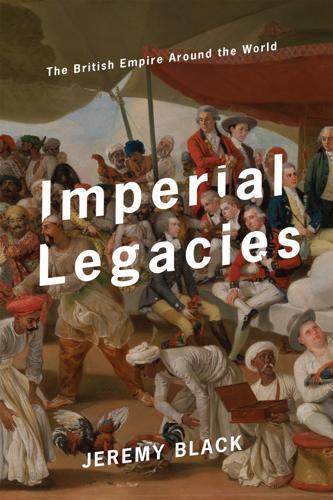
Imperial Legacies
by
Jeremy Black;
Published 14 Jul 2019
Separately, and again helping to “locate” British and American imperialism, Athens and Rome, as their alleged forbears, have recently been criticized for their imperial policies and for denigrating other cultures. Thus, in the “out of Africa” debate, an alleged modern Western failure to appreciate the strengths of African culture, more specifically, the alleged failure adequately to acknowledge the African character of Ancient Egypt, and its influence on Greece and the Western tradition, was traced to Classical influences as well as to Western racism. Criticizing Athens and Rome becomes part of a pattern of trashing the Western legacy, a pattern that locates, and is located by, the critiques of British and American imperialism. In the case of the “out of Africa” debate, this is highly problematic and, as generally discussed, a product of tendentious modern anti-Western views.11 Some of the Classical Greeks, most prominently Demosthenes (c. 383–322 BCE) in his Philippics, developed anti-imperial language against the expansionist menace of Philip of Macedon (r. 359–336 BCE).
…
Luttwak, The Virtual American Empire: War, Faith, and Power (New Brunswick, NJ: Transaction Publishers, 2009); A. G. Hopkins, American Empire: A Global History (Princeton, NJ: Princeton University Press, 2018). 10 Herman Lebovics, Imperialism and the Corruption of Democracies (Durham, NC: Duke University Press, 2006). 11 Mary Lefkowitz, Not Out of Africa: How Afrocentrism Became an Excuse to Teach Myth as History (New York: Basic Books, 1996); Ronald H. Fritze, Invented Knowledge: False History, Fake Science and Pseudo-Religions (London: Reaktion Books, 2009), 251–56. 12 Richard Hingley and Christina Unwin, Boudica: Iron Age Warrior Queen (London: Bloomsbury Academic, 2005). 13 Christopher Hagerman, British Imperial Muse: the Classics, Imperialism and the Indian Empire, 1784–1914 (Basingstoke, UK: Palgrave Macmillan, 2013); Joanna de Groot, Empire and History Writing in Britain. c. 1750–2012 (Manchester: Manchester University Press, 2013). 14 Joanne Parker, England’s Darling: The Victorian Cult of Alfred the Great (Manchester: Manchester University Press, 2007); Roy Strong, And When Did You Last See Your Father?
…
For your reference, the terms that appear in the print index are listed below. 1765 Stamp Act 1925 Geneva Gas Protocol 1966 Defence White Paper Abolitionism Aborigines abroad, term Act for the Abolition of the Slave Trade Act in Restraint of Appeals Acton, John Aden Afghan war Africa; North Africa; out of Africa, debate; Scramble for Africa; South Africa; West Africa ahistoricism air policing alien, word Amelioration American Civil War Amin, Idi amnesia; enforced; historical; imperial; postimperial; term Amritsar Massacre Ancient Roman Empire and the British Empire in India, The Anglo-Chinese Opium Wars Anglo-Irish Treaty Anglosphere apartheid apologist Appeasement Arminius Arrow Asian Civilisations Museum assimilation Atlantic slavery Attlee, Clement Atwal, Jaspal Australia Australasia Ayers Rock National Park Baden-Powell, Robert banal imperialism Bashford, Alison Bathos Battle of Koregaon Bavaria Bean, Richard Beckles, Hilary Bengal famine Benn, Tony Wedgwood Bevin, Ernest Biggar, Nigel BJP (Bharatiya Janata Party) Black Armband view Black Hole of Calcutta Blair, Tony Blighty UK Café Boer War Bolshevism Bose, Subhas Chandra Boston Tea Party Boudicca Braveheart (film) Bringing Them Home, report Britain’s Empire: Resistance, Repression and Revolt British Empire; placing, question of British Empire Exhibition bubble, term Bulwer-Lytton, Edward Burma.
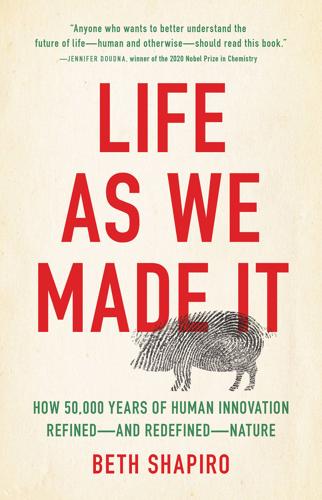
Life as We Made It: How 50,000 Years of Human Innovation Refined--And Redefined--Nature
by
Beth Shapiro
Published 15 Dec 2021
After the Neanderthal/Denisovan split but before 125,000 years ago (when the mitochondrial sequence that is evolutionarily more similar to ours is observed in a Neanderthal in Germany), modern humans may have moved out of Africa much earlier than the fossil record suggests, mated with western Neanderthals, and then disappeared. At least some western Neanderthals inherited mitochondrial DNA from these early modern humans. Neanderthals carrying this early modern human mitochondrial DNA then dispersed eastward, where they ran into and mated with Denisovans. Sometime after 70,000 years ago, modern humans moved out of Africa and into Europe again, this time with more enduring success. There, they encountered and mated with Neanderthals again.
…
Only a decade ago, a scientist arguing in favor of two separate African exoduses might have been laughed off the presentation stage, but evidence is accumulating from both genomics and archaeology that supports this idea: 200,000-year-old Neanderthal fossils from Germany with DNA evidence that their ancestors already had intimate liaisons with Homo sapiens, a 180,000-year-old Homo sapiens jawbone from a cave in Israel, and Homo sapiens teeth and other skeletal remains dating to between 70,000 and 125,000 years ago from four caves in China. If these fossils, dates, and ancient DNA data are indeed evidence of an earlier wave of modern humans dispersing out of Africa, then it is possible that some of these people made it to Sahul, and then to Madjedbebe by 65,000 years ago. But then what happened? As of yet, no other archaeological site in Australia dates to within 10,000 years of Madjedbebe, and no DNA evidence has been recovered from these earliest Australians.
…
Our work using sedimentary ancient DNA to determine when and why mammoths became extinct on St. Paul Island, Alaska, is presented in Graham et al. (2016). Rogers and Slatkin (2017) show from nuclear genomic data that the last surviving Wrangel Island mammoths were declining due to the effects of inbreeding. An early wave of human dispersal out of Africa is supported by genetic evidence of hybrid Neanderthals in Germany and Belgium (Peyrégne et al. 2019) and fossils attributed to Homo sapiens that date to more than 70,000 years ago from China (Liu et al. 2015) and Israel (Hershkovitz et al. 2018). Dating analyses of the Madjedbebe archaeological site in Australia are presented in Clarkson et al. (2017).
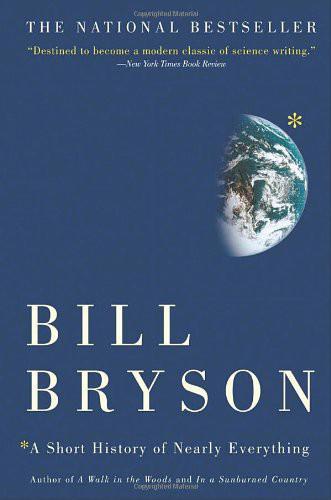
A Short History of Nearly Everything
by
Bill Bryson
Published 5 May 2003
Swisher et al., p. 189. 17 “people began to look a little more closely . . .” Scientific American, “Is Out of Africa Going Out the Door?” August 1999. 18 “DNA from the arm bone of the original Neandertal man . . .” Proceedings of the National Academy of Sciences, “Ancient DNA and the Origin of Modern Humans,” January 16, 2001. 19 “all modern humans emerged from Africa . . .” Nature, “A Start for Population Genomics,” December 7, 2000, p. 65, and Natural History, “What's New in Prehistory,” May 2000, pp. 90–91. 20 “more diversity in one social group of fifty-five chimps . . .” Science, “A Glimpse of Humans' First Journey Out of Africa,” May 12, 2000, p. 950. 21 “In early 2001, Thorne and his colleagues . . .”
…
Then, beginning about five million years ago, Panama rose from the sea, closing the gap between North and South America, disrupting the flows of warming currents between the Pacific and Atlantic, and changing patterns of precipitation across at least half the world. One consequence was a drying out of Africa, which caused apes to climb down out of trees and go looking for a new way of living on the emerging savannas. At all events, with the oceans and continents arranged as they are now, it appears that ice will be a long-term part of our future. According to John McPhee, about fifty more glacial episodes can be expected, each lasting a hundred thousand years or so, before we can hope for a really long thaw.
…
In older textbooks, Oldowan tools are usually shown as blunt, rounded, hand-sized stones. In fact, paleoanthropologists now tend to believe that the tool part of Oldowan rocks were the pieces flaked off these larger stones, which could then be used for cutting. Now here's the mystery. When early modern humans—the ones who would eventually become us—started to move out of Africa something over a hundred thousand years ago, Acheulean tools were the technology of choice. These early Homo sapiens loved their Acheulean tools, too. They carried them vast distances. Sometimes they even took unshaped rocks with them to make into tools later on. They were, in a word, devoted to the technology.
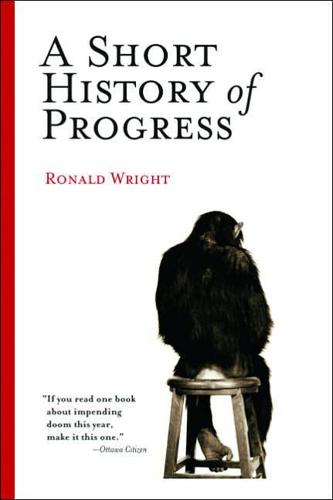
A Short History of Progress
by
Ronald Wright
Published 2 Jan 2004
One camp, that of the “multiregional” hypothesis, sees Homo erectus evolving by fits and starts into modern humanity wherever he happened to be through gene diffusion, otherwise known as mating with strangers. This view seems to fit well with many of the fossil finds but less well with some interpretations of DNA. Another camp — the “Out of Africa” school — sees most evolutionary change taking place on that continent, then erupting over the rest of the world.25 In this second view, successive waves of new and improved humans kill off, or, at any rate, outcompete, their forerunners wherever they find them, until all the lowbrows are gone.
…
Christopher Stringer and Robin McKie, African Exodus: The Origins of Modern Humanity (New York: Henry Holt/John Macrae, 1997), p. 11. At the start of the Upper Palaeolithic, about 35,000 years ago, Stringer estimates that Homo sapiens had “a breeding population of at least 300,000.” Ibid., p. 163. 25. For the Out of Africa hypothesis, see Stringer and McKie, African Exodus. For opposing views, see recent works by M. Wolpoff, G. A. Clark, J. Relethford, and F. H. Smith. For a balanced overview, see Richard Leakey and Roger Lewin, Origins Reconsidered: In Search of What Makes Us Human (New York: Doubleday, 1992). 26.
…
See also bronze; iron Mexico City, 92, 111, 161n22 migrations of humans, 37, 102–3, 138n1, 147n48 missionary projects, 7 Moby Dick (Melville), 38, 142n21 moderation, 131 Monte Verde, 41, 143n26 morals of civilization, 4, 33–34 myth of progress, 4–5, 124 myths, 4 natural capital, 83, 84, 101, 117, 125, 129 natural regeneration, 102 Neanderthals, 18–26, 27, 136n29, 136n30, 137n31, 137n33, 138n37 characteristics and customs, 20, 21, 22, 137n35 relations with Cro-Magnons, 20–21, 23–26, 31, 36, 66, 138n39 need and greed, 8 New Right, 127 News from Nowhere (Morris), 120 Newton, Sir Isaac, 11, 134n14 Old Stone Age, 8, 14, 31, 32, 34–35 Olmecs, 95 onslaught of progress, 124–25 Origin of Species (Darwin), 19 Oryx and Crake (Atwood), 123 Our Final Century (Rees), 125–26, 182n54 “Out of Africa” hypothesis, 17–18, 135n25 Ovid, 88–89 Palaeolithic era, see Old Stone Age Palenque, 98, 167n55 patriotism, 49 pesticides, 181n51 Pincher Martin (Golding), 35–36, 140n12 Pisistratus, 87 plants, cultivated, see crops; domestication; farming Pollard, Sidney, 3, 4 pollen studies, 97, 169n66 pollution, 7 Polynesia, 51, 85 Pope, Alexander, 7 Popol Vuh (Maya creation epic), 118, 179n37 population Americas, 111, 113, 175n18 China, 104 cities, 91–92, 94, 160n20, 161n22 early humans, 17, 135n24 Egypt, 68–69, 103–4 and food supply, 44 Sumerian, 68, 154n38, 157n2 world, 17, 30, 44, 109, 162n33, 171n2 population growth, 32, 100, 101, 103–4, 108, 115, 128, 130, 170n71 acceleration, 109, 171n3 and warfare, 48–49 potatoes, 114, 145n33, 176n21, 176n22 poverty, 128.

A Second Chance
by
Jodi Taylor
Published 31 Dec 2012
I know this sounds like one of those violent computer games to which the security and technical sections are always challenging each other down in Hawking, but the Gates of Grief is actually the narrow stretch of water in the Red Sea, where the Horn of Africa nearly touches the Yemen, and, according to the latest research, it’s the place where our ancestors made their second and only successful crossing out of Africa, to spread across the rest of the world. I stared at him. Even after all these years, he still had the power to surprise me. ‘But sir … How …’ and then remembered he wasn’t in the best mood and was unlikely to appreciate a member of his senior staff bleating at him like a confused sheep. He raised a discouraging eyebrow but I battled on anyway.
…
‘Oh, we’re not back to that again, are we? You must learn to let go, Max.’ ‘OK, if you’re not interested …’ ‘I didn’t say that.’ I waited. ‘All right. What is it?’ ‘The Gates of Grief.’ ‘That sounds cheerful. What particular disaster are you leading me into now?’ ‘The second and only successful migration out of Africa. Sunny climate. Beach views. No crowds. Simple observation. No interaction of any kind. Anything from two days to two months. Cheap holiday.’ ‘Sounds good, actually. Yes, sign me up. Anyone else?’ ‘No,’ I said, maybe a little too quickly, but he said nothing. ‘When?’ ‘Day after tomorrow?’ ‘Fine.’
…
That line failed. As the Sahara grew even harsher, people began to look east for a way out. Which would bring them here – to the Gates of Grief. To perhaps one of the most important events in all the long story of mankind. Because DNA evidence is quite clear. There was only ever one successful migration out of Africa and every one of us – every single person outside of Africa – is descended from one of the people who made that one crossing. Estimates put the number at around two hundred to two hundred and fifty people. That’s how closely we’re all related. Something we should remember sometimes. And we were here to witness that single, successful crossing.
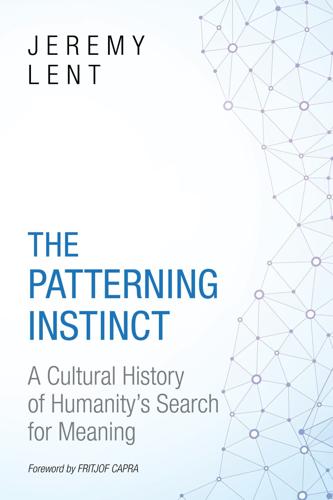
The Patterning Instinct: A Cultural History of Humanity's Search for Meaning
by
Jeremy Lent
Published 22 May 2017
It's generally agreed that humans were anatomically modern 150,000 years ago or earlier. Why did it take so long for symbolic thinking to get going? This rather awkward question was first framed by archaeologist Colin Renfrew, who referred to it as the “sapient paradox.”4 Figures 3.2 a-d: Ivory bird, “Venus,” “Lion-man” and bone flute from Hohle Fels Cave Out of Africa According to a growing number of experts, it actually did happen sooner. A lot sooner. In fact, there's evidence that the beginnings of cultural modernity may have occurred at least seventy-five thousand years ago. It's just that these early stirrings of modernity showed up not in Europe but in southern Africa.
…
Granted, some cross-hatching and engraved eggshells are not as impressive as the later explosion of symbolic thinking in Europe, but they are valuable clues to the origins of modern humans.6 In place of the Great Leap Forward, another epic story has moved into the foreground. The story, called by some “Out of Africa,” has emerged through advances in DNA analysis, which have enabled scientists to provide accurate time estimates regarding the migrations of different groups. Around seventy thousand years ago, a certain lineage of humans expanded throughout Africa, reaching as far north as Ethiopia. A small contingent, no more than a few hundred strong, then migrated across the mouth of the Red Sea, through Arabia and eastward along southern Asia until reaching Australia.
…
The significance of shamanism goes beyond its hunter-gatherer origins: it influenced agrarian cultures around the world, and elements of it can be seen in Indian Yoga, certain practices of ancient Chinese culture, and in the Aztec and Mayan civilizations of Mesoamerica.17* Why would shamanism be prevalent all around the world? There are two possible explanations. It could be because it was originally practiced by the early humans who took the first epic journey out of Africa. The original Upper Paleolithic immigrants to Europe would have brought shamanistic beliefs with them, as would their fellow travelers who migrated throughout Asia. Some of those Asian settlers then crossed the Bering Strait around thirteen thousand years ago, making it all the way down to South America within a couple of thousand years.

Happy Valley: The Story of the English in Kenya
by
Nicholas Best
Published 9 Aug 2013
She was great friends in particular with Berkeley Cole and with Denys Finch-Hatton, brother of the Earl of Winchilsea, who was her occasional lover for much of her time in Kenya. Finch-Hatton too was an interesting character, although not perhaps as remarkable as Karen Blixen liked to make out. A tall, bald aristocrat, very gifted at sport, he had been president of Pop at Eton. He was played, not entirely convincingly, by Robert Redford in the film Out of Africa. He is said to have been deep on safari once, hundreds of miles from anywhere, when a telegram reached him all the way from London. It had been carried in a cleft stick from Nairobi by relays of sweating natives who had strained every nerve to get the message to him. The telegram consisted of just one sentence: ‘Do you know Gervase Pippin-Linpole’s address?’
…
Finch-Hatton thought hard, then apparently scribbled a reply for the runner to carry through the bush back to civilisation. ‘Yes,’ he wrote. When not on safari, he spent long evenings with Karen at her house, teaching her Latin and an appreciation Greek poetry. He struck a chord in Karen that was to inspire her in later years to write what is still one of the great classics of African literature, Out of Africa. The book is the story of her farm at Ngong, of her servants and animals, of the waifs and strays both black and white who came knocking at her door for help, of attempts to juxtapose civilisation with a culture still locked firmly into the Dark Ages. The story is hardly original – all Kenya settlers could have told similar tales if they had found the time and talent to set them down – but it is written with a perception and insight that make it several cuts above other books of the period.
…
Almost the first thing Macleod did on taking office was to set up a constitutional conference aimed at preparing Kenya for independence as quickly and as decently as possible. Up until then, 1975 had been regarded as the earliest conceivable date for independence. But Macleod was a radical Tory – a bloody Communist, in the revised opinion of most settlers. He understood that the time had come for Britain to stop playing the imperial game and get out of Africa at top speed. With the full approval of the cabinet, he tore up a whole sheaf of pledges given to European settlers by previous administrations. He made it clear that the 999-year-leased white highlands were henceforth to be opened to Africans. As for compensation, if anybody was going to reimburse the settlers for all the money they had poured into their farms, it certainly wouldn’t be the British taxpayer.
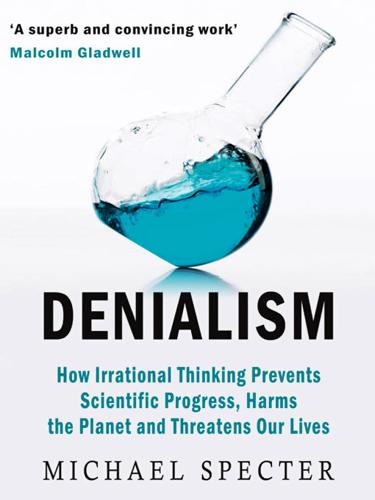
Denialism: How Irrational Thinking Hinders Scientific Progress, Harms the Planet, and Threatens Our Lives
by
Michael Specter
Published 14 Apr 2009
Some leaders simply reject Western products on principle, particularly those, like drugs and engineered crops, that are hyped as vehicles of salvation. Commerce, too, plays a role, and so does history. “The governments and citizens of Europe continue to exercise considerable postcolonial influence in Africa through a range of mechanisms,” Robert Paarlberg wrote in his 2008 book Starved for Science: How Biotechnology Is Being Kept Out of Africa. Paarlberg, who has long studied the impact of science and technology on farmers in the developing world, noted that European countries provide a great deal of technical assistance, financial aid, and nongovernmental advocacy to Africa. But nothing comes without strings attached, and African governments learned quickly that nobody in European countries had any intention of purchasing exports grown with modified seeds.
…
Collins, the renowned geneticist who led the federal effort to map the genome, pointed out that the data showed there were probably more significant genetic differences within racial groups than between them. (In 2009, Collins was named by Barack Obama as director of the National Institutes of Health.) All those comments provide support for the comforting idea of a family of man, even a society without race. Nor should such findings be surprising; we are a young species, one that migrated out of Africa and throughout the world only about one hundred thousand years ago—relatively recently in evolutionary terms. Many scientists already understood this well. In fact, during the first decade of the Human Genome Project some participants were so convinced of the homogeneity of humanity that they insisted that the genomic sequence of any one person could be used as a basic reference template for everyone else on earth.
…
Vaccinated: One Man’s Quest to Defeat the World’s Deadliest Diseases. New York: HarperCollins, 2007. ———. Autism’s False Prophets: Bad Science, Risky Medicine, and the Search for a Cure. New York: Columbia University Press, 2008. Paarlberg, Robert. Starved for Science: How Biotechnology Is Being Kept Out of Africa. Cambridge, MA: Harvard University Press, 2008. Pauly, Philip J. Controlling Life: Jacques Loeb and the Engineering Ideal in Biology. New York: Oxford University Press, 1987. Pennock, Robert T., ed. Intelligent Design Creationism and Its Critics: Philosophical, Theological, and Scientific Perspectives.
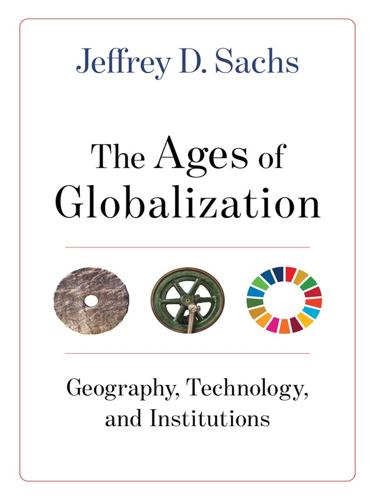
The Ages of Globalization
by
Jeffrey D. Sachs
Published 2 Jun 2020
Some were sent to North America, where slave labor would take hold as the basis of the cotton empire in the colonies that would become the southern United States after the American War of Independence. 6.7 The Slave Trade from Africa, 1500-1900 Source: Eltis & Richardson, ATLAS OF THE TRANSATLANTIC SLAVE TRADE (2010), Map 1 from accompanying web site, Overview of Slave Trade out of Africa, 1500–1900. Reproduced with the permission of Yale University Press. African slaves powered the new plantation and mining economies of the Spanish, Portuguese, and British colonies, especially in the tropical regions. The most important plantation commodity was sugar, grown in northeast Brazil and the Caribbean, which together accounted for the vast preponderance of slave arrivals to the Americas, and also the Peruvian coast.
…
Philosophical Transactions of the Royal Society B: Biological Sciences 366, no. 1567 (2011): 1060–69. https://doi.org/10.1098/rstb.2010.0340. Eltis, David, and David Richardson. Atlas of The Transatlantic Slave Trade. New Haven, CT: Yale University Press. Map 1 from accompanying web site, Overview of Slave Trade out of Africa, 1500–1900. Reproduced with the permission of Yale University Press. Everson, S. ed. Aristotle: The Politics and the Constitution of Athens. Cambridge: Cambridge University Press, 1996. Fernihough, Alan, and Kevin HjortshØj O’Rourke. Coal and the European Industrial Revolution. No. w19802. National Bureau of Economic Research, 2014.
…
“Estimates of regional and global life expectancy, 1800–2001.” Population and Development Review 31, no. 3 (2005): 537–43. Rito, Teresa, Daniel Vieira, Marina Silva, Eduardo Conde-Sousa, Luísa Pereira, Paul Mellars, Martin B. Richards, and Pedro Soares. “A Dispersal of Homo Sapiens from Southern to Eastern Africa Immediately Preceded the Out-of-Africa Migration.” Scientific Reports 9, no. 1 (2019): 4728. https://doi.org/10.1038/s41598-019-41176-3. Robinson, Andrew. The Story of Writing. London: Thames & Hudson, 2007. Rossel, Stine, Fiona Marshall, Joris Peters, Tom Pilgram, Matthew D. Adams, and David O’Connor. “Domestication of the Donkey: Timing, Processes, and Indicators.”
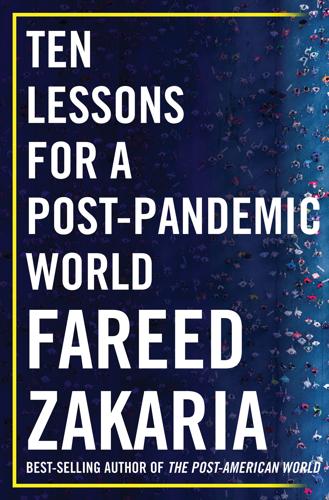
Ten Lessons for a Post-Pandemic World
by
Fareed Zakaria
Published 5 Oct 2020
McKinsey Global Institute, “Globalization in Transition: The Future of Trade and Value Chains,” January 2019, 72, https://www.mckinsey.com/~/media/mckinsey/featured%20insights/innovation/globalization%20in%20transition%20the%20future%20of%20trade%20and%20value%20chains/mgi-globalization%20in%20transition-the-future-of-trade-and-value-chains-full-report.ashx. 181 “South-South trade”: Susan Lund and Laura Tyson, “Globalization Is Not in Retreat: Digital Technology and the Future of Trade,” Foreign Affairs, May/June 2018. 181 less than 35% of Asia’s GDP: Organisation for Economic Co-operation and Development (OECD) Report: “Perspectives on Global Development 2019: Rethinking Development Strategies,” November 2018, Figure 4.9, 164, http://obela.org/system/files/persp_glob_dev-2019-en.pdf. 181 $120 billion: Benn Steil and Benjamin Della Rocca, “Belt and Road Tracker,” Council on Foreign Relations, Greenberg Center for Geoeconomic Studies, May 8, 2019, accessed July 13, 2020, https://www.cfr.org/article/belt-and-road-tracker. 181 495 million people: “Overview and Benefits of the CPTPP,” Government of Canada, February 11, 2019, https://www.international.gc.ca/trade-commerce/trade-agreements-accords-commerciaux/agr-acc/cptpp-ptpgp/overview-apercu.aspx. 182 migrating out of Africa: Cassandra Love, “In Their Footsteps: Human Migration out of Africa,” National Geographic, January 18, 2019, https://www.nationalgeographic.org/article/their-footsteps-human-migration-out-africa/. 182 the long process of globalization: For a recent work that dates globalization substantially earlier than most accounts (globalization primarily within the Old World of Africa-Eurasia, but including Norse expeditions to Iceland, Greenland, and Canada), see: Valerie Hansen, The Year 1000: When Explorers Connected the World and Globalization Began (New York: Scribner, 2020). 182 “most important events”: Adam Smith, The Wealth of Nations, Volume II, Chap.
…
But for most of the rest of the world, there is no alternative to more trade. GLOBALIZATION EVER AFTER? Human beings don’t want to stand still. Movement has been the way of the world for tens of thousands of years. If we think of globalization as the increasing movement of people, goods, and capital, it has been at work ever since the first humans began migrating out of Africa sometime between 60,000 and 90,000 years ago—most likely as increasing droughts and famines (and perhaps disease) forced them to search for new pastures. In the intervening millennia, the long process of globalization has continued apace, through wars and plagues. As empires rose—Persian, Roman, Incan, Mali, Mongol, and Ottoman—they all expanded trade routes, discovered new frontiers, and caused the intermingling of peoples.
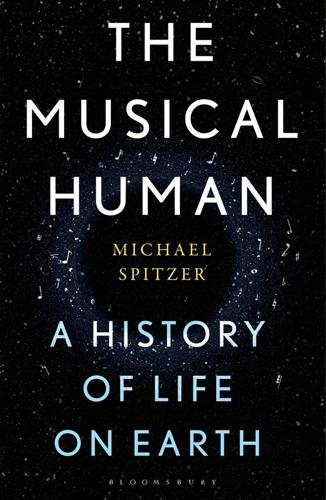
The Musical Human: A History of Life on Earth
by
Michael Spitzer
Published 31 Mar 2021
Because of course there is nothing simple about Pygmy music, just as there is nothing ‘primitive’ about Pygmy society. Anthropologists such as Ingold turn the usual narrative on its head to hold up hunter-gatherer egalitarianism as a model for later ‘civilizations’.36 For Western musicology, the idea that counterpoint originates in Africa – notionally before the ‘out-of-Africa’ dispersal – and that music was originally polyphonic (and thus not melodic) is nothing short of a scandal. I shall return to this scandal again and again in this book. The question, then, is why? Why might polyphony, rather than melody, be closer to the musical source? As with many evolutionary questions, the answer lies in the convergence of a range of separate strands.
…
We can, with reasonable logic, extrapolate this dispersal back to the cave at Geissenklösterle 40,000 years ago, and conjecture that lots of hunter-gatherer music, which has since then evolved apart, would have originally been sung and played together. America, the last continent to be reached by the ‘out of Africa’ migration, is host to 200 First Nation tribes who display virtually every feature of the music of the Pygmies, Inuit and indigenous Australians, in assorted combinations.61 Native American culture is egalitarian, has no notion of private property, has loose tribal affiliations (with individuals leaving and joining a tribe at will), and was historically nomadic, following the buffalo herd’s movements across the rolling grasslands in search of water.62 Music, ascribed a supernatural origin, was heard in dreams by the medicine man.
…
It is a perfect metaphor for the persistence of the past through layers of innovation. With their circular rituals, the Choctaw knock on the door of a new world of sedentary societies governed by the rotation of the seasons. We cannot know for certain that these four hunter-gatherer cultures echo the flow of sapiens out of Africa and east to west. In the end, my account is what evolutionary scientists call a just-so story: a high-end parable. On the other hand, for these modern cultures from far-flung corners of the Earth to share common musical practices testifies to a prehistoric core: the story must have a kernel of truth.
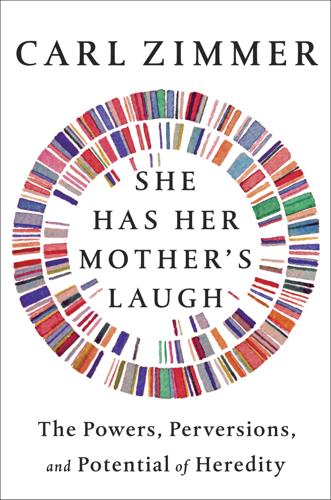
She Has Her Mother's Laugh
by
Carl Zimmer
Published 29 May 2018
Modern humans make a brief appearance at Mount Carmel about 100,000 years ago, and then the Neanderthals return for another 50,000 years before giving way for good to modern humans. It’s possible that the 100,000-year-old humans of Mount Carmel belonged to a brief expansion out of Africa. Before they vanished, they may have contributed their own DNA to Neanderthals. The DNA of living humans documents more recent encounters, after humans expanded successfully out of Africa sometime between 50,000 and 80,000 years ago. In a 2016 study, Joshua Akey and his colleagues at the University of Washington found different patterns of Neanderthal DNA in different groups of people, suggesting that the interbreeding happened in at least three separate episodes.
…
While too much ultraviolet radiation is harmful, too little can cause trouble as well. When the rays strike the skin, they supply the energy our cells need to make vitamin D. Dark skin may have interfered with its production among the San, leading them to evolve their tan skin. Somewhere between fifty thousand and eighty thousand years ago, a small group of humans expanded out of Africa. Tishkoff and her colleagues discovered that the dark-skinned people of southern India, Australia, and New Guinea all carry the same dark genetic variants she and her colleagues found in Africa. It’s possible that one wave of migrants carried the genes for dark skin on a journey across the southern edge of Asia and into the Pacific.
…
Some genes managed to flow for thousands of miles through a network of small bands. The ancient DNA Reich and his colleagues studied suggests that at some point the eastern hunter-gatherer population expanded both to the west and east. To the west, Western Africans inherited a substantial amount of their DNA. To the east, these Africans moved out of Africa altogether; their descendants settled across Europe, Asia, and beyond. But the flow of genes also traveled back into Africa. When Reich and his colleagues studied a three-thousand-year-old girl from a tribe of Tanzanian cattle herders, they found that a third of her ancestry belonged not in Africa but in the Near East, among the first farmers.

River Out of Eden: A Darwinian View of Life
by
Richard Dawkins
Published 28 Feb 1995
And the branch point that unites all womankind-the birth date of Mitochondrial Eve-is between a hundred fifty thousand and a quarter of a million years ago. Whether Mitochondrial Eve was an African or not, it is important to avoid a possible confusion with another sense in which it is undoubtedly true that our ancestors came out of Africa. Mitochondrial Eve is a recent ancestor of all modern humans. She was a member of the species Homo sapiens. Fossils of much earlier hominids, Homo erectus, have been found outside as well as inside Africa. The fossils of ancestors even more remote than Homo erectus, such as Homo habilis and various species of Australopithecus (including a newly discovered one more than four million years old), have been found only in Africa.
…
The fossils of ancestors even more remote than Homo erectus, such as Homo habilis and various species of Australopithecus (including a newly discovered one more than four million years old), have been found only in Africa. So if we are the descendants of an African diaspora within the last quarter of a million years, it is the second African diaspora. There was an earlier exodus, perhaps a million and a half years ago, when Homo erectus meandered out of Africa to colonize parts of the Middle East and Asia. The African Eve theory is claiming not that these earlier Asians didn't exist but that they leave no surviving descendants. Whichever way you look at it, we are all, if you go back two million years, Africans. The African Eve theory is claiming in addition that we surviving humans are all Africans if you go back only a few hundred thousand years.
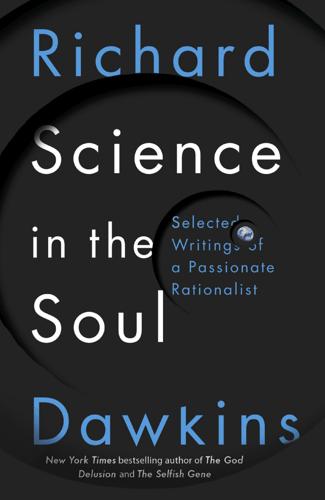
Science in the Soul: Selected Writings of a Passionate Rationalist
by
Richard Dawkins
Published 15 Mar 2017
We know that fire was tamed more than a million years ago by Homo erectus, the species that was probably our immediate predecessor in evolution. It is controversial when our ancestors dispersed out of Africa. We know that there were Homo erectus in Asia a million years ago, but many believe that nobody today is descended from those early migrants and that all surviving humans are the descendants of a second, more recent exodus of Homo sapiens out of Africa.*32 Whenever the exodus, there has evidently been time for humans to adapt to non-African conditions. Arctic humans are different from tropical. We northerners have lost the black pigmentation that our African ancestors presumably had.
…
But the existence of particular bad examples is no reason to dismiss an entire scientific discipline. The best practitioners of evolutionary psychology, Leda Cosmides, John Tooby, Steven Pinker, David Buss, Martin Daly, the late Margot Wilson and others, are good scientists by any standards. *32 Current thinking favours several excursions out of Africa, and genetic evidence suggests a bottleneck, that is, a temporary, dramatic reduction in the population from which all non-Africans are descended, some time under one hundred thousand years ago. Yan Wong, in the second edition of The Ancestor’s Tale which he co-authored with me, managed to use my genome (which happened to have been fully sequenced for a different purpose concerned with a television documentary) to estimate the population size at various times in the past.
…
He did it by comparing my maternal genes and my paternal genes, estimating, for each pair, the time elapsed since they ‘coalesced’, i.e. since they split off from a common ancestral gene. A significant majority of my pairs of genes coalesced about sixty thousand years ago. This suggests that the population was briefly very small about sixty thousand years ago – hence a ‘bottleneck’. It is probable that this bottleneck represents a particular out-of-Africa migration event. *33 And sanctioned by the ultimate role model: ‘…for I the LORD thy God am a jealous God, visiting the iniquity of the fathers upon the children unto the third and fourth generation of them that hate me’ (Exodus 20: 5). *34 I didn’t have time to spell out in the lecture why it is too simple.
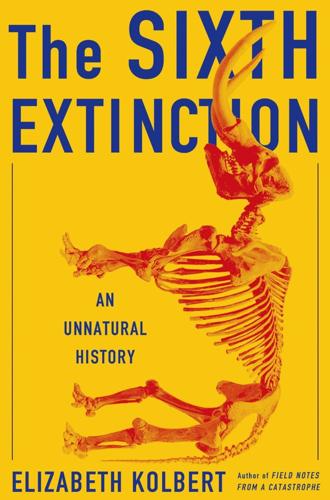
The Sixth Extinction: An Unnatural History
by
Elizabeth Kolbert
Published 11 Feb 2014
A second theory holds that the fungus was spread by North American bullfrogs which have been introduced—sometimes accidentally, sometimes purposefully—into Europe, Asia, and South America, and which are often exported for human consumption. North American bullfrogs, too, are widely infected with Bd but do not seem to be harmed by it. The first has become known as the “Out of Africa” and the second might be called the “frog-leg soup” hypothesis. Either way, the etiology is the same. Without being loaded by someone onto a boat or a plane, it would have been impossible for a frog carrying Bd to get from Africa to Australia or from North America to Europe. This sort of intercontinental reshuffling, which nowadays we find totally unremarkable, is probably unprecedented in the three-and-a-half-billion-year history of life
…
* * * WHEN, exactly, the New Pangaea project began is difficult to say. If you count people as an invasive species—the science writer Alan Burdick has called Homo sapiens “arguably the most successful invader in biological history”—the process goes back a hundred and twenty thousand years or so, to the period when modern humans first migrated out of Africa. By the time humans pushed into North America, around thirteen thousand years ago, they had domesticated dogs, which they brought with them across the Bering land bridge. The Polynesians who settled Hawaii around fifteen hundred years ago were accompanied not only by rats but also by lice, fleas, and pigs.
…
Specifically, Europeans and Asians shared more DNA with Neanderthals than did Africans. “We tried to make this result go away,” Reich told me. “We thought, ‘This must be wrong.’” For the past twenty-five years or so, the study of human evolution has been dominated by the theory known in the popular press as “Out of Africa” and in academic circles as the “recent single-origin” or “replacement” hypothesis. This theory holds that all modern humans are descended from a small population that lived in Africa roughly two hundred thousand years ago. Around a hundred and twenty thousand years ago, a subset of that population migrated into the Middle East, and from there, further subsets eventually pushed northwest in Europe, east into Asia, and all the way east to Australia.
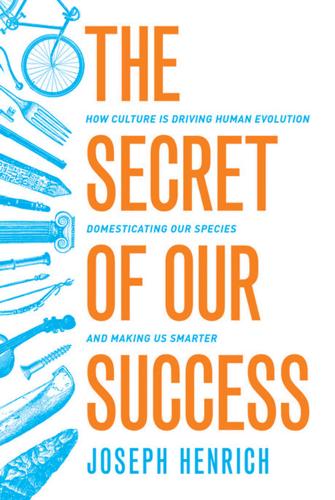
The Secret of Our Success: How Culture Is Driving Human Evolution, Domesticating Our Species, and Making Us Smarter
by
Joseph Henrich
Published 27 Oct 2015
However, archaeological evidence suggests that these kinds of expansions, on large and small scales, go deep into our species’ evolutionary history. Over a million years ago, our genus expanded out of Africa into a vast range of Eurasian environments that were experiencing rapid climatic and ecological shifts. To the degree that survival in these evolutionarily new and harsh environments depended on cooperation or social networks to sustain technologies (like fire, bows and arrows, fishing, and clothing), differential extinction would have favored any culturally transmitted behaviors that fostered either.31 Around 60,000 years ago, groups of Homo sapiens expanded out of Africa (our lineage), this time at the expense of other members of our genus and species.
…
The right institutions allow groups to enter new ecological niches, for example, by fostering survival in the Arctic through cooperation in whale hunting, or by surviving shocks, like droughts in deserts, that would exterminate or disperse less cooperative groups. Groups with superior institutions simply out last and eventually replace those with fewer cooperation-galvanizing norms. Since humans expanded out of Africa and into harsh environments, for which they had few genetic adaptations or innate proclivities, this may have been particularly important during human evolution. For this kind of process to work, groups don’t ever have to meet each other, and violence between groups need not occur.5 3. Differential migration.
…
Further, he argues, if natural selection explains the continental-level variation, then perhaps it also explains the prevalent psychological, behavioral, and biological variation observed across continents. Both of Wade’s inferential moves between these lines of evidence are fraught with problems. To understand the issues with the first inference, we must realize that the genetic variation among different continental populations traces to the spread of humans out of Africa, which occurred relatively recently. These migrations gave rise to evolutionary genetic drift and founder effects, as small samplings (groups) of much larger populations set off to become founding populations on new continents. These migrations created genetic variation, but not functional variation due to natural selection.
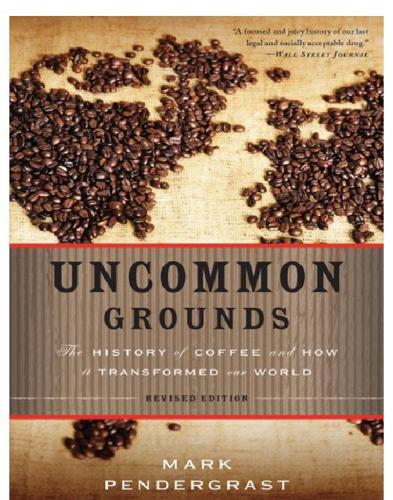
Uncommon Grounds: The History of Coffee and How It Transformed Our World
by
Mark Pendergrast
Published 2 Jan 2000
Industry Survives the War Good Neighbors No Longer The Legacy of World War II PART THREE - BITTER BREWS Chapter 13 - Coffee Witch Hunts and Instant Nongratification Guy Gillette’s Coffee Witch Hunt Instant, Quick, Efficient, Modern—and Awful Invention of the Coffee Break The Boob Tube Price Wars, Coupons, and Fourteen-Ounce Pounds Neglecting a Generation The Land That Smelled Like Money The Great Fourth of July Frost A CIA Coup in Guatemala Suicide in Brazil Chapter 14 - Robusta Triumphant Out of Africa Hot Coffee, Cold War Regular Robusta The Chock-Full Miracle The Coffeehouse: A Saving Grace London Espresso European Coffee in the Fifties Japan Discovers Coffee Googie Coffee In Denial Scared into Agreement Stumbling Toward Ratification Boomer Bust Merger Mania The Maxwell Housewife The Decline of Hills Brothers The Creation of Juan Valdez In a Vortex PART FOUR - ROMANCING THE BEAN Chapter 15 - A Scattered Band of Fanatics Zabar’s Beans Mentors, Fathers, and Sons Tourist Coffee and Other Problems The Think Drink Thunks The GI Coffeehouses “Caution: Coffee May Be Hazardous to Health” Gold Floats, Coffee Sinks Coffee Inroads in Japan and Europe The King of the Robustas and the Burundi Massacres Starbucks: The Romantic Period God’s Gift to Coffee A Coffee Love Affair The Ultimate Aesthete Specialty Proliferates Mrs.
…
During the first half of the 1950s, as coffee prices had risen, hopeful growers in the tropics planted new trees. Arabica trees produce four years after they are planted. Robusta trees, however, take only two years from seedling to harvest and produce more heavily. Encouraged by the popularity of instant coffee, many African colonies increased robusta growth dramatically. Out of Africa With the European powers weakened by World War II and natives eager to share in the wealth around them, the traditional method of rule—white Europeans applying an iron-fisted Bula Matari (“rock crusher,” in Kikongo)—clearly would not work anymore. As one African politician told the French National Assembly in 1946, “The colonial fact, in its brutal form . . . is impossible today.
…
As one African politician told the French National Assembly in 1946, “The colonial fact, in its brutal form . . . is impossible today. This historical period of colonization is over.” In 1947 the British granted independence to India, and pressure grew for Britain, France, Portugal, and Belgium to release the colonies they had carved out of Africa in the late nineteenth century. In 1951 Britain gave Libya its independence, and the next year a military coup in Egypt severed its ties to England as well. Issues of economic inequities, forced labor, racism—and coffee—played a major role in the independence movement in countries such as Kenya, Uganda, the Ivory Coast, Angola, and the Belgian Congo.
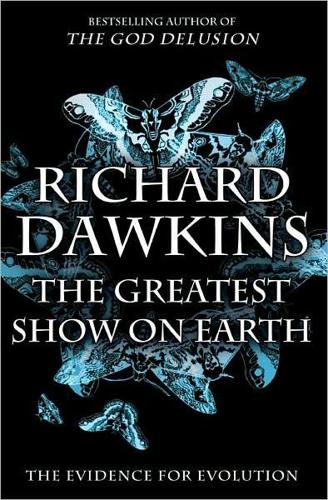
The Greatest Show on Earth: The Evidence for Evolution
by
Richard Dawkins
Published 21 Sep 2009
So what were these Homo erectus specimens doing out of Africa? The phrase ‘out of Africa’ has been borrowed from Karen Blixen* to refer to the great exodus of our ancestors from Africa. But there were two exoduses and it is important not to confuse them. Relatively recently, maybe less than 100,000 years ago, roving bands of Homo sapiens looking pretty much like us left Africa and diversified into all the races that we see around the world today: Inuit, native Americans, native Australians, Chinese, and so on. It is to this recent exodus that the phrase ‘out of Africa’ is normally applied. But there was an earlier exodus from Africa, and these erectus pioneers left fossils in Asia and Europe, including the Java and Peking specimens.
…
He meant Africa, and the quest was not helped by the fact that his immediate successors largely ignored his advice and searched Asia instead. It was indeed in Asia that the ‘missing links’ first began to become less missing. But those first fossils to be discovered were relatively recent, less than a million years old, dating from a time when hominids were pretty close to modern humans and had migrated out of Africa and reached the Far East. They were called ‘Java Man’ and ‘Peking Man’ after their discovery sites.* Java Man was discovered by the Dutch anthropologist Eugene Dubois in 1891. He named it Pithecanthropus erectus, signifying his belief that he had realized his life’s ambition and found ‘the missing link’.

Is the Internet Changing the Way You Think?: The Net's Impact on Our Minds and Future
by
John Brockman
Published 18 Jan 2011
I’m aware that I’m living on the cusp of perhaps the third great tipping point in human history, and that this is an awesome and lucky thing to experience. First, I imagine myself with a small band moving out of Africa into the Fertile Crescent around 60,000 years ago, when humans mastered language and began to conquer the globe. More than half a million years ago, the Neanderthal and human branches of evolution began to split from our common ancestor Homo erectus (or perhaps Homo ergaster). Neanderthals, like H. erectus before, spread out of Africa and across Eurasia. But our ancestors, who acquired fully human body structures about 200,000 years ago, remained stuck in the savanna grasslands and scrub of first eastern and then southern Africa.
…
But our ancestors, who acquired fully human body structures about 200,000 years ago, remained stuck in the savanna grasslands and scrub of first eastern and then southern Africa. Recent archaeological and DNA analyses suggest that our species may have tottered on the verge of extinction as recently as 70,000 years ago, dwindling to fewer than 2,000 souls. Then, in an almost miraculous change of fortune about 60,000 to 50,000 years ago, one or a few human bands moved out of Africa for good. This beginning of human wanderlust was likely stirred by global cooling and the attendant parching of the African grasslands, which led to loss of game and grain. But there is also the strong possibility, based on circumstantial evidence relating to a “cultural explosion” of human artifacts and technologies, that a mutation rewired the brain for computational efficiency.
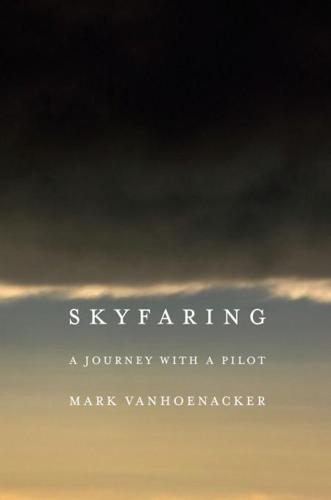
Skyfaring: A Journey With a Pilot
by
Mark Vanhoenacker
Published 1 Jun 2015
These questions remind me that while airplanes have overturned many of our older sensibilities, a deeper part of our imagination lingers and still sparks in the former realm, among ancient, even atavistic, ideas of distance and place, migrations and the sky. Flight, like any great love, is both a liberation and a return. Isak Dinesen wrote in Out of Africa: “In the air you are taken into the full freedom of the three dimensions; after long ages of exile and dreams the homesick heart throws itself into the arms of space.” When aviation began, it was worth watching for its own sake; it was entertainment, as it still is for many children on their early encounters with it.
…
On the way we flew down the Somali coastline—I had never before seen a land of such colors, mixed yellow and deep red—and I realized that one reason for my particular excitement about this journey was that it required two flights, not one. Perhaps, even, I was more excited about flying to Kenya than about what I hoped to find in a dusty archive there. My mother and I both loved Isak Dinesen’s Out of Africa. My mom had left her small hometown in Pennsylvania for work and college, and later lived in Paris; her love for the book was perhaps because it’s a tale of a great life-journey that starts and ends in a small place. Personally I loved the book best for its descriptions of flight, and as the plane descended over the hills around Nairobi I half-seriously asked myself whether, if the book had not contained such elegiac descriptions of aviation, I might have picked a different branch of history, if I might now be flying to a different country or continent.
…
Penguin Random House: Excerpt from “The Poem of Flight” from New Selected Poems by Philip Levine, copyright © 1991 by Philip Levine; excerpt from Travels With Charley by John Steinbeck (Penguin Books, 1992), copyright © 1961, 1962 by The Curtis Publishing Company Inc., copyright © 1962 by John Steinbeck, copyright renewed 1989, 1990 by Elaine Steinbeck, Thom Steinbeck and John Steinbeck IV. Reprinted by permission of Penguin Random House LLC. Rungstedlund Foundation: Excerpts from Out of Africa by Isak Dinesen. Reprinted by permission of the Rungstedlund Foundation. A Note About the Author Mark Vanhoenacker is a pilot and writer. A regular contributor to The New York Times and a columnist for Slate, he has also written for Wired, the Financial Times, the Los Angeles Times, and The Independent.
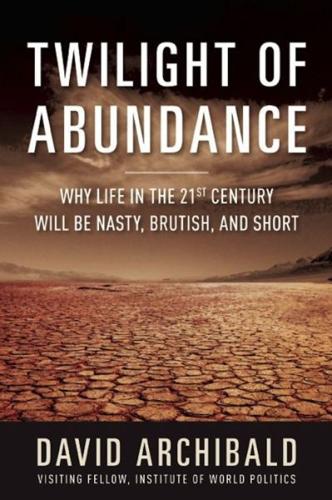
Twilight of Abundance: Why the 21st Century Will Be Nasty, Brutish, and Short
by
David Archibald
Published 24 Mar 2014
POSTSCRIPT We cannot absolutely prove that those are in error who tell us that society has reached a turning point, that we have seen our best days. But so said all who came before us, and with just as much apparent reason. On what principle is it that, when we see nothing but improvement behind us, are we to expect nothing but deterioration before us? —Thomas Macaulay, 1830 When modern human beings made their way out of Africa 50,000 years ago, the different branches of humanity that formed from that exodus spread out over the continents. Those branches became separated for tens of thousands of years but evolved to become agricultural societies within a few thousand years of each other. They went on to produce massive stone buildings a few thousand years after that—without knowing what the other branches of humanity had achieved, or even being aware that they existed.
…
They went on to produce massive stone buildings a few thousand years after that—without knowing what the other branches of humanity had achieved, or even being aware that they existed. It was as if there was an alarm clock going off in human development—as if the development of agriculture and civilization was encoded in our genetic makeup when we made that first step out of Africa, as if there is a trajectory of inevitable material progress in human affairs. Let’s hope so, because we need another technological push forward if life is not going to revert to being nasty, brutish, and short—in the lifetimes of our children and grandchildren. Of all the problems facing humanity in the twenty-first century, the question of what will replace fossil fuels looms largest.

Exceptional People: How Migration Shaped Our World and Will Define Our Future
by
Ian Goldin
,
Geoffrey Cameron
and
Meera Balarajan
Published 20 Dec 2010
Despite the global dispersion of humans, communities remained connected through trade networks and conquest. Diversity emerged through the separate development of populations, but cross-cultural contact ensured continuing interaction between scattered human communities. EARLY MIGRATION Out of Africa Every one of us has migrant blood running through our veins. As Spencer Wells put it, “We all have an African great-great…grandmother who lived approximately 150,000 years ago.”6 Around 80,000 years ago, the archaeological record of homo sapiens grows vague, and Wells argues that the human population dwindled to around 2,000 people.
…
Around 40,000 years ago, people began to occupy the relatively colder, though still temperate, regions of Europe and inner Eurasia through several different routes. One involved movement along the rivers and valleys of the Himalayas from South China into the Eurasian steppes. Another would have followed the Pacific shore before turning inland. A final western route may have come more directly out of Africa toward the Black Sea. An ice age between 30,000 and 15,000 years ago, however, led human populations that had initially settled the warmer parts of Eurasia to retreat farther south. The evidence for how humans occupied northern Eurasia and the Americas is unclear, and there are many competing accounts based on genetic tracing, linguistics, and archaeology.
…
In the concluding chapter, we will examine global migration governance and proposals for reform. 8 A Global Migration Agenda In the preceding chapters, we have contended that migration is a defining characteristic of human societies and a driving force of global history. The audacious movement of our common ancestors out of Africa launched the settlement of diverse ecologies, forcing adaptation, innovation, and learning. Before the advent of modern communications technologies, migrants and travelers served as the broadcast medium connecting settlements and civilizations. They carried knowledge and know-how across cultural and geographic boundaries, transmitting the ideas that animate human progress.

Text Analytics With Python: A Practical Real-World Approach to Gaining Actionable Insights From Your Data
by
Dipanjan Sarkar
Published 1 Dec 2016
The following code snippet depicts the detailed analysis results for k-means clustering: # get clustering analysis data cluster_data = get_cluster_data(clustering_obj=km_obj, movie_data=movie_data, feature_names=feature_names, num_clusters=num_clusters, topn_features=5) # print clustering analysis results In [294]: print_cluster_data(cluster_data) Cluster 0 details: -------------------- Key features: [u'car', u'police', u'house', u'father', u'room'] Movies in this cluster: Psycho, Sunset Blvd., Vertigo, West Side Story, E.T. the Extra-Terrestrial, 2001: A Space Odyssey, The Silence of the Lambs, Singin' in the Rain, It's a Wonderful Life, Some Like It Hot, Gandhi, To Kill a Mockingbird, Butch Cassidy and the Sundance Kid, The Exorcist, The French Connection, It Happened One Night, Rain Man, Fargo, Close Encounters of the Third Kind, Nashville, The Graduate, American Graffiti, Pulp Fiction, The Maltese Falcon, A Clockwork Orange, Rebel Without a Cause, Rear Window, The Third Man, North by Northwest ======================================== Cluster 1 details: -------------------- Key features: [u'water', u'attempt', u'cross', u'death', u'officer'] Movies in this cluster: Chinatown, Apocalypse Now, Jaws, The African Queen, Mutiny on the Bounty ======================================== Cluster 2 details: -------------------- Key features: [u'family', u'love', u'marry', u'war', u'child'] Movies in this cluster: The Godfather, Gone with the Wind, The Godfather: Part II, The Sound of Music, A Streetcar Named Desire, The Philadelphia Story, An American in Paris, Ben-Hur, Doctor Zhivago, High Noon, The Pianist, Goodfellas, The King's Speech, A Place in the Sun, Out of Africa, Terms of Endearment, Giant, The Grapes of Wrath, Wuthering Heights, Double Indemnity, Yankee Doodle Dandy ======================================== Cluster 3 details: -------------------- Key features: [u'apartment', u'new', u'woman', u'york', u'life'] Movies in this cluster: Citizen Kane, Titanic, 12 Angry Men, Rocky, The Best Years of Our Lives, My Fair Lady, The Apartment, City Lights, Midnight Cowboy, Mr.
…
Strangelove or: How I Learned to Stop Worrying and Love the Bomb, Apocalypse Now, Saving Private Ryan, Patton, Platoon, Dances with Wolves, All Quiet on the Western Front ======================================== Cluster 10 details: -------------------- Key features: [u'despite', u'drop', u'family', u'confront', u'drive'] Movies in this cluster: The Treasure of the Sierra Madre, City Lights, Midnight Cowboy ======================================== Cluster 11 details: -------------------- Key features: [u'discover', u'always', u'feel', u'city', u'act'] Movies in this cluster: Raging Bull, It Happened One Night, Rain Man, Rebel Without a Cause ======================================== Cluster 12 details: -------------------- Key features: [u'discuss', u'alone', u'drop', u'business', u'consider'] Movies in this cluster: Singin' in the Rain, An American in Paris, The Apartment, Annie Hall, Network ======================================== Cluster 13 details: -------------------- Key features: [u'due', u'final', u'day', u'ever', u'eventually'] Movies in this cluster: On the Waterfront, It's a Wonderful Life, Some Like It Hot, The French Connection, Fargo, Pulp Fiction, North by Northwest ======================================== Cluster 14 details: -------------------- Key features: [u'early', u'able', u'end', u'charge', u'allow'] Movies in this cluster: A Streetcar Named Desire, The King's Speech, Giant, The Grapes of Wrath ======================================== Cluster 15 details: -------------------- Key features: [u'enter', u'eventually', u'cut', u'accept', u'even'] Movies in this cluster: The Philadelphia Story, The Green Mile, American Graffiti ======================================== Cluster 16 details: -------------------- Key features: [u'far', u'allow', u'apartment', u'anything', u'car'] Movies in this cluster: Citizen Kane, Sunset Blvd., The Sound of Music, Out of Africa, Terms of Endearment, Wuthering Heights, Yankee Doodle Dandy ======================================== # visualize the clusters In [304]: plot_clusters(num_clusters=num_clusters, feature_matrix=feature_matrix, ...: cluster_data=cluster_data, movie_data=movie_data, ...: plot_size=(16,8)) The preceding outputs show the contents of the different clusters and their visualization.
…
It is definitely interesting indeed that with just movie synopses, our algorithm has clustered movies with similar attributes and genres together! The blue colored movies give us similar results, in that Braveheart and Gladiator are action, drama, and war classics. We also have some classics related to drama , romance, and biographies like The Sound of Music, Wuthering Heights, Terms of Endearment, and Out of Africa. Toward the top of the dendrogram you will observe movies related to science fiction and fantasy, like 2001: A Space Odyssey, Close Encounters of the Third Kind, and E.T. the Extra-Terrestrial, all close to each other. Can you find more interesting patterns? Which movies do you think do not belong together in the same clusters?

The Catcher in the Rye
by
J. D. Salinger
Published 16 Jul 1951
I had one and my roommate, Ward Stradlater, had one. The arms were in sad shape, because everybody was always sitting on them, but they were pretty comfortable chairs. The book I was reading was this book I took out of the library by mistake. They gave me the wrong book, and I didn't notice it till I got back to my room. They gave me Out of Africa, by Isak Dinesen. I thought it was going to stink, but it didn't. It was a very good book. I'm quite illiterate, but I read a lot. My favorite author is my brother D.B., and my next favorite is Ring Lardner. My brother gave me a book by Ring Lardner for my birthday, just before I went to Pencey.
…
It's a pretty good book and all, but I wouldn't want to call Somerset Maugham up. I don't know, He just isn't the kind of guy I'd want to call up, that's all. I'd rather call old Thomas Hardy up. I like that Eustacia Vye. Anyway, I put on my new hat and sat down and started reading that book Out of Africa. I'd read it already, but I wanted to read certain parts over again. I'd only read about three pages, though, when I heard somebody coming through the shower curtains. Even without looking up, I knew right away who it was. It was Robert Ackley, this guy that roomed right next to me. There was a shower right between every two rooms in our wing, and about eighty-five times a day old Ackley barged in on me.
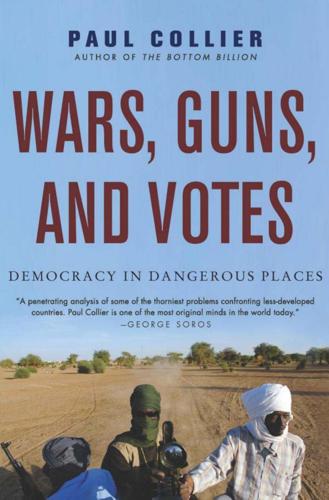
Wars, Guns, and Votes: Democracy in Dangerous Places
by
Paul Collier
Published 9 Feb 2010
Government armies buy Kalashnikovs most vigorously when they are fighting a rebellion. So the guns are officially imported into Africa, stolen, and so become illegal, but cannot easily be re-exported to the markets in which secondhand Kalashnikovs fetch a high price. That is because to export the guns out of Africa they have to be imported into countries that generally have sufficiently good border controls to make it difficult. But the guns do not just stay in the country whose government first imported them to Africa. Africa’s internal borders are highly porous, and so the cheap guns slosh around the continent going to 116 WARS, GUNS, AND VOTES where there is currently demand: which means wherever there is a war.
…
While the governments of South Africa and Nigeria might well not wish to host foreign forces with an unclear mandate, they should welcome them for the specified purpose of protection from coups against governments that have committed themselves to proper standards of democratic elections. “Keep out of Africa” is irresponsible if it condemns the continent to unaccountable government. Finally, I turn to my most demanding readers: those presidents who, having read the section that sets out strategies for reducing the risk of a coup, still could not sleep soundly. Gentlemen, I promised you that if you read on you would find a fully reliable protection from your own army.
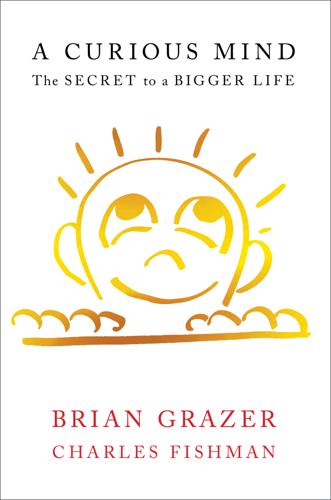
A Curious Mind: The Secret to a Bigger Life
by
Brian Grazer
and
Charles Fishman
Published 6 Apr 2014
So there would be six or eight of us, from totally different disciplines, spending the day in a relaxed atmosphere, trading our problems and our experiences and our questions. What a fabulous idea. And we did it. Dr. Salk invited a robotics expert from Caltech and Betty Edwards, the theorist and teacher who wrote the book Drawing on the Right Side of the Brain. I brought director and producer Sydney Pollack (Out of Africa, Tootsie) and producer George Lucas, the creator of Star Wars and Indiana Jones, and George brought Linda Ronstadt, the singer who was his girlfriend at the time. The whole thing was Dr. Salk’s idea. He was curious—in particular, he was curious about how the “media mind” worked, how people like Lucas and Pollack thought about the world and what they created, and he was curious about storytelling.
…
Seuss story, 113 fear and, 116 to Grazer, 101, 102, 103–5, 106–7, 114 Grazer saying, 178 in Hollywood/entertainment business, 33, 61, 101–2, 169 as inside your head, 114, 116, 118 persistence and, 109, 114, 118 reactions to, 101–2 Splash and, 103–5, 106–7, 109 ways to beat, 102, 114, 116–18 Noah (movie), 78, 280 Obama, Barack, 13, 207, 209–11, 212 obstacles, Grazer’s views about overcoming, 167–69 open-ended questions, 139–40, 198–99, 261 openness, 181–85, 198–99, 200 opinions, 177–78, 179, 180 optimism, 172 others: curiosity on behalf of, 162–66 See also: point of view; relationships Out of Africa (movie), 157 Ovitz, Michael, 121 Page, Larry, 146 painful topics: and when not to be anti-curious, 175 Paley, William, 204 The Paper (movie), 128 Paramount Studios: Grazer as producer at, 28–31 Parenthood (movie), 31, 45, 128, 213 Parker, Dorothy, 1, 273 parochialism, 44–45 passion, 172, 173, 180 Penn, Sean, 93 persistence, 108–9, 114, 118 perspective of others.
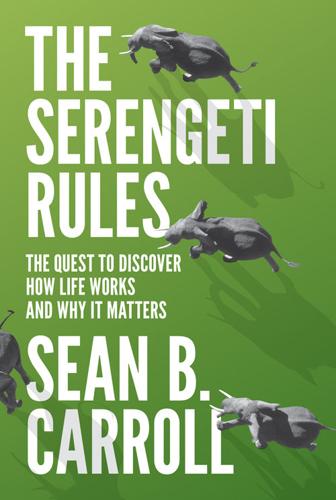
The Serengeti Rules: The Quest to Discover How Life Works and Why It Matters
by
Sean B. Carroll
Published 16 Feb 2016
Humanity does not live by bread alone; in East African wilds a stream of men and women down the generations may find quickening, refreshment, inspiration. Huxley was a schoolmate and friend of safari guide and hunter Denis Finch-Hatton, who was later made famous as Karen Blixen’s lover in her memoir and the film Out of Africa. Finch-Hatton, whose clients included the future King Edward VIII, was a private man who eschewed the limelight. But he was appalled by the excessive killing in the Serengeti by tourist hunters. He wrote to the Times of London to condemn the “orgy of slaughter” and to push for protection of the Serengeti “before it was too late.”
…
See also Gorongosa National Park Mozambique Resistance Movement, 186, 197 Muagura, Pedro, 197 Mukkaw Bay, 111–115, 118–119, 121 mussels, 119, 120 mutations, genetic research and, 63–67 myc gene, 97 necessity, sufficiency and, 182 negative feedback, 67–68 negative regulation: density-dependent regulation as form of, 147–150, 198–199; overview of, 68f, 153; predation as, 164–165, 166f; starfish, mussels and, 119; wildebeest, rinderpest virus and, 140–143, 141f, 142f Ngorogoro Crater, 1–3 Nielsen, Mark, 192 Nieuwe Meer, Lake, 158 Nigeria, 206–207 Nile crocodiles, 192–193 Nobel Prizes: for discovery of allostery, 71; for discovery of penicillin, 40, 92; for discovery of virus causing cancer in chickens, 93, 96; for understanding of cholesterol regulation, 78, 87 norepinephrine, 17 Norges Pattedyr (Collett), 40–41 North East Land, 39–43 northern elephant seals, 199 Norton-Griffiths, Mike, 138–140 Novartis, 103–104 Nuttall Ornithological Club, 113 ochre starfish, 111–115, 112f, 118–120 Olduvai Gorge, 3–4 olive baboons, 161–162, 164, 165f Olympic Peninsula, 111–115, 118–119 oncogenes: cancer and, 98–100, 99f, 105; discovery of, 96–97; as drug targets, 102–104; leukemia and, 98–100; retinoblastoma and, 100–102 “One Care for Our Common Home” (Pope Francis), 203–204, 210 optimism, 211 orcas, 126 Order of the Bath, 25 oribi, 145, 145f Orwell, George, 127 otters, sea, 120–123, 124f, 126, 199 Out of Africa (film), 132 Oxford University Expeditions to Spitsbergen, 32–43, 33f Paine, Robert: on future, 203; image of, 128f; sea otters as keystone species and, 120–123; starfish as keystone species and, 111–115, 118–120; Tatoosh Island and, 119–120, 121, 127 Palmisano, John, 122 pancreas, 27 parasites, population size and, 45 Pardee, Arthur, 65 Pasteur Institute, 54, 58, 60 pathogens, 45, 137–138 Paul Lake, 171–172, 173f penicillin, 40, 81, 82, 92 Penicillium citrinum, 82–84 Penicillium fungus, 81 “Periodic Fluctuations in Numbers of Animals” (Elton), 42–43 peristalsis, 18–21 Pershing, John J., 25 pesticides, 159–161, 164, 211 pests, rice production and, 158–161, 160f, 164 Peter Lake, 171–172, 173f Peterson, Charles “Pete,” 163 Philadelphia chromosome (22), 93, 98–100, 99f phosphate fertilizers, 163 phosphate groups, protein regulation and, 98–99, 101 phosphorylation, 101 phytoplankton, 171–172, 173f pigeon pea, 197 Pingo, Mike, 192, 198 Pisaster ochraceus (ochre starfish), 111–115, 112f, 118–120 plankton, 53, 171–172, 173f, 176 planthopper, brown, 159–161, 160f, 164 Plowright, Walter, 136 poaching, 146, 195, 197 political will, social will and, 210 pollution, water supply and, 155–158 population growth: buffalo and, 134–138; fluctuations in, 42f; human, 5; wildebeest and, 136–138, 137f, 148f, 149 population size: competition and, 143–144, 150; density-dependent regulation of, 147–150, 148f; factors limiting, 45; fluctuations in, 41–43; migration and, 150–152; pesticide use in rice production and, 159–161, 164; predators and, 45, 150 positive regulation, overview of, 68f, 153 Pourquoi-Pas?
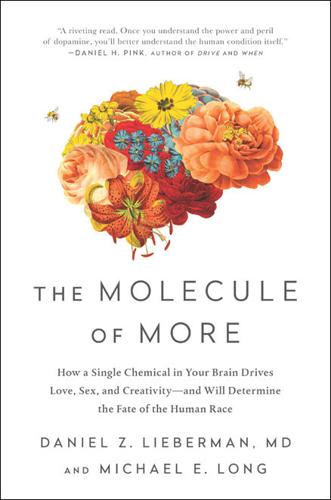
The Molecule of More: How a Single Chemical in Your Brain Drives Love, Sex, and Creativityand Will Det Ermine the Fate of the Human Race
by
Daniel Z. Lieberman
and
Michael E. Long
Published 13 Aug 2018
Retrieved from https://www.govtrack.us/congress/bills/statistics . . . the beginning is where the end gets born. —Catherynne M. Valente, writer Chapter 6 PROGRESS What happens when the servant becomes the master? In which dopamine ensures the survival of early humans and the extinction of the human race. OUT OF AFRICA Modern humans evolved in Africa about 200,000 years ago and began spreading to other parts of the world approximately 100,000 years later. This migration was essential for the survival of the human race, and there’s genetic evidence that we almost didn’t make it. One of the unusual characteristics of the human genome is that there is far less variation from person to person compared to other primate species such as chimpanzees or gorillas.
…
Today, humans occupy nearly every corner of the globe—but not because humans recognized the threat and dispersed. THE ADVENTURE GENE Research on mice has shown that drugs that boost dopamine also increase exploratory behavior. Mice given these drugs move around their cages more and are less timid about entering unfamiliar environments. So could dopamine have helped propel early humans out of Africa and across the globe? To answer this question, scientists from the University of California compiled data from twelve studies that measured the frequency of dopaminergic genes in different parts of the world. They focused on the gene that tells the body how to make the D4 dopamine receptor (DRD4).

What Technology Wants
by
Kevin Kelly
Published 14 Jul 2010
A number of your blades would be held by bone or wood handles, hafted with cane or hide cord. When you crouched around the fire, someone might play a drum or bone flute. Your handful of possessions might be buried with you when you died. But don’t take this progress for harmony. Within 20,000 years of the great march out of Africa, Sapiens helped exterminate 90 percent of the then-existing species of megafauna. Sapiens used innovations such as the bow and arrow, spear, and cliff stampedes to kill off the last of the mastodons, mammoths, moas, woolly rhinos, and giant camels—basically every large package of protein that walked on four legs.
…
Only when the mind, liberated by language and enabled by the technium, transcended the constraints of nature 50,000 years ago did greater realms of possibility open up. There was a price to pay for this transcendence, but what we gained by this embrace was civilization and progress. We are not the same folks who marched out of Africa. Our genes have coevolved with our inventions. In the past 10,000 years alone, in fact, our genes have evolved 100 times faster than the average rate for the previous 6 million years. This should not be a surprise. As we domesticated the dog (in all its breeds) from wolves and bred cows and corn and more from their unrecognizable ancestors, we, too, have been domesticated.
…
Saffo, Paul Sagan, Carl Sahlins, Marshall Sale, Kirkpatrick San Francisco slums of Sapiens clothing of cooking by diet of diverse niches occupied by early inventions of grandmother effect and hominins displaced by increased longevity of items traded by language invented by megafauna extinctions and out of Africa migration of population growth of sedentism of tools of see also hunter-gatherers satellites night photography by Schachter-Shalomi, Rabbi Zalman Scheele, Carl Schwartz, Barry science fringe increase in journal articles of information compressed by in progress simultaneous discoveries in as structured global knowledge science fiction scientific method scissors Scott, W.
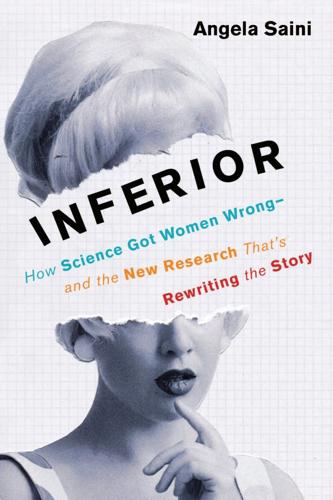
Inferior: How Science Got Women Wrong-And the New Research That's Rewriting the Story
by
Angela Saini
Published 29 May 2017
They’ve been known to go long distances even while pregnant. One example is Amber Miller, an experienced runner who in 2011 ran the Chicago marathon before giving birth seven hours later. English runner and world record holder Paula Radcliffe has also trained through two pregnancies. For a large chunk of early human history, when humans migrated out of Africa to the rest of the world, women would have traveled hundreds or thousands of miles, sometimes under extreme environmental conditions. If they were pregnant or carrying infants, the daily physical pressures on them would have been far greater than those faced by men. “Just reproducing and surviving in these conditions, talk about natural selection!”
…
Indeed, Kristen Hawkes’s latest work suggests that hardworking grandmothers may have appeared very early in human development, around two million years ago, meaning they could hold much more than just the key to human longevity. “It may have been helpful grandmothering that allowed the spread of genus Homo out of Africa and into previously unoccupied regions of the temperate and tropical Old World,” she speculates. In her version of the story of us, ancient grandmothers weren’t just powerhouses in their families but vehicles for enormous change as humans migrated across the globe, tens of thousands of years ago.
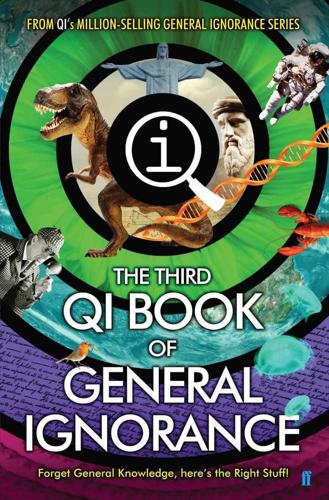
QI: The Third Book of General Ignorance (Qi: Book of General Ignorance)
by
John Lloyd
and
John Mitchinson
Published 28 Sep 2015
Almost all wild lions live on the African savannah (apart from the 400 in Gir Forest National Park in India, which isn’t a jungle either). Some lions may have to move as their habitat shrinks – one lioness was spotted in the Ethiopian jungle in 2006, but there’s no evidence she was hunting and breeding there. ‘The Lion Sleeps Tonight’ is the most famous song ever to have come out of Africa. Originally called ‘Mbube’ (Zulu for ‘lion’) it was recorded in 1939 by Solomon Linda and the Evening Birds. During the studio session the Birds sang ‘Mbube, uyiMbube’ (‘Lion, you’re a lion’) while Solomon improvised over the top. It sold 100,000 copies in South Africa alone. It has since been translated into Danish, Japanese, Congolese and Navaho, and broadcast on US radio for the equivalent of 300 years of continuous play.
…
If the weather had been nicer, they might have spent the time going on bracing walks. As it was, they were forced to stay inside and think up ghost stories. But Krakatoa and Tambora both pale into insignificance beside the most violent of all volcanic eruptions: Lake Toba in Sumatra (also west of Java). It happened 70,000 years ago, when Homo sapiens had just emerged out of Africa. The eruption ejected nearly 700 cubic miles of debris into the sky – the equivalent of 19 million Empire State Buildings. Toba’s eruption appears to have had a devastating effect on the human race. Genetic analysis shows the population fell to no more than 10,000 and, according to some estimates, as few as 40 breeding couples.
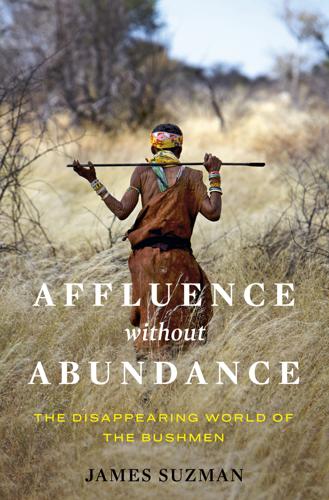
Affluence Without Abundance: The Disappearing World of the Bushmen
by
James Suzman
Published 10 Jul 2017
The same data suggests that it was only during the last twenty-two thousand years that other African branches of the human family tree, including those that would later form the first human populations in Europe and Asia, began to grow significantly. The researchers analyzing this data speculate that climatic changes in central and western Africa, as well as the challenges of adapting to new and unfamiliar habitats as they expanded out of Africa, affected these declines.2 As genetically diverse as Khoisan were before the arrival of others in southern Africa, they shared similar cultures, similar technologies, similar views on the nature of the cosmos, and similar ways of relating both to one another and to their environments. While Khoisan peoples spoke—and continue to speak—a range of mutually unintelligible languages, these languages all share the same roots marked out most obviously by the use of a series of distinctive click consonants.
…
If the ultimate measure of sustainability is endurance over time, then hunting and gathering is by far the most sustainable economic approach developed in all of human history, and the Khoisan are the most accomplished exponents of this approach. And the success of hunting and gathering as an economic system cannot be doubted. It is as hunter-gatherers that modern Homo sapiens expanded out of Africa and occupied Asia, the Pacific Islands, Australia, and eventually the Americas. It is hard to imagine that the globalized economy symbolized by da Gama’s voyage will endure anywhere near as long as the Khoisan managed to survive by hunting and gathering. Some of the more doom-laden forecasts of climate change suggest that it is already too late—that an important threshold has already been passed and that we should all be channeling our inner Noah and building arks of one sort or another.
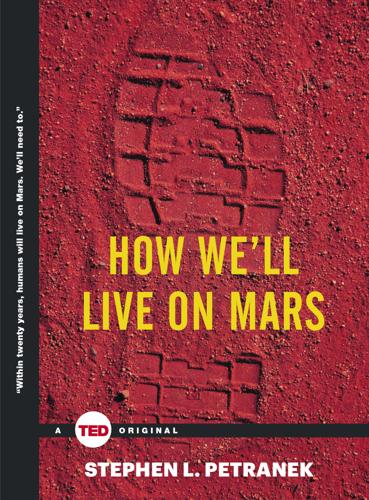
How We'll Live on Mars (TED Books)
by
Stephen Petranek
Published 6 Jul 2015
The backstory of that mistake is worth understanding—how a single decision by one US president stunted space travel for decades, how we might have inspired two generations of earthlings with humankind’s ability to deliver on almost anything our brains can imagine. Nearly five decades ago we had the ability to extend ourselves into the solar system and beyond. Now private rocketry has opened a new window to the stars. Perhaps the need to explore is built into our DNA; homo sapiens began venturing out of Africa about 60,000 years ago, pushing beyond the horizon until they populated the entire globe. Exploration may be connected to human survival. But it has also led to colonization of lands already occupied, the devastation of cultures, and the plundering of resources. The settlement of Mars is about to happen far sooner than most people realize, and in a nonregulated way.
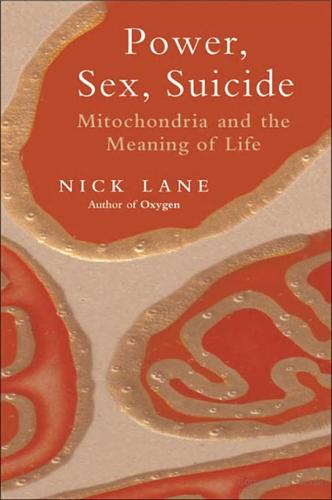
Power, Sex, Suicide: Mitochondria and the Meaning of Life
by
Nick Lane
Published 14 Oct 2005
If all modern humans came from Africa less than 200 000 years ago, then we are all the same under the skin. We have barely had time, in an evolutionary sense, to diverge, but we can perhaps be held responsible for the extinction of our closest relatives, such as the Neanderthals. This theory is known as the ‘Out of Africa’ hypothesis. On the other hand, if the human races evolved in parallel then the differences between us are not skin deep, and our unique racial and cultural identities are firmly grounded in biology, challenging our ideals of equality. Both scenarios could have been offset by interbreeding, to an unknown degree.
…
Most populations from outside Africa had ‘multiple origins’, in other words, peoples living in the same place had different mitochondrial DNA sequences, implying that many areas were colonized repeatedly. In sum, Wilson’s group concluded that Mitochondrial Eve lived fairly recently in Africa, and the rest of the world was populated by repeated waves of migration from that continent, lending support to the ‘Out of Africa’ hypothesis. Not surprisingly these unprecedented findings gave birth to a dynamic new field, which dominated genealogy in the 1990s. The unresolved questions raised by skeletal morphology, by linguistic and cultural studies, by anthropology and population genetics, could at last all be answered with ‘hard’ scientific objectivity.
…
S 154–5, 171, 192, 271, 285, 297 Hall, Alan 102 Halliwell, Barry 275 Hamilton, William 192, 221, 234 Harden, Sir Arthur 79 Harman, Denham 274–5, 278 Harold, Franklin 92, 103, 195–6 heart disease, vulnerability to 255–6 heat production, by uncoupling respiration 92, 183–4, 254–6, 305–6 Helmholtz, Hermann von 73 Hemmingsen, A. M. 167 hermaphrodite lifestyle 232–3, 238 Heusner, Alfred 159, 167 Heyerdahl, Thor 246 histones 10, 32, 48–9 Hochachka, Peter 176 Horovitz, Bob 204 Hulbert, Tony 181 human evolution: mitochondrial DNA studies 244–7 ‘Out of Africa’ hypothesis 242–3, 246 population genetic studies 243–4 human genome project 68 nuclear mitochondrial sequences (numts) 132–3, 252 n. human mitochondrial genome 16, 135–9, 141–4, 281 Huntington’s disease 285, 298 Hurst, Laurence 234 Hussein, Saddam, identification of 4 Jacob, François 114 Jacobs, Howard 299–300 Jaffe, Bernard 71 Jagendorf, André 89–90 Jansen, Robert 263 Jones, Laura 38 Joule, James Prescott 73 immune function, and apoptosis 204 infertility 260 male cytoplasmic sterility 238 male infertility (asthenozoospermia) 256 ooplasmic transfer 4, 240, 264 intelligence, evolution of 23, 24 iron, as a catalyst 73–4 iron-sulphur minerals, and the first cells 99–102, 101, 103–4 isoprenes 99, 135 isoprenoids 135 Kalckar, Herman 80 Karr, Timothy 239 Keilin, David 74–7, 85, 209 Kennedy, Eugene 13, 72 Kerr, John 203 Khrapko, Konstantin 250 Kingsbury, B.

Genesis: The Deep Origin of Societies
by
Edward O. Wilson
Published 19 Mar 2019
Our thought and literature remain energized by the widespread belief that all of prehistory and history, including every great transition, somehow served the purpose of placing us upon the Earth. Everything, it has been argued, from the origin of life 3.8 billion years ago was meant for us. The spread of Homo sapiens out of Africa and around the habitable world was somehow preordained. It was meant to establish our rule of the planet with the inalienable right to treat it as we please. That mistake, I suggest, is the true human condition. So let us look more closely at the great transitions. The first transition and the most difficult to visualize is the origin of life itself.
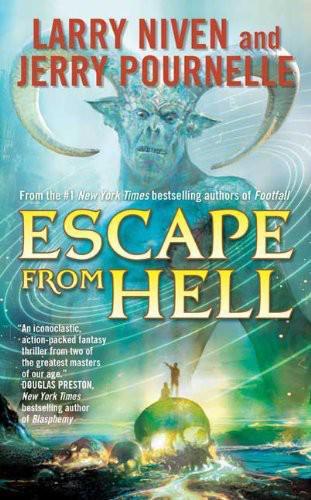
Escape from Hell
by
Larry Niven; Jerry Pournelle
Published 1 Apr 2010
GEORGE LINCOLN ROCKWELL Commander, USNR. Leader of the American Nazi Party. Died 1967. PHLEGYAS Legendary king of the Lapiths, grandfather of Asclepius. Died second millennium B.C. KAREN BLIXEN AKA ISAK DINESEN (alluded) Danish author who wrote primarily in English. Her works include Out of Africa and “Babette’s Feast.” Died 1962. The City of Dis JAMES GIRARD One–time deputy district attorney of New Orleans, now an official in the Prosecutor’s Office in Hell. Died twenty–first century. HENRI LEBEAU Professor of civil and canon law, Tulane University, assigned to the Prosecutor’s Office in Hell.
…
I have been told that the rape was necessary to produce him, and I had no right to interfere with the will of Zeus and the gods by taking revenge for my daughter’s rape.” “Don’t tempt the gods,” Rosemary said. “Be watchful and don’t tempt the gods,” Phlegyas said. “I recall saying that. Where did you hear that?” “A story we read in college mentioned you,” Rosemary said. “By the Danish woman who wrote Out of Africa. This was a really scary story.” I asked, “So Minos put you here?” “He did.” “As king?” He didn’t answer. The boat was slowing now. The fog was clearing, and I could see we were coming to a landing. Chapter 11 Fifth Circle The City Of Dis * * * And my good Master said: “Even now, my son, The city draweth near whose name is Dis, With the grave citizens, with the great throng.”

Mysteries of the Mall: And Other Essays
by
Witold Rybczynski
Published 7 Sep 2015
The image may be the result of a remembered family photograph, or a painting, or the experience of a real porch somewhere. For one person, getting away means a shady porch with a rocking chair and a slowly turning ceiling fan. That particular image has haunted me for years—I think I first saw it in a magazine ad for whiskey. And for me one of the pleasures of watching the film Out of Africa is the beautiful porch of Karen Blixen’s house in Kenya, with Mozart’s Clarinet Concerto playing on a windup gramophone. Alas, for Luc a porch was just a utilitarian appendage. Moreover, the image it conjured up for him was not rural but urban. I also had the impression that he considered porches to be old-fashioned—or maybe just places for old people.
…
occupancy rates Oheka Ohio River Oklahoma City, Okla., 1995 bombing in Olbrich, Joseph Maria Olin (landscape architecture firm) Olmsted, Frederick Law as city planner foresight of inevitability of big cities foreseen by parkways of pragmatism of on suburbs Olmsted, Rick Olmsted Brothers Olympics, Beijing (2008) OMA On the Art of Building in Ten Books (Alberti) Opéra Bastille, Paris architectural competition for as Big Project cost of exterior of innovative technology of interior of political fights over as too big for site Opéra Comique, Paris Orinda, Calif. Orlando, Fla. Ormandy, Eugene Osceola County (Fla.) School Board Oslo, 2011 bombings in Otranto House, North Charleston Ott, Carlos Otto, Frei, West German pavilion, Expo 67 of Oud, J.J.P. Out of Africa (film) Ove Arup: Masterbuilder of the Twentieth Century (Jones) Paimio Sanatorium, Finland Palais Garnier (Paris Opéra) Palazzo Ducale, Venice Palazzo Pretorio, Cividale, Italy Palladianism Palladio, Andrea Carità convent of drawings of Il Redentore church of influence of Palazzo Pretorio of Quattro libri of San Giorgio Maggiore of Villa Foscari of Villa Godi of Villa Rotonda of Villa Saraceno of villas of Pampanito, USS (submarine) Panama Canal Pan American Union Building, Washington, D.C.
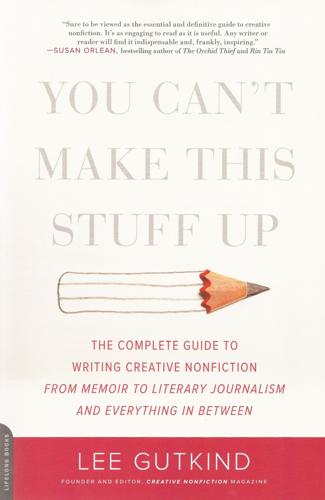
You Can't Make This Stuff Up: The Complete Guide to Writing Creative Nonfiction--From Memoir to Literary Journalism and Everything in Between
by
Lee Gutkind
Published 13 Aug 2012
Angela’s Ashes (1996) by Frank McCourt and This Boy’s Life (1989) by Tobias Wolff were both made into major motion pictures; the British actress Emily Watson starred as McCourt’s mother, Angela, and the Academy Award winner Robert De Niro played Wolff’s stepfather, Dwight Hansen. The Liars Club (1995) by Mary Karr, another of these best-selling tell-all memoirs, rode the new interest in the genre. Memoirs are not new to the literary world. Henry David Thoreau’s Walden is a classic of the form as is Isak Dinesen’s Out of Africa, first published in this country in 1938. The Kiss, however, pushed into new territory, with the subject of incest scandalizing both critics and ordinary readers. Even in 1997, book-reviewing venues were drying up, and any controversy that might help sell a few more magazines or newspapers was a boon at the time.
…
See also Frame Narrative historians, recreation and Narrative journalism Narrative line Narrative nonfiction Narrator, trustworthiness of Nasar, Sylvia Nasdijj Nash, John National Book Award National Book Critics Awards National Endowment for the Arts Navel gazing New journalism The New Journalism (Wolfe) New Republic (magazine) Newsday (newspaper) Newspapers, reading Newsweek (magazine) The New Yorker (magazine) creative nonfiction in DeLillo article in Malcolm and McPhee and New York Herald Tribune (newspaper) New York (magazine) New York Observer (newspaper) New York Post (newspaper) New York Times Book Review (periodical) New York Times Magazine New York Times (newspaper) creative nonfiction in hoaxes and recreation and The Next American Essay (D’Agata) Nick Adams Stories (Hemingway) Nickel and Dimed (Ehrenreich) Nixon (film) Norton Note-taking Novels Nuland, Sherwin Nutmeg (Nathaniel) Obama, Barack Objectivity, creative nonfiction and Ohio University O magazine O’Malley, Walter The Omnivore’s Dilemma (Pollan) On Death and Dying (Kübler-Ross) One Children’s Place (Gutkind) One-on-one interviews On Looking (Purpura) On the Road (Kerouac) Opening paragraphs Opening Skinner’s Box (Slater) Oranges (McPhee) The Orchid Thief (Orlean) Orlean, Susan Orwell, George Other Press O’Toole, Peter Outlines Out of Africa (Dinesen) Page, P. K. Palin, Sarah Parachuting Parallel narratives Paris Review (magazine) Patterson, James Patton (film) Pearson, Michael Pentimento (Hellman) The People of Penn’s Woods West (Gutkind) The Perfect Storm (Junger) Perkins, Maxwell Permission disclaimer form Persepolis (Satrapi) Personal essay.

The New Harvest: Agricultural Innovation in Africa
by
Calestous Juma
Published 27 May 2017
United Nations Economic Commission for Africa and African Union, Economic Report on Africa 2009: Developing African Agriculture Through Regional Value Chains (Addis Ababa: United Nations Economic Commission for Africa and African Union, 2009), 125–126. 45. R. Paarlberg, Starved for Science: How Biotechnology Is Being Kept Out of Africa (Cambridge, MA: Harvard University Press, 2008), 81. 46. United Nations Economic Commission for Africa and African Union, Economic Report on Africa 2009: Developing African Agriculture Through Regional Value Chains (Addis Ababa: United Nations Economic Commission for Africa and African Union, 2009), 126. 47.
…
But evidence of unintended benefits is emerging. See, for example, W. D. Hutchison et al., “Areawide Suppression of European Corn Borer with Bt Maize Reaps Savings to Non-Bt Maize Growers,” Science 330, no. 6001 (2010): 222–225. 41. R. Paarlberg, Starved for Science: How Biotechnology Is Being Kept Out of Africa (Cambridge, MA: Harvard University Press, 2008), 2. 42. J. O. Adeoti and A. A. Adekunle, “Awareness of and Attitudes Towards Biotechnology and GMOs in Southwest Nigeria: A Survey of People with Access to Information,” International Journal of Biotechnology 9, no. 2 (2007): 209–230. 43. E. J. Morris, “The Cartagena Protocol: Implications for Regional Trade and Technology Development in Africa,” Development Policy Review 26, no. 1 (2008): 29–57.
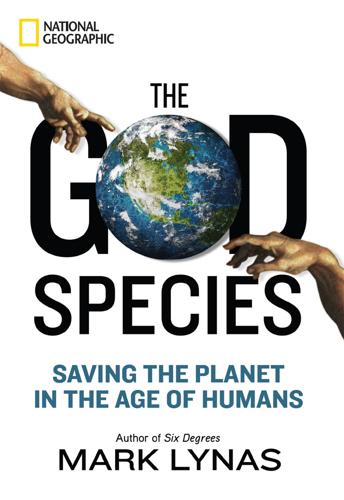
The God Species: Saving the Planet in the Age of Humans
by
Mark Lynas
Published 3 Oct 2011
And rightly so, for fire dramatically changed our relationship with the natural world. Acquiring the power of gods separated humans permanently and irretrievably from all other species. As well as cooked food, it afforded protection against predators and warmth on cold nights, allowing early humans to spread north out of Africa during the depths of the last ice age. Fire may have facilitated the spread of genes for hairlessness, as the need for body insulation diminished. However, once our hair was lost and our guts had shrunk, we were tied to the hearth—we could no longer exist without it. No human can hope to survive in the wild today without fire, and this dependence marks a major qualitative shift in human relations with the biosphere.
…
In what looks like a prehistoric bout of all-too-modern ethnic cleansing, Homo sapiens probably drove its closest hominid relatives, Homo neanderthalensis and Homo erectus, to oblivion. A minority of archaeologists cling to the notion that some interbreeding must have taken place, but genetic studies show this is unlikely.7 Modern human DNA instead confirms that all of us are descended from the same small initial Homo sapiens population that migrated out of Africa 50,000 years ago.8 The last Neanderthals hung on in remote mountainous parts of France until 38,000 years ago, and in southern Spain until about 30,000 years ago. The very last families died a few thousand years later in Gorham’s Cave in what is now Gibraltar, when their final refuge on the extreme southern edge of the continent was overrun.9 Officially, the direct cause of their ultimate demise is a mystery, but I think we can guess who the culprit was.
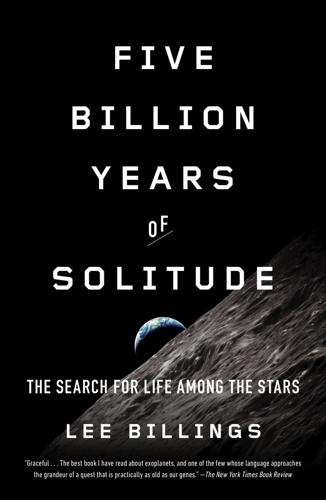
Five Billion Years of Solitude: The Search for Life Among the Stars
by
Lee Billings
Published 2 Oct 2013
After ninety minutes, you would find yourself in the Bronze Age, around the time of the construction of Stonehenge, the domestication of the horse, and the founding of Abrahamic religions. A day later, you would be in the middle of the Stone Age, just as small bands of foraging humans began to migrate out of Africa. To reach the beginning of the Cambrian, the base of the Phanerozoic, would take you about 17 years. Now remember that almost a decade of earlier Precambrian time underlies each and every passing Phanerozoic year—departing from the far-distant Cambrian, your year-per-second time machine would take another 125 years to transport you to our planet’s first moments.
…
An observer somewhere among the trillion stars of Andromeda, our nearest neighboring spiral, would today see the Earth of 2.5 million years ago, when the forerunners of Homo sapiens were perfecting the production of crude stone tools in sub-Saharan Africa. Seen from the Large Magellanic Cloud, a dwarf galaxy swooping near the Milky Way, our world would be locked in the glacial advance of 160,000 B.C., with our ancestors poised to migrate out of Africa as the ice sheets retreated. Within our own galaxy, the echoes are closer to home. Among the open clusters and blue hypergiant stars of the Carina Nebula, somewhere between 6,500 and 10,000 light-years away, the Earth appears as it was during the rise of agriculture and the Bronze Age civilizations of Mesopotamia, Egypt, and the Indus Valley.
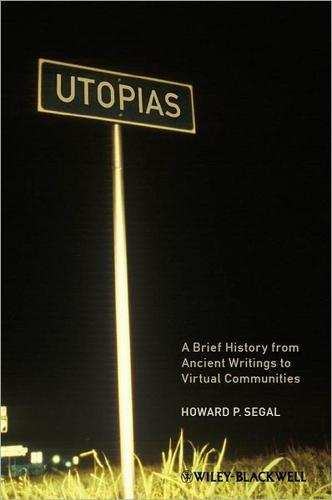
Utopias: A Brief History From Ancient Writings to Virtual Communities
by
Howard P. Segal
Published 20 May 2012
A notable exception was Japan, which, having escaped colonization and having become a world power early in the twentieth century, never relinquished its old attitudes about racial supremacy and homogeneity.78 Interestingly, in recent years there have been controversies about the alleged African origins of Western (especially Greek) science and technology and condemnations of the supposed Western theft of these intellectual and material treasures (despite that post-World War I skepticism about modern developments). But 170 Utopia Reconsidered such attempted revisionism had been decisively refuted, especially in Mary Lefkowitz’s superb Not Out of Africa: How Afrocentrism Became an Excuse to Teach Myth as History (1996). Meanwhile, in a throwback to that skepticism about Western science, South Africa’s President Thabo Mbeki (born in 1942), the successor to Nelson Mandela and the nation’s second black president, set back his country’s response to its widespread AIDS epidemic during his administration.
…
Bradley 92 Lane, Robert 106–107, 108, 109, 114, 117–118, 119, 122 Laos 104 Lartigue, Jacques-Henri 165 Las Vegas 36 Lasser, David 9 Last Hero, The: A Life of Henry Aaron (Bryant) 191 Latin America 102 and European ideas 21–22 indigenous cultures and movements 21, 23 liberation theology and communities 52 Spanish conquest 21 utopias in 21–23 Lawrence, Francis 212 Lea, Homer 98 278 Index League of Nations 251 Lease, Mary 98 Lee, Ann 26 Lefkowitz, Mary 171 Left Hand of Darkness, The (LeGuin) 92 legitimation crisis in US science and technology 122 LeGuin, Ursula 92 LeMay, General Curtis 105 Lemontey, Pierre Edouard 60 Lenin, Vladimir 104 Lessing, Doris 9 Levitas, Ruth 7 Levittown, Long Island 244 Ley, Willy 9 library usage 218 Life in a Technocracy: What It Might Be Like in 1933 (Loeb) 89, 106, 239, 240 limits to growth 234, 237 Literary Digest 97 “literary intellectuals” 114 “living the dream” 254 Loeb, Harold Albert 89, 90, 95, 96, 239 and politics 109 Loewy, Raymond 34 London, Jack 98 Longxi, Zhang 18 Looking Backward: 2000–1887 (Bellamy) 10, 13, 24, 27, 31–32, 34, 90, 194 attitudes toward 59–60, 254 Lost Horizon 13 Lucas, George 204 Luddites 240, 241 Maastricht Treaty 252 Machine in the Garden: Technology and the Pastoral Ideal in America, The (Leo Marx) 84 Machines as the Measure of Men: Science, Technology, and Ideologies of Western Dominance (Adas) 169 Macnie, John 82, 87 Maine and nuclear power 142–157 Maine Yankee Atomic Power Company 142–143, 145, 146–148, 149, 151 as “cargo cult” 147 closure of 148 opposition to 156–157 referenda on 147, 155 utopian and dystopian aspects 156 views of 156–157 Malthus, Thomas 63 Mandela, Nelson 171 Manhattan Project 156 “Manifest Destiny,” American 11 Manuel, Frank and Fritzie 16 Manuel, Frank 6 Mao Tse-Tung 18, 243 utopian vision 19 Mao’s Great Famine (Dikotter) 19 Maraniss, David 191 marginalizing utopias 29, 245 Marx, Karl 32, 53, 60, 66–67, 105, 250–251 Marxism 22 Marx, Leo 84, 85 Massachusetts Institute of Technology 52 Massey, Ranymond 240, 241 Mauchly, John 160 Mayer, Anna-K. 98, 114 Mbeki, Thabo, President of South Africa 171 McDonald, Michael J. 111 McIntyre, Vonda N. 9 McKinley, President William 94 McNamara, Robert 104–105, 106, 112, 113, 166 “McNamara Line” 105 Medieval Machine, The: The Industrial Revolution of the Middle Ages (Gimpel) 236 “megachurches” 11 megaprojects: and climate change 187–188 retreat from 139ff, 157 skepticism toward 141–142 taxpayer support for 122, 150 Megatrends and Megatrends 2000 (Naisbitt and Aburdene) 168 Men Like Gods (Wells) 251 mercantilism 77 Metamorphosis (Ovid) 47 Mexico 23 mice, as subjects of research 125 Micklethwait, John 11 Microsoft 158, 192 “middle landscape” 85 military technology 238 millenarian movements 8 God and millenarianism 8, 10 Christians and millenarianism 8, 10 Judaism and millenarianism 8, 10 Mormonism 10 and Pansophism 54–55 and utopia 55 Miller, Lisa 12 Mitchell, General Billy 142 Mizora: A Prophecy (Lane) 92 Model T car 165 Modern Times in Maine and America, 1890–1930 191 “Modernization” theory 102ff, 114 over-reliance on technology 105 Index 279 Mojave Desert, California 151 monkeys, genetically modified 125 Montgomery, David 212 Montreal Expo 1967 246 Moon and the Ghetto: An Essay on Public Policy Analysis, The (Nelson) 117 Moon landing 139, 140, 141, 190, 200 moon landing fraud claims 141 More, Thomas 23, 42, 58, 247 coining of term utopia 5 and history 164 and utopias 251 utopia described 48–50 see also Utopia Morison, George Shattuck 89–90 Mormonism 10 Morozov, Evgeny 189 Morris, William 17, 32, 58–59, 60, 237, 254 see also News from Nowhere Mosquito Coast, The 202 Mumford, Lewis 1, 106, 245, 246 music, digitization of 221 Mussolini, Benito 98 MySpace 205 Naisbitt, John 161, 162, 168, 186 Nantucket Sound 150 NASA 7, 140 National Association of State Universities and Land-Grant Colleges (NASULGC) 213–214 National Park Service 238–239 National Science Foundation (NSF) 99, 100, 115 Native Americans 81 natural user interface 220 Nazi Germany 104, 244 Nazism and utopia 188 280 Index Negroponte, Nicholas 161–162, 163, 186 Nehru, Jawaharlal 172 Nelson, Richard 117 Neo-Confucian thought 19–20 Net Delusion, The: The Dark Side of Internet Freedom (Morozov) 189 Neumann, Franz 109 Neumann, John Von 160 New Atlantis, The (Bacon) 53, 251 Condorcet on 56 New Christianity, The (Le Nouveau Christianisme) (SaintSimon) 57 New Deal 106, 159 New England 3, 24, 27, 147, 150, 156, 249 New Harmony, Indiana. settlement at 60 New Lanark Mills, Scotland 60, 62, 64 New View of Society A (Owen) 62 New World and Old World compared 24, 244 New World Order 242 New World, The; Or, Mechanical System to Perform the Labours of Man and Beast by Inanimate Powers, that Cost Nothing (Etzler) 78 New York City’s New School for Social Research 97 New York Public Library 242, 245, 254 New York World’s Fair World of Tomorrow 1939–1940 164, 240 News from Nowhere (Morris) 17, 32, 59–60, 237 newspapers and digital media 218, 221–222 Newton Message Pad 219 Newton, Isaac 55, 219 Nexi the robot 126 Nixon, President Richard 108, 155 Noble, David F 187, 190, 207, 216 non-utopian reform 244 North Americans, early European perceptions of 244 North Vietnam 105–106 Not Out of Africa: How Afrocentrism Became an Excuse to Teach Myth as History (Lefkowitz) 171 Noyce, Robert 158 Noyes, John Humphrey 10, 27, 28 nuclear industry: France 152 Germany 152 Japan 152 US 142–156 nuclear power 142–157 being “too cheap to meter” 156 changing attitudes toward 146–147 experts and 155–156 leakage of tritium 153 and power station decommissioning 148, 149–150 possibility of disaster 154–155 nuclear weaponry 187 Nuclear Regulatory Commission (NRC) 148, 149, 153, 154 Nutty Professor, The 201 Nye, David 81, 168, 169, 190, 237 Nyhan, David 148–149 O’Neil, Gerard 9 Obama, President Barack 140, 151 Office of Science and Technology Policy 108 Office of Technology Assessment (OTA) 117–119, 121 One Laptop per Child 161 Oneida community 10, 24, 27–28 daughter communities 28 open marriage in 27, 199 Oneida Limited 28 “Oneida Perfectionists” 28 ordinary readers and utopian writings 11, 139, 254 Organization Man, The (Whyte) 114–115 original sin 8 Orwell, George 14, 124, 166 Other America, The (Harrington) 101 Ovid 47 Owen, Robert 53, 60–64, 66, 67 and drawbacks of industrialization 62 influence on Japan 196 utopian plans 62–63 see also New Harmony, Indiana, New Lanark Mills ozone layer, monitoring of 121 pacifism 26 Packard, David 158 Page, Larry 158 Palestine 25, 35 Pansophists 48, 52, 53–55 Paradise Within the Reach of All Men, Without Labor, By Powers of Nature and Machinery, The (Etzler) 79 parents, children, and technology 239 Paris exposition 1937 35, 251–252 Paris Peace Conference 1919 251 Paris World’s Fair 1900 251, 253 Pasteur, Louis 120–121 Index 281 Pasteur’s Quadrant: Basic Science and Technological Innovation (Stokes) 120 patriot missiles 238 Peale, Norman Vincent 168, 208 Pelle, Kimberly 36 Pentagon 109 People of Plenty: Economic Abundance and the American Character (Potter) 101 Performance Measurement for World Class Manufacturing 212 Perrin, Noel 234, 235 Perry, Commodore Matthew 20 Persian Gulf War 1991 238 Pew Forum on Religion and Public Life 11–12 Pew Research Center for the People 116 phalansteries 29, 64–65 Physics of Star Trek, The (Krauss) 202 Picasso, Pablo 35, 252 Piercy, Marge 92 Pilgrims, US 24 Pindar 47 Plato 13, 47, 48, 50, 123 podcast 218–219 Point East Maritime Village, Wiscasset 150 Pol Pot 243 “Politics of Consensus in an Age of Affluence, The” 106 politics, affluence, and knowledge 106–107 significance of political power 109 Positivism 58 Post Shredded Wheat 191 post-9/11 period 142 “post-colonial” critique of Western imperialism 169–173 post-Millennialists 8, 27 282 Index post-modern skepticism and relativism 160 Postrel, Virginia 161, 164, 186 post-World War II period, beliefs, and projects 160 Potter, David 101, 102 poverty and progress 82 Prague Spring 1968 268 Prakash, Gyan 171, 172 Preface to Democratic Theory, A (Dahl) 106 pre-Millennialists 8 Press and the American Association 116 primitivism 92 Productivity for the Academic World 212 Productivity Press 212 professional forecasting 160–169 failures of 160–161 Progress and Poverty (George) 82 proletariat 66 public faith in government and scientific-technological advance 113 Puffer, Erma 145 Puritans, US 24 “Quick Technological Fixes” 107–108, 117 Quindlen, Anna 221 racism 9, 169, 172 radiation, issues with 144–145, 155 Ramo, Simon 110–111, 112, 113, 122, 160 utopian vision of 110, 166 rationalism 55 Reactionary Modernism (Herf) 104 Read and Go 220 Reader Pocket Edition and Reader Touch Edition 220 Reagan, President Ronald 8, 108, 115, 140, 142, 248 real world and the internet 194–195 Recent Social Trends in the United States (Hoover) 102 recovery narrative 81, 237 Reevely, David 221–222 Religion of Technology, The: The Divinity of Man and the Spirit of Invention (Noble) 187 religion 169 attitudes toward belief 56 declining beliefs 11–12 freedom of religion 168 religious beliefs and utopianism 9–12, 24, 29–30, 31, 90, 96, 239 in US 25, 26, 103 Western 172 Report to the County of Lanark (Owen) 62, 63 Republic (Plato) 13, 47, 48, 50, 123 Rescher, Nicholas 239–240 Research Applied to National Needs” 115 “Returning to Our Roots” 215, 216 Revenge of the Nerds 201 revolution of rising expectations 50 Ricardson, Ralph 240 Rittel, Horst 112 Road Ahead, The (Gates) 163 Robinson, Kim Stanley 9 robotics, development of 126–127 Roddenberry, Gene 200, 201, 202 Rodriquez, Simon 22 Roebling, John 79 Roemer, Kenneth 254 Rogers, Deborah 193 Rome 1960: The Olympics that Changed the World (Maraniss) 191 Roosevelt, President Franklin 102, 159 Rosas, Juan Manuel de 22 Rostow, Walt 104, 105 Roszak, Theodore 111, 112 Rural Electrification Administration 94 Ruskin, John 58, 59, 60 Russ, Joanna 92 Rydell, Robert 36, 37 94, Saddam Hussein 11 Saint-Simon, Henri de 22, 52, 56–58, 65, 66 Sale, Kirkpatrick 117 “salvation by technology” 248 Samurai “technology assessment” 235 Sargent, Lyman Tower 16, 253 Satellite (machine developed by Etzler) 79–80, 81 Saunders, Doug 105 Schindler, Solomon 10 Schuller, Robert 168 Science Advisory Committee 106 science and technology 57 science fiction 8–9, 199–203, and utopias 201 Science in the National Interest 119–122 Science Wars” 159 “science-driven globalization” 8 Science – The Endless Frontier (V.
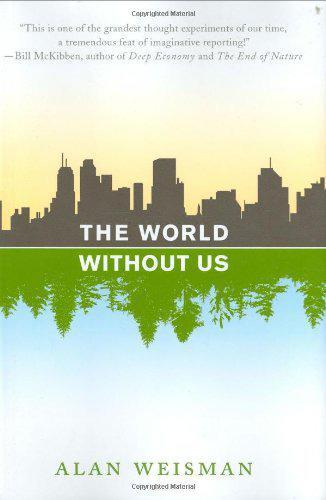
The World Without Us
by
Alan Weisman
Published 5 Aug 2008
For some 3 million years more, we were too few to create more than local patchworks of grassland and forests whenever distant ice ages weren’t doing it for us. Yet in that time, long before Pan prior s most recent descendant, surnamed sapiens, appeared, we must have become numerous enough to again try being pioneers. Were the hominids who wandered out of Africa again intrepid risk-takers, their imaginations picturing even more bounty beyond the savanna’s horizon? Or were they losers, temporarily out-competed by tribes of stronger blood cousins for the right to stay in our cradle? Or were they simply going forth and multiplying, like any beast presented with rich resources, such as grasslands stretching all the way to Asia?
…
Martin mourned, but by then he had been setting blazes of his own in the paleontology world with his theory of what had wiped out millions of ground sloths, wild pigs, camels, Proboscidea, multiple species of horses—at least 70 entire genera of large mammals throughout the New World, all vanished in a geologic twinkling of about 1,000 years: “It’s pretty simple. When people got out of Africa and Asia and reached other parts of the world, all hell broke loose.” Martin’s theory, soon dubbed the Blitzkrieg by its supporters and detractors alike, contended that, starting with Australia about 48,000 years ago, as humans arrived on each new continent they encountered animals that had no reason to suspect that this runty biped was particularly threatening.

Whole Earth Discipline: An Ecopragmatist Manifesto
by
Stewart Brand
Published 15 Mar 2009
The difference in productivity was so obvious that Brazilian farmers smuggled the seeds across the border, until their government relented and legalized GE agriculture. • Why do environmentalists want to deny the advantages of GE crops to farmers in the developing world, who need it most? Robert Paarlberg, author of Starved for Science: How Biotechnology Is Being Kept Out of Africa (2008), theorizes that rich countries have the luxury of debating the nuances of economics and perceived risk around GE crops, whereas poor countries don’t:The technology is directly beneficial to only a tiny number of citizens in rich countries—soybean farmers, corn farmers, a few seed companies, patent holders.
…
The book has a real-life texture missing in most works about GE or organic. The Doubly Green Revolution: Food for All in the Twenty-first Century (1999), Gordon Conway. Experience tells. Conway has seen it all and knows exactly how GE fits into simultaneously feeding the world and protecting the environment. Starved for Science: How Biotechnology Is Being Kept Out of Africa (2008), Robert Paarlberg. Anatomy of an ongoing Green-sponsored atrocity in Africa. Mendel in the Kitchen: A Scientist’s View of Genetically Modified Foods (2006), Nina Fedoroff. Geneticist Federoff gives a much fuller background for how GE works with food crops than I could. CropBiotech Update (online).

The Future Is Faster Than You Think: How Converging Technologies Are Transforming Business, Industries, and Our Lives
by
Peter H. Diamandis
and
Steven Kotler
Published 28 Jan 2020
In fact, many of the most powerful technologies we’ll have at our disposal—artificial intelligence, nanotechnology, biotechnology—are only starting to come online. So yes, the threats we face might seem dire, but the solutions we already possess will only continue to increase in power. CHAPTER FOURTEEN The Five Great Migrations Our species is a migratory one. Over the past seventy thousand years, we wandered out of Africa and kept on wandering. We climbed mountains, forged forests, swam rivers, crossed continents, sailed oceans, and, eventually, managed to work our way into every corner of the Earth. It was an exodus-driven influx of innovation. While we left the old and sought the new, we brought our ideas, technologies, and cultures along for the ride.
…
In America, twenty million people end up underwater. In Washington, DC, sea levels reach the Pentagon. And if you thought real estate in New York was expensive today, just wait until everything south of Wall Street disappears. Beyond the deluge, global warming also puts the ancient nemesis of drought on the horizon. Drought drove us out of Africa some seventy thousand years ago, and is still driving us today. Syria has the highest number of refugees in the world, and it’s partially because of drought. In Europe, even if we halt warming at two degrees, the Mediterranean will continue to dry, with Italy, Spain, and Greece being especially hard hit.
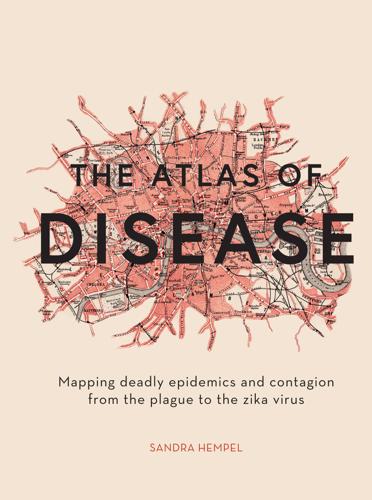
The Atlas of Disease
by
Sandra Hempel
Published 15 Sep 2018
Clarifying how the virus is transmitted. Then in March 2014, everything changed. Ebola struck in West Africa, where it had previously been unknown, first in Guinea and then in Liberia and Sierra Leone. Over the next two years, it proceeded to go global, spreading to Mali, Nigeria and Senegal, and then out of Africa to Italy, Spain, the United Kingdom and the United States, where it affected people other than laboratory workers. In the summer of 2014, panic seized the developed world, with ebola dominating the news agenda for months and being compared with the great plagues of the Middle Ages. From 2014 to 2016, 28,616 people across the world contracted the disease and 11,310 of them died but – despite the terror and the headlines in the Western world – the vast majority of cases were in West Africa, where the long-term effects on the affected societies have been devastating.
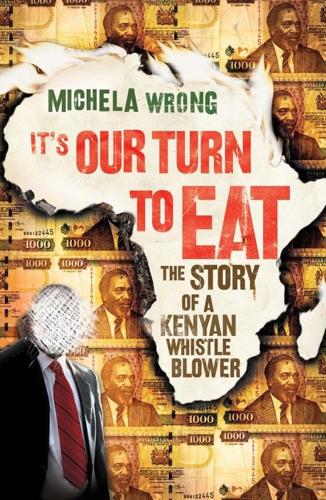
It's Our Turn to Eat
by
Michela Wrong
Published 9 Apr 2009
This pre-eminence can in part be traced to Britain's colonial role and the astonishingly resilient memory of ‘a sunny land for shady people’, where English aristocrats swapped wives and downed gin-and-tonics while snorting quantities of recreational drugs. Long before Barack Obama's ancestry came to intrigue the Western public, a pith-helmeted fantasy woven from Ernest Hemingway's tales and Martha Gellhorn's writings, the escapades of the Delamere family, stories of the man-eating lions of Tsavo, Karen Blixen's Out of Africa and the White Mischief cliché – all references irrelevant to ordinary Kenyans but stubbornly sustained by the tourism industry – guaranteed the country a level of brand recognition other African states could only dream about. But there are less romantic reasons for Kenya's disproportionately high profile.
…
Having refused to surrender State House, Kibaki was bent on entrenching his position. Much of the eventual 1,500 death toll could be laid at the door of the government, which announced an unnecessary ban on public demonstrations and then ordered the mainly Kikuyu GSU, issued with live ammunition, to ruthlessly enforce it. Taking the wind out of Africa Union mediation efforts, Kibaki named a partial cabinet whose members, among them Kiraitu Murungi, George Saitoti, John Michuki, Amos Kimunya and Martha Karua, included not only a host of Mount Kenya Mafia hardliners, but any survivors of the Anglo Leasing and Goldenberg scandals who had managed to hold on to their parliamentary seats.
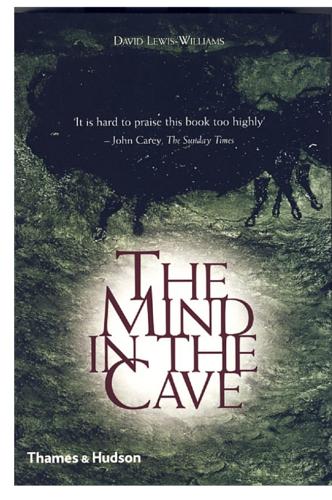
The Mind in the Cave: Consciousness and the Origins of Art
by
David Lewis-Williams
Published 16 Apr 2004
Because our principal interest lies elsewhere, I summarize this evidence and avoid the detail of human fossil types, dates and dating techniques, site names, differences between what is known in Africa as the Middle Stone Age and the European Middle Palaeolithic, stone artefact typologies, demographic patterning within Africa, highly specific internal debates, and much else – fascinating and important though all these issues are.70 Although there is still some residual opposition, as well as a good deal of refining that needs to be done, researchers today generally accept the ‘Out of Africa’ hypothesis. They believe that the fossil evidence shows conclusively that the precursors of anatomically modern human populations evolved in Africa and left the continent in two waves. This hypothesis explains why western Europe was occupied by anatomically archaic Neanderthals for thousands of years before the Homo sapiens communities made their way west from the Middle East and through eastern Europe.
…
This is a point that some researchers into the origins of language do not appreciate. When we speak of the acquisition of fully modern language, we are in effect also speaking of the evolution of higher-order consciousness. In sum, in western Europe at the time of the Transition, the Neanderthals, descendants of the first out-of-Africa emigration, had a form of primary consciousness and the Homo sapiens communities had higher-order consciousness. This hypothesis clarifies a number of puzzling issues. First, it explains why the Neanderthals were able to borrow certain things from their new neighbours but not others. Because their consciousness and form of language were essentially confined to ‘the remembered present’, Neanderthals could learn how to make fine blades but they could not conceive of a spirit world to which people went after death.
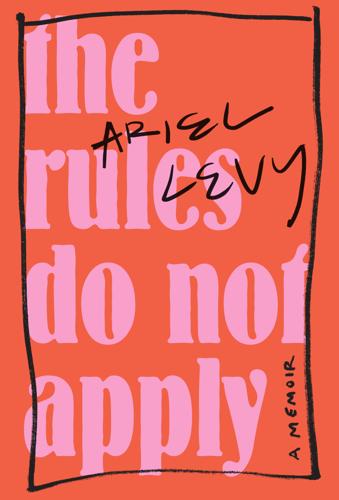
The Rules Do Not Apply
by
Ariel Levy
Published 14 Mar 2017
I did not, after all, have children. I was free to experience just a little more. I decided I would spend a weekend in the Kruger National Park. I was eager to see the copper herds of impala, the leopards winding themselves in the trees. I imagined my fellow tourists would be like Robert Redford and Meryl Streep in Out of Africa—daring loners. Instead, they were suburban couples from England and Australia on romantic vacations. At mealtimes, I wrote in my journal or read Disgrace, while the husbands and wives, boyfriends and girlfriends, sat at their tables laughing and drinking wine. Every evening, the staff placed rose petals in the shape of a heart on all the beds and I brushed them off into the trash.
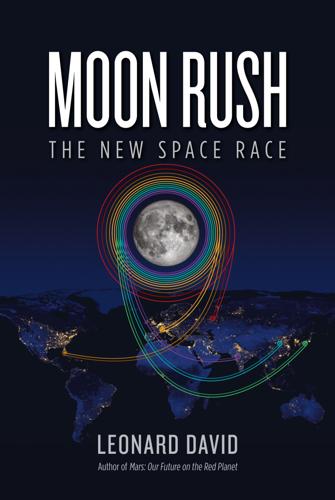
Moon Rush: The New Space Race
by
Leonard David
Published 6 May 2019
In this migration of the human species into space, it should be remembered that throughout history, plans that designate common access to natural resources have a notorious record of failure and ultimately do not result in full productivity. Systems that recognize private property have provided far more benefit to the world than those that attempt to provide common ownership. Whenever and however a return to the Moon occurs, one thing is assured. That return will be historically comparable to the movement of our species out of Africa about 150,000 years ago. If led by an entity representing the democracies of the Earth, our return to the Moon will rejuvenate the foundations of self-government that continue to enhance human well-being. APPENDIX Lunar Exploration Time Line Adapted from NASA Space Science Data Coordinated Archive (NSSDCA), NASA Goddard Space Flight Center, Greenbelt, Maryland. 1959 USSR Luna 1 - Jan 2, 1959 - Flyby USA Pioneer 4 - Mar 3, 1959 - Flyby USSR Luna 2 - Sep 12, 1959 - Impact USSR Luna 3 - Oct 4, 1959 - Probe 1961 USA Ranger 1 - Aug 23, 1961 - Attempted Test Flight USA Ranger 2 - Nov 18, 1961 - Attempted Test Flight 1962 USA Ranger 3 - Jan 26, 1962 - Attempted Impact USA Ranger 4 - Apr 23, 1962 - Impact USA Ranger 5 - Oct 18, 1962 - Attempted Impact 1963 USSR Luna 4 - Apr 2, 1963 - Flyby 1964 USA Ranger 6 - Jan 30, 1964 - Impact USA Ranger 7 - Jul 28, 1964 - Impact 1965 USA Ranger 8 - Feb 17, 1965 - Impact USA Ranger 9 - Mar 21, 1965 - Impact USSR Luna 5 - May 9, 1965 - Impact USSR Luna 6 - Jun 8, 1965 - Attempted Lander USSR Zond 3 - Jul 18, 1965 - Flyby USSR Luna 7 - Oct 4, 1965 - Impact USSR Luna 8 - Dec 3, 1965—Impact 1966 USSR Luna 9 - Jan 31, 1966 - Lander USSR Luna 10 - Mar 31, 1966 - Orbiter USA Surveyor 1 - May 30, 1966 - Lander USA Lunar Orbiter 1 - Aug 10, 1966 - Orbiter USSR Luna 11 - Aug 24, 1966 - Orbiter USA Surveyor 2 - Sep 20, 1966 - Attempted Lander USSR Luna 12 - Oct 22, 1966 - Orbiter USA Lunar Orbiter 2 - Nov 6, 1966 - Orbiter USSR Luna 13 - Dec 21, 1966 - Lander 1967 USA Lunar Orbiter 3 - Feb 4, 1967 - Orbiter USA Surveyor 3 - Apr 17, 1967 - Lander USA Lunar Orbiter 4 - May 8, 1967 - Orbiter USA Surveyor 4 - Jul 14, 1967 - Attempted Lander USA Explorer 35 (IMP-E) - Jul 19, 1967 - Orbiter USA Lunar Orbiter 5 - Aug 1, 1967 - Orbiter USA Surveyor 5 - Sep 8, 1967 - Lander USA Surveyor 6 - Nov 7, 1967 - Lander 1968 USA Surveyor 7 - Jan 7, 1968 - Lander USSR Luna 14 - Apr 7, 1968 - Orbiter USSR Zond 5 - Sep 15, 1968 - Return Probe USSR Zond 6 - Nov 10, 1968 - Return Probe USA Apollo 8 - Dec 21, 1968 - Crewed Orbiter 1969 USA Apollo 10 - May 18, 1969 - Orbiter USSR Luna 15 - Jul 13, 1969 - Orbiter USA Apollo 11 - Jul 16, 1969—First Crewed Landing USSR Zond 7 - Aug 7, 1969 - Return Probe USA Apollo 12 - Nov 14, 1969 - Crewed Landing 1970 USA Apollo 13 - Apr 11, 1970 - Crewed Landing (aborted) USSR Luna 16 - Sep 12, 1970 - Sample Return USSR Zond 8 - Oct 20, 1970 - Return Probe USSR Luna 17 - Nov 10, 1970 - Rover 1971 USA Apollo 14 - Jan 31, 1971 - Crewed Landing USA Apollo 15 - Jul 26, 1971 - Crewed Landing USSR Luna 18 - Sep 2, 1971 - Impact USSR Luna 19 - Sep 28, 1971 - Orbiter 1972 USSR Luna 20 - Feb 14, 1972 - Sample Return USA Apollo 16 - Apr 16, 1972 - Crewed Landing USA Apollo 17 - Dec 7, 1972—Last Crewed Landing 1973 USSR Luna 21 - Jan 8, 1973 - Rover USA Explorer 49 (RAE-B) - Jun 10, 1973 - Orbiter 1974 USSR Luna 22 - Jun 2, 1974 - Orbiter USSR Luna 23 - Oct 28, 1974 - Lander 1976 USSR Luna 24 - Aug 14, 1976 - Sample Return 1990 JAPAN Hiten - Jan 24, 1990 - Flyby and Orbiter 1994 USA Clementine - Jan 25, 1994 - Orbiter 1997 PEOPLE’S REPUBLIC OF CHINA/USA AsiaSat 3/HGS-1 -Dec 24, 1997 - Lunar Flyby 1998 USA Lunar Prospector - Jan 6, 1998 - Orbiter 2003 EUROPE SMART 1 - Sep 27, 2003 - Lunar Orbiter 2007 JAPAN Kaguya (SELENE) - Sep 14, 2007 -Lunar Orbiter CHINA Chang’e 1 - Oct 24, 2007 - Lunar Orbiter 2008 INDIA Chandrayaan-1 - Oct 22, 2008 - Lunar Orbiter 2009 USA Lunar Reconnaissance Orbiter - Jun 18, 2009 - Lunar Orbiter USA LCROSS - Jun 18, 2009 - Lunar Impactor 2010 CHINA Chang’e 2 - Oct 1, 2010 - Lunar Orbiter 2011 USA Gravity Recovery and Interior Laboratory (GRAIL) -Sep 10, 2011 - Lunar Orbiter 2013 USA Lunar Atmosphere and Dust Environment Explorer (LADEE) - Sep 6, 2013 - Lunar Orbiter CHINA Chang’e 3 - Dec 1, 2013 - Lunar Lander and Rover 2014 CHINA Chang’e 5 Test Vehicle - Oct 23, 2014 -Lunar Flyby and Return 2018 CHINA Queqiao - May 20, 2018 - Lunar Relay Satellite CHINA Chang’e 4 - Dec 7, 2018 - Lunar Far Side Lander 2019 on SOUTH KOREA Korea Pathfinder Lunar Orbiter CHINA Chang’e 5 Lunar Sample Return Mission INDIA Chandrayaan-2 Moon Orbiter, Lander, and Rover INDIA TeamIndus Lunar Lander (Private Mission) ISRAEL SpaceIL Lunar Lander (Private Mission) USA Astrobotic Peregrine Lunar Lander (Private Mission) USA Moon Express (Private Mission) RUSSIA Lunar 25 (Lander); Luna 26 (Orbiter); Luna 27 (Lander); Luna 28 (Lander/Sample Return); Luna 29 (Lander/Rover) JAPAN Small Moon Landing Demonstration Machine ACKNOWLEDGMENTS Special thanks to David Kring, Lunar and Planetary Institute; James Head, Brown University; Ian Crawford, Birkbeck College London; Bernard Foing, European Space Agency; Angel Abbud-Madrid, Center for Space Resources at the Colorado School of Mines; Mark Robinson, Arizona State University; William Hartmann, Planetary Science Institute; Clive Neal, University of Notre Dame; and the solid footing of Apollo moonwalkers Buzz Aldrin and Harrison Schmitt for their assistance in writing this book.
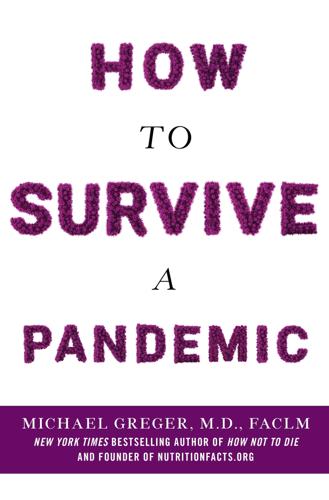
How to Survive a Pandemic
by
Michael Greger, M.D., FACLM
The public health threat of emerging viral disease. Journal of Nutrition 127:951S-56S. 867. Voigt K. 2005. What ails Asia. Wall Street Journal, April 22. 868. Beran GW, Steele JH. 1994. Handbook of Zoonoses (London, UK: CRC Press). 869. Calvert S, Kohn D. 2005. Out of Africa: a baffling variety of diseases. Baltimore Sun, May 15, p. 4A. 870. Calvert S, Kohn D. 2005. Out of Africa: a baffling variety of diseases. Baltimore Sun, May 15, p. 4A. 871. Benenson AS (ed.), 1990. Control of Communicable Diseases in Man, 15th Edition (Washington, DC: American Public Health Association). 872. Torrey EF, Yolken RH. 2005.
…
Pan Africa News 3(2):1–6. 954. Rose, AL. 1998. Growing commerce in bushmeat destroys great apes and threatens humanity. African Primates 3:6–10. 955. Walsh PD, Abernethy KA, Bermejo M, et al. 2003. Catastrophic ape decline in western equatorial Africa. Nature 422:611–614. 956. Fox M. 2000. The killer out of Africa. Hobart Mercury (Australia), February 9. 957. Karpowicz P, Cohen CB, van der Kooy D. 2004. Is it ethical to transplant human stem cells into nonhuman embryos? Nature Medicine 10(4):331–5. 958. Gunter C, Dhand R. 2005. The chimpanzee genome. Nature 437(7055):47. 959. Lovgren S. 2005. Chimps, humans 96 percent the same, gene study finds.

The Rational Optimist: How Prosperity Evolves
by
Matt Ridley
Published 17 May 2010
Yet even now there was no hint of what was to come, no clue that this was anything but another evolutionary avatar of a precariously successful predatory ape. The new African form, with its fancy tools, ochre paint and shell-bead ornaments, might have displaced its neighbours, but it would now settle down to enjoy its million years in the sun before gracefully giving way to something new. This time, however, some of the L3 people promptly spilled out of Africa and exploded into global dominion. The rest, as they say, is history. Starting to barter Anthropologists advance two theories to explain the appearance in Africa of these new technologies and people. The first is that it was driven by climate. The volatility of the African weather, sucking human beings into deserts in wet decades and pushing them out again in dry ones, would have placed a premium on adaptability, which in turn selected for new capabilities.
…
For simplicity, I am going to call all the species of hominid that lived between about 1.5 million and 300,000 years ago ‘erectus hominid’ after the longest-established and most comprehensive name used for hominids of this period. The current fashion is to include four species within this group: H. ergaster earliest in Africa, H. erectus a little later in Asia, H. heidelbergensis coming out of Africa later into Europe and its descendant, H. neanderthalensis. See Foley, R.A. and Lahr, M.M. 2003. On stony ground: Lithic technology, human evolution, and the emergence of culture. Evolutionary Anthropology 12:109–22. p. 51 ‘it was a natural expression of human development’. See Richerson, P. and Boyd, R. 2005.

Connectography: Mapping the Future of Global Civilization
by
Parag Khanna
Published 18 Apr 2016
Jackhammers pound away day and night to construct a giant granite addition to the mosque, as well as a multistory elevated walkway for the throngs of pilgrims walking in centripetal circles around the giant black Kaaba. The fastest-growing source of new visitors to Saudi is not surprisingly the continent with the most rapidly growing number of converts to Islam: Africa. Sixty thousand years ago, there were two main passages for man’s earliest migration out of Africa into Mesopotamia: the Sinai Peninsula and across the Red Sea over the Bab el-Mandeb Strait, which like the Bering Strait was as much as a hundred meters lower before the current cycle of climate change. A decade or two from now, that crossing will be much easier again with the planned construction of an ambitious fifty-four-kilometer bridge connecting Djibouti to Yemen.
…
To my dismay, it turns out my genetic ancestry is a blur of 22 percent Mediterranean (Sampras’s family emigrated from Greece), 17 percent Southeast Asian, 10 percent northern European, and only about 50 percent Southwest Asian. And I thought I was just an un-exotic Punjabi. National Geographic’s data suggests that mankind’s ancestry is mixed in ways few anthropologists even realized. Since man wandered out of Africa over sixty thousand years ago—the first wave of globalization—large-scale genetic mixing has occurred at regular junctures. Native Americans, for example, are descended as much from European and Middle Eastern genes as from the Altai region of Siberia. Maps 35, 36, and 37, corresponding to this chapter, appear in the map insert
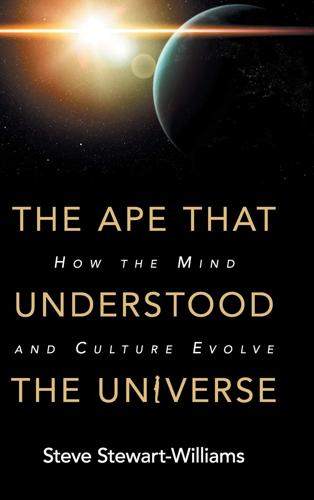
The Ape That Understood the Universe: How the Mind and Culture Evolve
by
Steve Stewart-Williams
Published 12 Sep 2018
Thus, hunting and gathering represents an extremely deep trend in our lineage. And third, after taking the hunter-gatherer baton from our premodern ancestors, humans continued to live as hunter-gatherers in Africa for most of the rest of our history. It’s only in the last 70,000 years or so that a handful of modern humans ventured out of Africa and began spreading around the globe. And it’s only in the last 10,000 years that some people gave up the hunter-gatherer lifestyle, and adopted agriculture instead. As evolutionary psychologists like to say, 10,000 years is a mere blink of an eye in evolutionary terms. Moreover, agriculture wasn’t common until at least 5,000 years ago, so that’s half a blink.
…
As Robert Wright observed in his book The Moral Animal, “We live in cities and suburbs and watch TV and drink beer, all the while being pushed and pulled by feelings designed to propagate our genes in a small hunter-gatherer population.” Or as S. Boyd Eaton put it, modern humans are “Stone Agers in the fast lane.”43 Critics of evolutionary psychology like to point out that human evolution didn’t just come to a standstill when agriculture took off or when humans migrated out of Africa. But no evolutionary psychologist is claiming (or should be claiming) that it did. Homo sapiens are not in Hardy-Weinberg equilibrium. (Google it if you’re interested; it’s an important concept in population genetics.) The claim is not that there’s been no evolutionary change since the dawn of agriculture or the African exodus.
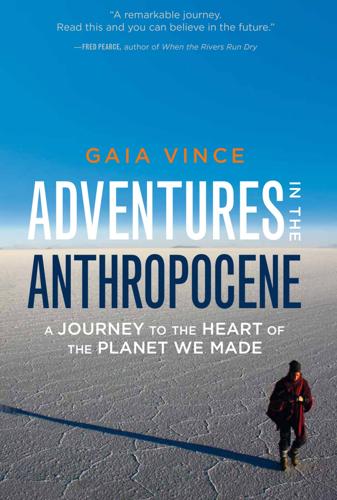
Adventures in the Anthropocene: A Journey to the Heart of the Planet We Made
by
Gaia Vince
Published 19 Oct 2014
A supervolcanic eruption at Toba in Indonesia 74,000 years ago nearly wiped us all out – the human population shrank to a few thousand. But, by 35,000 years ago, truly modern humans, indistinguishable from people alive today and littering caves and rocks with signs of their culture, had emerged and migrated out of Africa. Thus began the heroic ascent of man. In the Stone Age, our impact as a species on the planet was limited to some extinctions – particularly of large mammals – and some local landscape changes, such as the burning of forests. Technologies were primitive and minimal, and were fashioned entirely from renewable materials.
…
It was on the African savannahs that human bipedalism emerged – our upright-walking species, with two hands free for all-important tool use and carrying capacity, owes its extraordinary success in part to changes evolved on the windswept grassy plains, millions of years ago. Humans began ‘managing’ savannahs tens of thousands of years ago, enlarging and creating new ones by regularly burning vegetation, and cutting trees. We learned to track and outrun faster and stronger animals; and, when climate change sent the ruminants on long migrations we followed them out of Africa and across the globe. Journeying after those beasts gave humans a source of food over long distances, allowing us to trade and explore new pastures. When the world became warmer at the end of the last ice age, it was the grasses growing on savannahs that inspired the first farmers to begin cultivating crops.

The Start-Up of You: Adapt to the Future, Invest in Yourself, and Transform Your Career
by
Reid Hoffman
and
Ben Casnocha
Published 14 Feb 2012
John Hagel III, John Seely Brown, Duleesha Kulasooriya, and Dan Elbert, “Measuring the Forces of Long-term Change: The 2010 Shift Index,” Deloitte Center for the Edge (2010), 2, http://www.deloitte.com/assets/Dcom-UnitedStates/Local%20Assets/Documents/TMT_us_tmt/Shift%20Index%202010/us_tmt_si_shift%20Index2010_110310.pdf 14. Reed Hastings, as told to Amy Zipkin, “Out of Africa, Onto the Web,” New York Times, December 17, 2006, http://www.nytimes.com/2006/12/17/jobs/17boss.html 15. Rick Newman, “How Netflix (and Blockbuster) Killed Blockbuster,” U.S. News & World Report, September 23, 2010, http://money.usnews.com/money/blogs/flowchart/2010/9/23/how-netflix-and-blockbuster-killed-blockbuster.html 16.
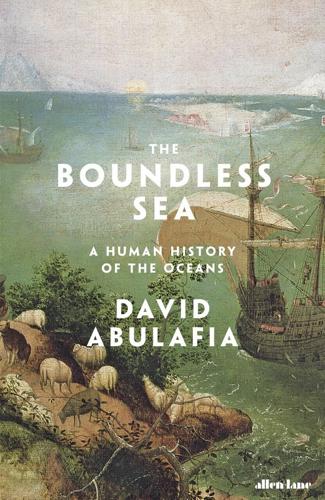
The Boundless Sea: A Human History of the Oceans
by
David Abulafia
Published 2 Oct 2019
There are finds of axes from northern New Guinea that can be shown to be 40,000–60,000 years old.7 In 2017 Australian archaeologists announced the discovery of a rock shelter in northern Australia that contained implements dating back to 65,000 years ago, and wondered whether there was interaction between what seem to be the first Australian members of Homo sapiens and other types of human who could still be found in east Asia, notably the mysterious Denisovans, who are thought to have been similar to but different from the European Neanderthals.8 There is therefore no doubt that the original Aborigines (very possibly the ancestors of the modern ones) arrived on the continent more than 60,000 years ago; and they must have done so by crossing spaces of over a hundred miles of open sea, often finding themselves out of sight of land.9 Archaeologists sometimes express surprise and puzzlement at the idea that early humans of the sapiens type could have turned into sailors. But it is not at all surprising; as humans, of various types, moved out of Africa to colonize much of the world by land they had to cross rivers, and used the skills learned on rivers to cross lakes; and having learned about lakes seas were a challenge, but one that could be met. Short sea journeys taken by the first humans to move eastwards on the route out of Africa may well have included a crossing of the Red Sea near Aden and a crossing of the Persian Gulf near Hormuz. These early humans had plenty of mental equipment, which they turned to good use in establishing that extraordinary mastery over nature that the Australian Aborigines still possess.
…
They were also places where different social mixes came into being, whether through the arrival of Genoese in Madeira and Flemings in the Azores, or the presence of Jewish converts, black slaves and Portuguese convicts in the remotest island, São Tomé. They also offer insights into the very earliest phases of the European slave trade out of Africa, insights that can now be developed further following excavations in the Cape Verde Islands. For this was a clean New World, the first New World, newer than the New World that was soon to be discovered, because all the island groups in the eastern Atlantic apart from the Canaries were uninhabited.
…
Those slaves who survived the ‘Middle Passage’, the journey across the Atlantic, were likely to be robust and resilient, and the constant flow of African labour into the Caribbean, and, once the Portuguese decided to capitalize on its resources, into Brazil, meant that high mortality among the African workers was not seen as a problem: they could be replaced, since the source of labour seemed to be bottomless: African war captives and other victims of internecine conflict in west Africa. For much of his career, Las Casas was so obsessed (with good reason) by the fate of the American Indians that he failed to register the appalling realities of the slave trade out of Africa. He was aware that the Indians were, legally, free subjects of the Crown, and had less sympathy for those who arrived as slaves in the New World, people who had never been subjects of the Spanish kings but had already lost their freedom before they were passed along the trade routes by the Portuguese.
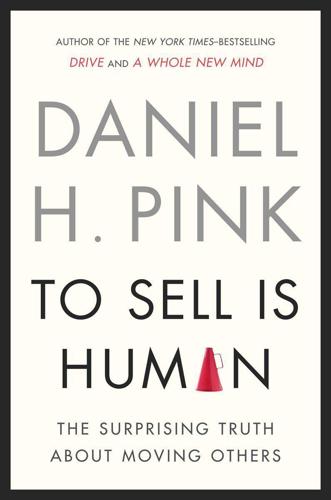
To Sell Is Human: The Surprising Truth About Moving Others
by
Daniel H. Pink
Published 1 Dec 2012
Lessons from Tinseltown At the epicenter of the entertainment business is the pitch. Television and movie executives take meetings with writers and other creative types, who pitch them ideas for the next blockbuster film or hit TV series. Motion pictures themselves offer a glimpse of these sessions. “It’s Out of Africa meets Pretty Woman,” promises an eager writer in the Hollywood satire The Player. “It’s like The Gods Must Be Crazy except the Coke bottle is an actress!” But what really goes on behind those studio walls is often a mystery, which is why two business school professors decided to helicopter behind the lines for a closer look.

"They Take Our Jobs!": And 20 Other Myths About Immigration
by
Aviva Chomsky
Published 23 Apr 2018
There are really two parts of the issue that we need to understand. First, we need to understand why the United States and other immigrant-receiving countries, like the European countries, are so wealthy. It is not just chance: it has much to do with the colonial world system that emerged after 1492, which drained resources out of Africa, Latin America, and Asia and into the United States and Europe. Given this background, it is little wonder that inhabitants of these former regions want some of the wealth that was created out of their resources and their labor—but that they’re denied access to in their homelands. Second, we need to look at the continuing relationships and ties that make immigration a possibility and a reality.
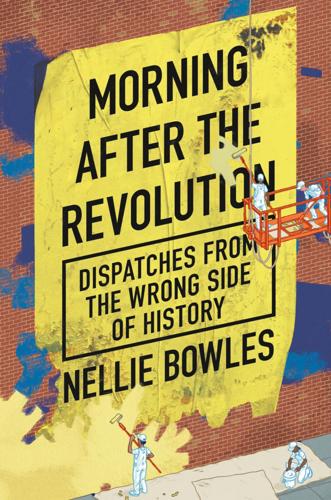
Morning After the Revolution: Dispatches From the Wrong Side of History
by
Nellie Bowles
Published 13 May 2024
We do three communal hums to settle the nervous system. Resisting the rocking, feeling embarrassed, is part of white-body supremacy. Being guarded, ungrounded, frozen in our bodies, and cut off from our hearts is normal and typical in white community. Resmaa comes on with a low, rhythmic voice. He shows an image with arrows out of Africa indicating the slave trade. “My ancestors were and are tied to creation itself,” he says. He tells us to keep looking at the image. “Something happened. Things continue to happen to those people. These black bodies were not immigrants. They were enslaved.” Over and over he says it: Something happened.
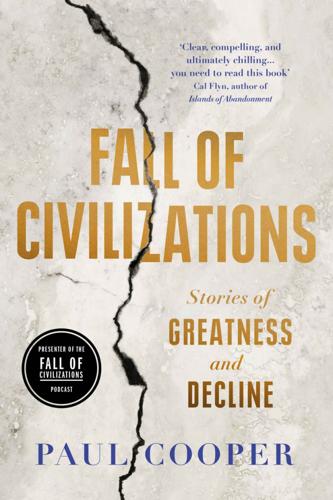
Fall of Civilizations: Stories of Greatness and Decline
by
Paul Cooper
Published 31 Mar 2024
For one thing, the Old World landmass is more than double the size of the Americas, and its population was much larger. The people of the Americas had simply arrived in their lands later than other humans. We evolved as a species in Africa between 800–300,000 years ago, and at some point in the last 200,000 years or so began to migrate out of Africa, following the River Nile and crossing the Red Sea, and on to the rest of the world. We reached southern Asia and China by about 80,000 years ago, and most of Europe by 30,000 years ago, pushing out species of archaic humans who lived there. This means that modern humans had already settled in virtually the whole Afro-Eurasian landmass for tens of thousands of years before they ever set foot in the Americas.
…
They brought their staple foods: bananas, a root vegetable called taro, sweet potatoes and sugarcane, as well as chickens and another food staple — the Polynesian rat. They also brought saplings of the paper mulberry tree, the fibres of which they used to create textiles. The settlement of the Polynesian islands was the final chapter of the journey of at least 100,000 years and 30,000 kilometres that had taken humanity out of Africa, through Asia and on to the Americas — the last of humanity’s great migrations. Easter Island was the final and most remote stop along this journey, and so in some ways humanity’s restless journey ended on these shores. One Polynesian sailors’ song gives voice to a lookout on one of these vessels, sighting land in the distance: ‘Now the far cries of land birds are heard as they swoop into the troughs of the waves upon the horizon.
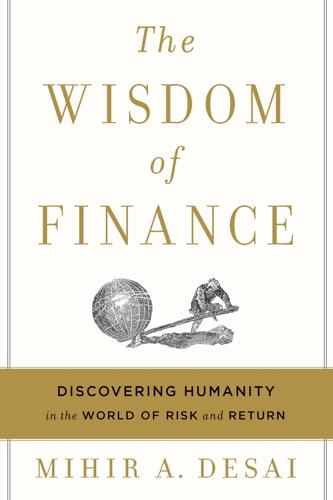
The Wisdom of Finance: Discovering Humanity in the World of Risk and Return
by
Mihir Desai
Published 22 May 2017
On the other hand, it’s an illuminating and resonant set of vignettes about his patients and their struggles—and you can relate to each of them. At the end of the story of Peter, a young man who unconsciously sabotages his friendships and relationships, Grosz concludes: “Karen Blixen [aka Isak Dinesen, author of Out of Africa] said ‘all sorrows can be borne if you put them into a story about them.’ But what if a person can’t tell a story about his sorrows? What if his story tells him? Experience has taught me that our childhoods leave in us stories like this—stories we never found a way to voice, because no one helped us find the words.
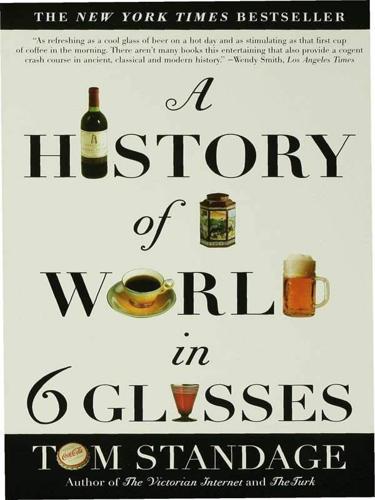
A History of the World in 6 Glasses
by
Tom Standage
Published 1 Jan 2005
Uncover their origins, and you may never look at your favorite drink in quite the same way again. BEER in MESOPOTAMIA and EGYPT 1 A Stone-Age Brew Fermentation and civilization are inseparable. —John Ciardi, American poet (1916-86) A Pint of Prehistory THE HUMANS WHO migrated out of Africa starting around 50,000 years ago traveled in small nomadic bands, perhaps thirty strong, and lived in caves, huts, or skin tents. They hunted game, caught fish and shellfish, and gathered edible plants, moving from one temporary camp to another to exploit seasonal food supplies. Their tools included bows and arrows, fishhooks, and needles.

My Year of Rest and Relaxation: A Novel
by
Ottessa Moshfegh
Published 9 Jul 2018
I realized I was wearing a hot pink Juicy Couture sweat suit. A tag from the Jewish Women’s Council Thrift Shop dangled from the cuff. There were new used VHS tapes stacked on the bare floor in the hallway, all Sydney Pollack movies: Three Days of the Condor, Absence of Malice, The Way We Were. Tootsie. Out of Africa. I had no memory of ordering Chinese food or going to the thrift store. And I had no memory of what I’d said in any message. Dr. Tuttle said she’d been “baffled by the emotional intensity” in my voice. “I’m concerned for you. I’m very, very, very concerned.” She sounded like she always sounded, her voice a breathy, high-pitched hoot.
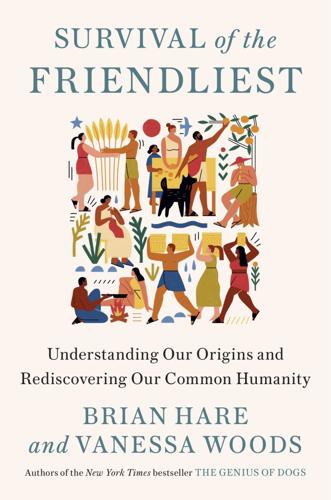
Survival of the Friendliest: Understanding Our Origins and Rediscovering Our Common Humanity
by
Brian Hare
and
Vanessa Woods
Published 13 Jul 2020
We had boned harpoons; nets for fishing and traps; and snares for birds and small mammals. Neanderthals, for all their hunting prowess, were never more than mid-ranking carnivores. With our new technology, we became the ultimate predator, largely immune to predation by other species. We ventured out of Africa and spread rapidly across Eurasia. We may even have reached as far as Australia within a few thousand years. This arduous crossing would have required planning and packing food for an indefinite journey, taking tools that could repair unforeseen damage and catch unfamiliar food, and solving future imagined problems like replenishing drinking water at sea.

Jaws
by
Sandra Kahn,Paul R. Ehrlich
Published 15 Jan 2018
In some cases we’ve simply speculated—we suspect that snoring in hunter-gatherer children was rare, for example, but we haven’t found evidence to support that notion—no reports from, say, people who lived with!Kung people on their sleeping habits, no evidence that leopards were attracted to snoring kids during humanity’s long trek out of Africa. Considering the relationship of snoring to modern jaw configuration, mouth breathing, and similar factors,21 we thought it likely that our hunter-gatherer ancestors were not heavy snorers. In any case, we’ve tried to make clear, at least by context, when we are simply speculating, and our reasons for doing so.
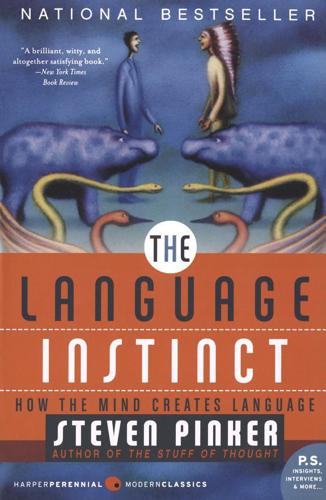
The Language Instinct: How the Mind Creates Language
by
Steven Pinker
Published 1 Jan 1994
Strikingly, this non-obvious racial grouping corresponds to the non-obvious linguistic grouping of Japanese, Korean, and Altaic with Indo-European in Nostratic, separate from the Sino-Tibetan family in which Chinese is found. The branches of the hypothetical genetic/linguistic family tree can be taken to depict the history of Homo sapiens sapiens, from the African population in which mitochondrial Eve was thought to evolve 200,000 years ago, to the migrations out of Africa 100,000 years ago through the Middle East to Europe and Asia, and from there, in the past 50,000 years, to Australia, the islands of the Indian and Pacific Oceans, and the Americas. Unfortunately, the genetic and migrational family trees are almost as controversial as the linguistic one, and any part of this interesting story could unravel in the next few years.
…
Homo erectus, which spread from Africa across much of the old world from 1.5 million to 500,000 years ago (all the way to China and Indonesia), controlled fire and almost everywhere used the same symmetrical, well-crafted stone hand-axes. It is easy to imagine some form of language contributing to such successes, though again we cannot be sure. Modern Homo sapiens, which is thought to have appeared about 200,000 years ago and to have spread out of Africa 100,000 years ago, had skulls like ours and much more elegant and complex tools, showing considerable regional variation. It is hard to believe that they lacked language, given that biologically they were us, and all biologically modern humans have language. This elementary fact, by the way, demolishes the date most commonly given in magazine articles and textbooks for the origin of language: 30,000 years ago, the age of the gorgeous cave art and decorated artifacts of Cro-Magnon humans in the Upper Paleolithic.
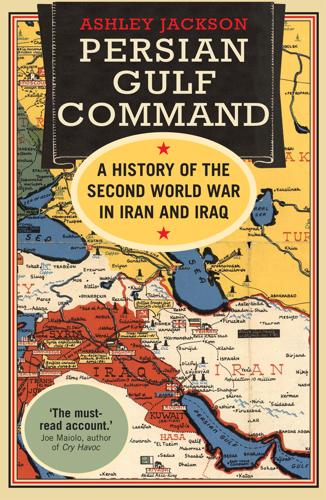
Persian Gulf Command: A History of the Second World War in Iran and Iraq
by
Ashley Jackson
Published 15 May 2018
No doubt whatsoever that this successful use of power politics has made a very deep impression.’2 Similarly, during the Eighth Army’s ‘Crusader’ offensive in the Western Desert in November, which relieved the siege of Tobruk, the Political Adviser Central Area reported that the Initial success of the Libyan offensive has overshadowed all other political effects. With a people as volatile as the Arab the effect is much exaggerated – indeed to talk to some of them one would think that not only are the Axis driven out of Africa but the war is as good as over. The more sober minded have watched the Russian campaign with renewed misgivings but there can be no doubt that Libya has riveted most of their attention. The effect of this blow, coming on top of the cumulative effects of the capture of most of Rashid Ali’s supporters in Persia, and on top of the transportation of the many Nazi supporters to Fao [al-Faw] and the obvious pro-British politics of the present Government, has certainly been very great.3 But things could swing both ways, and news of German victories, of which there continued to be many, caused great excitement and kept the flame of anti-British and anti-Soviet sentiment burning brightly across the region.
…
The 5th Division was almost immediately followed by the 56th Division, and Wilson decided to ‘regroup the remaining formations within the Command and issued orders for their location in the general area of Mosul–Kirkuk’.89 The Tenth Army was now able to release the greater part of its fighting units to join the campaign in North Africa. The Anglo-American ‘Torch’ landings the previous November had opened a new phase in the struggle to clear Axis forces out of Africa, and this was now reaching its culmination point.90 General Alexander, Commander-in-Chief Middle East, informed Churchill of his plans for a mid-January offensive intended to reach Tripoli. Churchill searched for ‘a source of further reinforcements, not only for North Africa but for a possible Turkish front’, and asked the Chiefs of Staff to look at the scale of the Tenth Army under Persia and Iraq Command: ‘With the German army no longer able to push beyond the Caucasus, the Tenth Army “can now be considered available in whole or in part for action in the Eastern Mediterranean or in Turkey”.’91 In February Wilson left PAIC to replace Alexander as Commander-in-Chief Middle East.

Bourgeois Dignity: Why Economics Can't Explain the Modern World
by
Deirdre N. McCloskey
Published 15 Nov 2011
Mencken 1917 (2006), p. 63. 29. Knight 1923 (1997), p. 137. 30. For example, “The migration of modern humans out of Africa resulted in a population bottleneck [in the small bands of humans migrating] and a concomitant loss of genetic diversity”(Campbell and Tishkoff 2008); “all systems show greater gene diversity in Africans than in either Europeans or Asians” (Jorde et al. 2000, abstract). There is, they say, “a marked founder effect associated with the expansion out of Africa.” 31. Pritchard et al. 1999, pp. 1795, 1797. 32. Personal communication at HedgePo’s Global CIO Summit, Gleneagles, Scotland, October 23, 2014.
…
The number of people disposed by nature to enact betterments did not leap up after 1800. Human inventiveness viewed as a certain share of any population with unusual combinations of prudence, courage, and hope is a background condition, available at any time from the first clear evidence of art among Homo sapiens race on the eve of the migrations out of Africa. The social hostility to the man of business and the rulers’ hostility to hierarchy-disturbing creative destruction was suppressing betterment. The ancient problem was, as Schoeck put it, “social controls . . . imposed in the name and interest of ‘the whole society.’” Andrew Coulson of the Cato Institute, among others, has suggested to me that there has to be in the story a threshold of people with good ideas.
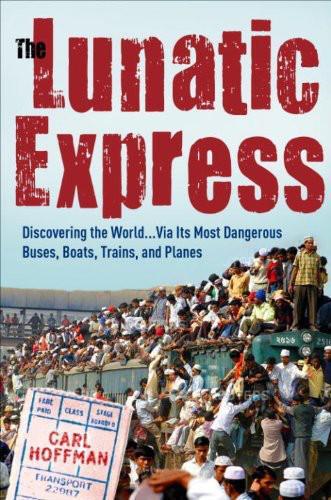
The Lunatic Express
by
Carl Hoffman
Published 16 Mar 2010
There were thousands of taxis and they were all hustling me, but something about Wambugo caught my eye. He had shoulder-length dreadlocks and the whites of his eyes were as red as if they’d been caught by a too-close camera flash, but there was kindness in them. I hired him take me to the house where Karen Blixen, the author of Out of Africa, had lived, and on the way back into town I asked him if he knew any matatu drivers that I could spend the day with. Yes, he said, and in minutes he was on his cell phone and it was all arranged: he’d pick me up at my hotel at five the following morning. It was still dark the next morning when I left my hotel, and there he was.
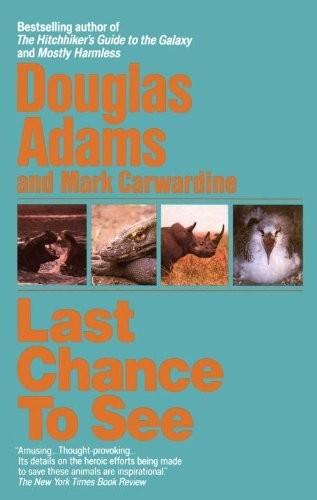
Last Chance to See
by
Douglas Adams
and
Mark Carwardine
Published 1 Jan 1990
Other species are still poached, but intensive protection over the past five years has at last begun to have an effect. In fact, there have been a number of rhino births and the population now stands at a slightly better twenty-two. Twenty-two. An astounding feature of the situation is this: the eventual value of a rhino horn, by the time it has been shipped out of Africa and fashioned into a piece of tasteless costume jewelry for some rich young Yemeni to strut around and pull girls with, is thousands of dollars. But the poacher himself, the man who goes into the park and risks his life to shoot the actual rhino that all of this time, effort, and money are going into protecting, will get about ten or twelve or fifteen dollars for the horn.
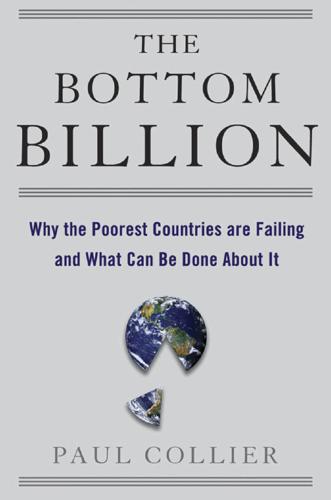
The Bottom Billion: Why the Poorest Countries Are Failing and What Can Be Done About It
by
Paul Collier
Published 26 Apr 2007
For example, Indonesia had corruption on a world-class scale. President Suharto took what we might politely term “Asian family values” to extraordinary heights of paternalistic generosity. But most of the money stayed in the country. Africans took their money, whether corruptly acquired or honestly acquired, out of Africa because the opportunities for investment were so poor. One reason why the investment opportunities were so poor was because the countries were stuck in one or another of the traps. Capital flight was a response to the traps. In the sophisticated language of professional economics, capital flight was a “portfolio choice”: people were holding their assets where they would yield a reasonable and a safe return.
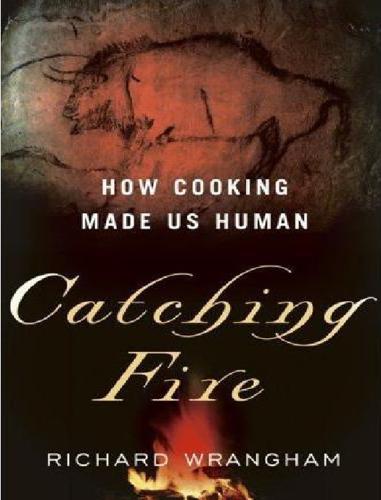
Catching Fire: How Cooking Made Us Human
by
Richard Wrangham
Published 15 Aug 2010
An early form of earth oven is the kind of innovation that could have been influential because it would have marked an important advance in cooking efficiency. Hunter-gatherers worldwide used earth ovens that employed hot rocks. The ovens do not appear to have been used by the people who expanded out of Africa more than sixty thousand years ago and colonized the rest of the world, since they are not recorded in Australia until thirty thousand years ago. However, it is possible that a simpler design, now vanished and forgotten, may have been used in earlier times. In recent earth ovens the hot rocks provide an even, long-lasting heat.

Thinking Machines: The Inside Story of Artificial Intelligence and Our Race to Build the Future
by
Luke Dormehl
Published 10 Aug 2016
Throughout The Player, a running joke is the lazy shorthand descriptions that Hollywood insiders use to describe the different projects they are working on, which are always billed as ‘Movie A meets Movie B’, with each referring to an existing popular hit. The joke is that the titles being mashed together to form new projects are totally diametrically opposed to one another. ‘It’s Out of Africa meets Pretty Woman,’ says a screenwriter, pitching her script to a studio executive at the start of the film. Later, someone describes a ‘psychic, political, thriller comedy with a heart’ that is ‘not unlike Ghost meets Manchurian Candidate’. Creating a computer program that could do the same thing – only much quicker – is well within our grasp.
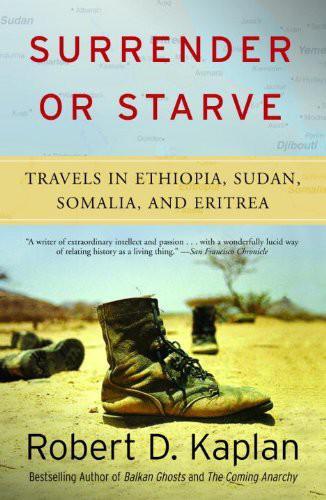
Surrender or Starve: Travels in Ethiopia, Sudan, Somalia, and Eritrea
by
Robert D. Kaplan
Published 1 Jan 1988
The American Spectator “Behind Ethiopia's Hunger.” Kaplan, Robert D. October 29, 1986. Wall Street Journal/Europe, “Why Sudan Starves on Western Aid.” Kaplan, Robert D. (April 1987). (Book Review). The American Spectator “The Harvest of Sorrow by Robert Conquest” Kaplan, Robert D. July 6, 1987. The New Republic, “Out of Africa.” Keating, Robert. (July 1986). Spin “Live Aid: The Terrible Truth.” Keating, Robert. (September 1986). Spin “Sympathy for the Devil.” Legum, Colin. May 20, 1986. International Herald Tribune, “Ethiopia: A Regime of Torture.” Matthews, Christopher J. January 21, 1985. The New Republic, “The Road to Korem.”
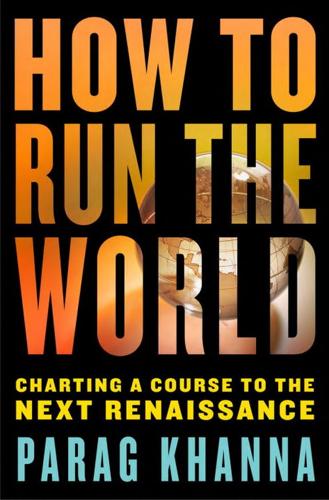
How to Run the World: Charting a Course to the Next Renaissance
by
Parag Khanna
Published 11 Jan 2011
Because he shares commissions on investments fifty-fifty with local brokers, he provides a great incentive for them to act professionally. “In sixteen years in Africa I’ve never had a customer fail, a trade not fulfilled. They have the same Bloomberg terminals in Zambia and do the trades in real time like rich countries do.” When the public sector alone ran the show in Africa, more capital fled out of Africa and into European banks than came into Africa in investment. Now, growth in Burundi and Tanzania has been greater than 7 percent for several years straight, savings rates are increasing, and cell phone and Internet usage have doubled every year. When Botswana’s president Festus Mogae visits the United States, he courts private equity firms and hedge fund managers and reminds them that investments in Africa can return more than 300 percent, impossible anywhere else in the world.
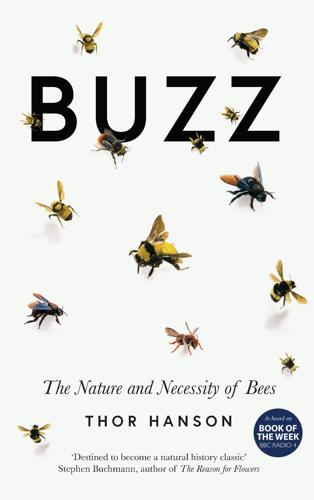
Buzz: The Nature and Necessity of Bees
by
Thor Hanson
Published 1 Jul 2018
Bumblebee ocelli and navigation at dusk. Science 183: 550–551. Weyrich, L. S., S. Duchene, J. Soubrier, L. Arriola, et al. 2017. Neanderthal behaviour, diet, and disease inferred from ancient DNA in dental calculus. Nature 544: 357–361. Whitfield, C. W., S. K. Behura, S. H. Berlocher, A. G. Clark, et al. 2007. Thrice out of Africa: Ancient and recent expansions of the honey bee, Apis mellifera. Science 314: 642–645. Whitman, W. (1855) 1976. Leaves of Grass. Secaucus, NJ: Longriver Press. Whitney, H. M., L. Chittka, T. J. A. Bruce, and B. J. Glover. 2009. Conical epidermal cells allow bees to grip flowers and increase foraging efficiency.

My Shit Life So Far
by
Frankie Boyle
Published 30 Sep 2009
Celebrities appear on these things to get exposure. Great, climb towards that money pot on the backs of dying children you sick, sick fucks. I’m appalled by telethons but I’d hate you to think that I don’t do my bit. I give a lot of money to the Third World. Indirectly, through my investments in landmines and diamorphine. I’ve made more money out of Africa than Paul Simon. There are a lot of shows out there that are boring or halfwitted, but you feel that if they just lowered their standards a couple of notches it could all become genuinely fun. Here are a few examples of what I’d like to see. THE 2050 HOUSE A modern British family are set the task of living as they would in the year 2050.
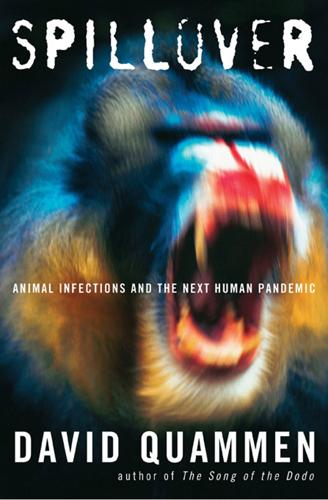
Spillover: Animal Infections and the Next Human Pandemic
by
David Quammen
Published 30 Sep 2012
Then, later still, its real significance would emerge from work at the level of molecular genetics. Another perceived starting point was Gaëtan Dugas, the young Canadian flight attendant who became notorious as “Patient Zero.” You’ve heard of him, probably, if you’ve heard much of anything about the dawning of AIDS. Dugas has been written about as the man who “carried the virus out of Africa and introduced it into the Western gay community.” He wasn’t. But he seems to have played an oversized and culpably heedless role as a transmitter during the 1970s and early 1980s. As a flight steward, with almost cost-free privileges of personal travel, he flew often between major cities in North America, joining in sybaritic play where he landed, notching up conquests, living the high life of a sexually voracious gay man at the height of the bathhouse era.
…
“In fact, it is highly likely that several other persons”: Leroy et al. (2009), 5. VIII. The Chimp and the River 385. “profoundly depressed” in number: Gottlieb et al. (1981), 251. 387. “strikingly similar to the syndrome of immunodeficiency”: Pitchenik et al. (1983), 277. 387. written about as the man who “carried the virus out of Africa”: e.g., Wikipedia, “Gaëtan Dugas,” citing Auerbach et al. (1984), although Auerbach et al. do not make that assertion. 387. vain but charming, even “gorgeous” in some eyes: Shilts (1987), 47. 388. “I’ve got gay cancer”: Shilts (1987), 165. 388. “Although the cause of AIDS is unknown”: Auerbach et al. (1984), 490. 388. to the more resonant “Patient Zero” of his book: Shilts (1987), 23. 389.
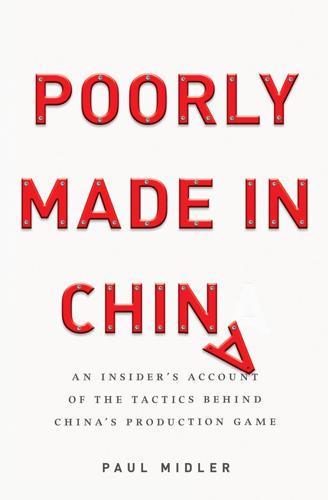
Poorly Made in China: An Insider's Account of the Tactics Behind China's Production Game
by
Paul Midler
Published 18 Mar 2009
“They’re real all right,” she said, surprised that I would be working at the exhibition but did not seem to know the difference. She then explained how you could tell. It had to do with how the light refracted from the diamonds. I thanked her for the easy lesson, and I asked her what she was doing at the show. She was from Dallas, Texas, but worked primarily out of Africa. Her business had her joining safaris there, and she sought out a particular kind of high-end adventure, one that put her in the company of big-game hunters who were spectacularly wealthy. On these hunting trips, she wore jewelry she had designed herself. Looking at just the necklace she wore, I could imagine her decked out in a safari outfit with jewels dangling about her neck, ears, and wrists, while holding an elephant gun.
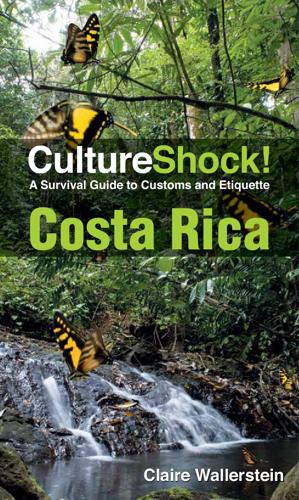
Culture Shock! Costa Rica 30th Anniversary Edition
by
Claire Wallerstein
Published 1 Mar 2011
Local newspaper advertisements announce houses for sale just 15 minutes outside San José and boast of their ‘great climate’. It’s not a joke, as within the space of just a few miles, the topography, vegetation and temperature can go from being strongly reminiscent of rolling Devon hills to something more like Out of Africa. 38 CultureShock! Costa Rica One of the country’s most distinctive features is its volcanoes. Seven of them are active and straddle the meeting place of two tectonic plates along the Pacific Rim of Fire. These also give rise to frequent earth tremors, occasional quakes and have helped build the three mountain ranges that run through the country.

What's Mine Is Yours: How Collaborative Consumption Is Changing the Way We Live
by
Rachel Botsman
and
Roo Rogers
Published 2 Jan 2010
Retrieved August 2009, www.ararental.org. 9. R. Meijkamp, Changing Consumer Behavior Through Eco-Efficient Services: An Empirical Study of Car Sharing in the Netherlands,” Design for Sustainability Research Programme, Delft University of Technology (2000), 296. 10. Reed Hastings quoted in Amy Zipkin, “Out of Africa, onto the Web,” New York Times (December 17, 2006), www.nytimes.com/2006/12/17/jobs/17boss.html?_r=2. 11. Joan O’C. Hamilton, “Home Movies,” Stanford Magazine, www.stanfordalumni.org/news/magazine/2006/janfeb/features/netflix.html. 12. Statistics retrieved from Netflix.com, September 2009, www.netflix.com/MediaCenter?
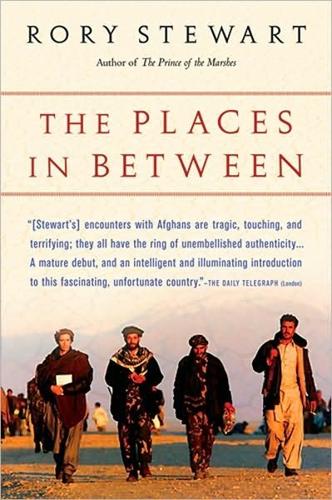
The Places in Between
by
Rory Stewart
Published 1 Jan 2004
I designed a journey around the world that would finish where I began in Turkey. I thought about evolutionary historians who argued that walking was a central part of what it meant to be human. Our two-legged motion was what first differentiated us from the apes. It freed our hands for tools and carried us on the long marches out of Africa. As a species, we colonized the world on foot. Most of human history was created through contacts conducted at walking pace, even when some rode horses. I thought of the pilgrimages to Compostela in Spain; to Mecca; to the source of the Ganges; and of wandering dervishes, sadhus, and friars who approached God on foot.
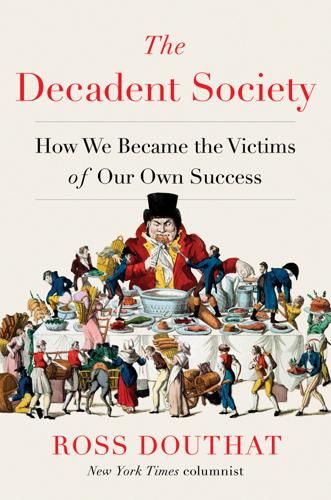
The Decadent Society: How We Became the Victims of Our Own Success
by
Ross Douthat
Published 25 Feb 2020
Different from the stereotypes of African backwardness that it was invented to rebuke, obviously, but also strikingly different from the modern liberal order as we know it, with technologies that exceed our own but a politics and culture that are proudly illiberal—indeed, monarchical and theocratic. So it isn’t just that Black Panther—in, yes, the inevitably superficial way of a blockbuster, with the inevitably play-it-safe conclusion—taps into a yearning for an out-of-Africa renaissance, for an African-shaped future that’s dynamic rather than dystopian: Make Africa Great, and then Make the World Great Again As Well. The different facets of Wakandan exceptionalism also suggest the different ways in which a renaissance might ultimately come about, the different trajectory-altering transformations—technological, political, and religious—that might lead our civilization or its inheritors up from decadence.

Scary Smart: The Future of Artificial Intelligence and How You Can Save Our World
by
Mo Gawdat
Published 29 Sep 2021
You, me and everyone we know are descended from this resilient bunch. To deal with the sudden change in climate, the survivors needed to be intelligent enough to invent new tools and ways of life. They needed to find new sources of food and improvise ways to stay warm. This is when the first real signs of intelligence in humans started to emerge. Migration out of Africa then followed towards the very end of the Middle Palaeolithic era, some 60,000 years ago. Figurative art, music, trade and other forms of behaviours that hint at intelligence, however, only started to become evident around 30,000 years ago. This is when examples of art such as the Venus figurines, the cave paintings in the Chauvet Cave and musical instruments, such as the bone pipe of Geissenklösterle, started to appear.
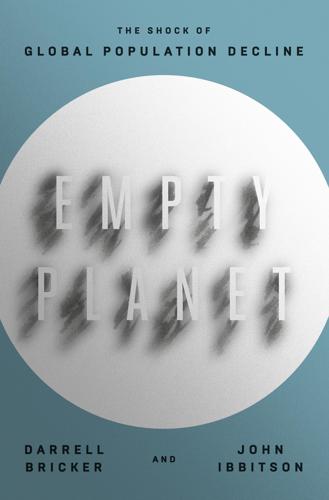
Empty Planet: The Shock of Global Population Decline
by
Darrell Bricker
and
John Ibbitson
Published 5 Feb 2019
Now Toba made things much, much worse. We foraged for tubers and harvested shellfish in the last inhabitable African enclaves. One more bit of bad news, and that might have been the end of us. This, at least, is one theory held by anthropologists and archeologists; there are others who suggest humans had already migrated out of Africa by this time and that the impact of Toba is exaggerated.7 But it’s hard to abandon the thought of a bedraggled humanity on the cusp of extinction struggling to nourish its few remaining young in a hardscrabble world, before the skies cleared, the earth wobbled, and the sun once again warmed the land.
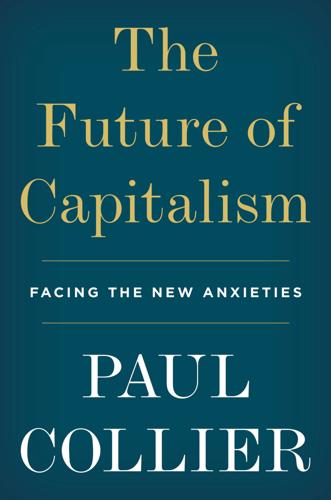
The Future of Capitalism: Facing the New Anxieties
by
Paul Collier
Published 4 Dec 2018
Framing these behaviours as a ‘human right’ belittles the obligations that they breach. Most people are not saints: while they recognize their obligations, if they are presented with enticing temptations, they take them. When this happens, the moral responsibility is on those who tempt. For decades, much of the capital flight out of Africa was facilitated by lawyers in London and banks in Switzerland. Similarly, the human capital exodus from Africa is an understandable response to public policies that create opportunities. To illustrate with an extreme example: Norway has accumulated a sovereign wealth fund worth $200,000 per person.
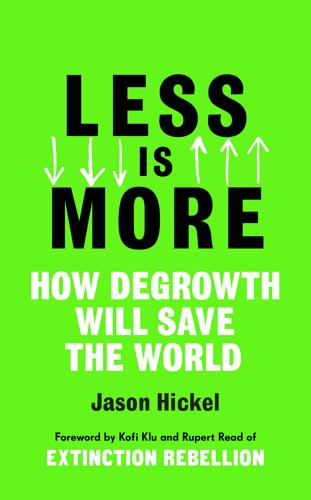
Less Is More: How Degrowth Will Save the World
by
Jason Hickel
Published 12 Aug 2020
I remember, as a postgraduate student, walking out of classes sometimes feeling almost overwhelmed with a sense of new perspective, as if I had just stepped out of a prosaic little cottage only to find myself on the lip of a vast escarpment, with landscapes of time rolling out before me. The story of humanity plays out like a journey, with our ancestors venturing out of Africa and migrating across the planet, over tens of thousands of years. Along the way they encountered a vast array of different ecosystems – from savannah to deserts, jungles to steppes, wetlands to tundra. With each new zone they entered, they had to learn how these ecosystems worked so that they could live within them sustainably, in reciprocity with the other species they depended on for nourishment and sustenance.
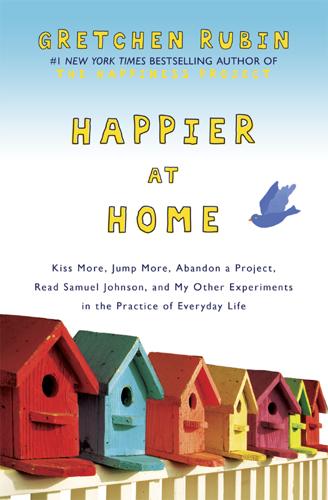
Happier at Home: Kiss More, Jump More, Abandon Self-Control, and My Other Experiments in Everyday Life
by
Gretchen Rubin
Published 3 Sep 2012
New York: Summit Books, 1992. BIOGRAPHIES AND MEMOIRS OF PARTICULAR INTEREST Boswell, James. The Life of Samuel Johnson. New York: Penguin, 2008. Delacroix, Eugene. The Journal of Eugène Delacroix. 3rd ed. Translated by Hubert Wellington. London: Phaidon Press, 1951. Dinesen, Isak [Karen Blixen]. Out of Africa. New York: Penguin, 2001. Dylan, Bob. Chronicles: Volume One. New York: Simon and Schuster, 2005. Jung, Carl. Memories, Dreams, Reflections. Edited by Aniela Jaffe. New York: Vintage, 1989. Spink, Kathryn. Mother Teresa. San Francisco: HarperSanFrancisco, 1997. Strachey, Lytton. Queen Victoria.
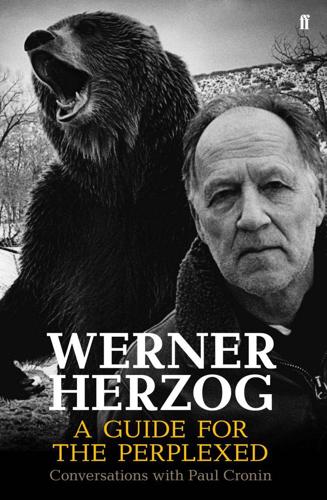
Werner Herzog - a Guide for the Perplexed: Conversations With Paul Cronin
by
Paul Cronin
Published 4 Aug 2014
What audiences see of the continent are things they aren’t used to, like court rituals and flag signals along the coast, and the wonderfully anarchic and chaotic crowd scenes have real life to them. In most films set in Africa the place is portrayed either as a crumbling, primitive and dangerous place full of savages, or with a kind of Out of Africa nostalgia. Cobra Verde deviates from all that. I set out to show things that had been ignored, like the continent’s sophisticated and complex social structures, its kingdoms, tribes and hierarchies. I even managed to get His Royal Highness Nana Agyefi Kwame II, the real king of Nsein, to play the king of Dahomey.
…
W., 1, 2, 3, 4 Music Room, The (Ray), 1, 2 My Best Fiend: filming, 1, 2, 3; Fitzcarraldo material, 1, 2; Golder’s role, 1, 2, 3n; material and stories, 1, 2, 3; opening, 1; relationship between Herzog and Kinski, 1; responses to, 1 My Son, My Son, What Have Ye Done, 1, 2, 3, 4, 5n Nain et géant (Méliès), 1 Nana Agyefi Kwame II, 1 Nanga Parbat, 1, 2 NASA, 1, 2, 3, 4, 5, 6 National Enquirer, 1 Nazarin (Buñuel), 1 Nazism: Aguirre question, 1; attitudes to, 1, 2, 3, 4, 5; capital punishment, 1; Eisner’s career, 1, 2; German cinema, 1, 2, 3, 4, 5; Jewish survivors, 1; Nosferatu rats, 1; occupation of Greece, 1; origins, 1; rise, 1, 2; threat, 1, 2 New German Cinema, 1, 2 New York Film Festival, 1, 2, 3 Newton, Isaac, 1, 2 Nicaragua, 1, 2, 3, 4 Nicholson, Jack, 1 Nietzsche, Friedrich, 1, 2 Nigger of the Narcissus, The (Conrad), 1 No One Will Play with Me, 1 Nosferatu: cameraman, 1; casting, 1; character of Nosferatu, 1; filming, 1, 2; image of Renfield, 1; importance to Herzog, 1; Kinski in, 1, 2; landscapes, 1, 2; language, 1; light and darkness in, 1; material in Aguirre, 1; mummies in, 1; Murnau’s film, 1, 2, 3; music, 1, 2; place in Herzog’s career, 1, 2; rats in, 1, 2; rejected by Cannes, 1; Renfield role, 1; responses to, 1, 2; script, 1, 2; Twentieth Century Fox, 1, 2, 3, 4; vampire myth, 1 Oberhausen Film Festival, 1, 2, 3, 4 Oberhausen Manifesto, 1, 2n, 3, 4 O’Connor, Flannery, 1 Ode to the Dawn of Man, 1 Of Walking in Ice, 1, 2 Okello, John, 1 On the Black Hill (Chatwin), 1 On Death Row, 1, 2, 3, 4, 5 Ondaatje, Michael, 1 Ophüls, Marcel, 1 Oppenheimer, Joshua, 1 Oresteia (Aeschylus), 1, 2 Orwell, George, 1 Out of Africa (Pollack), 1 Oxford English Dictionary, 1, 2 Pabst, Georg Wilhelm, 1 Pacheco, David, 1 Pachelbel, 1 Pacific Film Archive, 1, 2 Padre Padrone (Taviani brothers), 1, 2 Paganini, Niccolò, 1, 2 Palovak, Jewel, 1 Parsifal (Wagner), 1, 2 Pascal, Blaise, 1 Pashov, Stefan, 1 Pasolini, Pier Paolo, 1, 2 Passion of the Christ (Gibson), 1 Passion of Joan of Arc, The (Dreyer), 1, 2 Penn, Zak, 1, 2 Pepin the Short, 1 Peregrine, The (Baker), 1 Perry, Michael, 1, 2, 3, 4, 5, 6 Perth Film Festival, 1 Peters, Jon, 1 Petit, Philippe, 1 Petrarch, 1 Physics of Star Trek, The (Krauss), 1, 2n Picasso, Pablo, 1, 2 Pilgrimage, 1, 2 Pinochet, Augusto, 1 Pitt, Brad, 1 Pittsburgh, 1, 2, 3 Plage, Dieter, 1 Plainfield, Wisconsin, 1 Planète sauvage, La (Laloux), 1 Plateau, Joseph, 1 Poetic Edda, 1, 2 Pohle, Rolf, 1 Popol Vuh, 1 Popol Vuh (band), 1, 2 Prawer, S.

West With the Night
by
Beryl Markham
Published 1 Jan 1942
Ostrich and civet cat have contributed more to the requirements of civilized society, but I think it not unjust to say that the zebra clan, in spite of it all, is unaffected by its failure to join in the march of time. I base this conclusion on a very warm friendship that developed, not too long ago to remember, between myself and a young zebra. My father, who has raised and trained some of the best Thoroughbreds to come out of Africa, once had a filly named Balmy. He chose all of the names for his horses with painstaking care, sometimes spending many evenings at his desk on our farm at Njoro jotting down possibilities by the light of a kerosene lamp. Balmy was selected for this particular filly because no other name suited her so precisely.
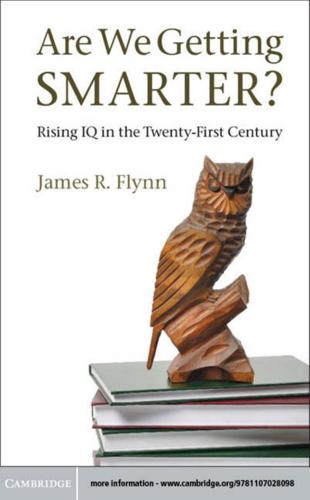
Are We Getting Smarter?: Rising IQ in the Twenty-First Century
by
James R. Flynn
Published 5 Sep 2012
The correlation was −0.82 for both the set of 113 nations and the set of 192. They also found correlations of similar size within the world’s six major geographic regions with the exception, oddly, of South America. Eppig et al. controlled for temperature and distance from Africa to test an evolutionary scenario called “out of Africa.” Lynn (1987) and Rushton (1995) posit that extreme cold creates a more challenging environment, one that maximizes selection for genes for intelligence. During the Ice Ages, the ancestors of East Asians are supposed to have been north of the Himalayas where the cold was most intense, the ancestors of whites north of the Alps where the cold was next worst, and the ancestors of blacks still in Africa where it was relatively warm.
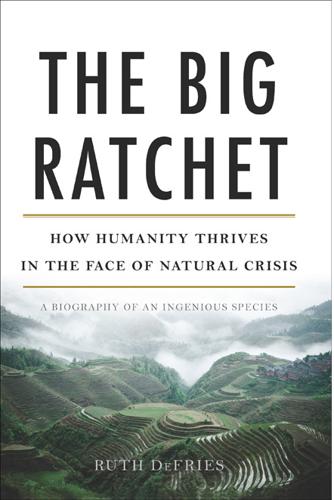
The Big Ratchet: How Humanity Thrives in the Face of Natural Crisis
by
Ruth Defries
Published 8 Sep 2014
http://humanorigins.si.edu/evidence/human-evolution-timeline-interactive. Sol, D., R. Duncan, T. Blackburn, P. Cassey, and L. Lefebvre. 2005. Big brains, enhanced cognition, and response of birds to novel environments. Proceedings of the National Academy of Sciences 102:5460–5465. Stewart, J., and C. Stringer. 2012. Human evolution out of Africa: The role of refugia and climate change. Science 335:1317–1321. Strimling, P., M. Enquist, and K. Eriksson. 2009. Repeated learning makes cultural evolution unique. Proceedings of the National Academy of Sciences 106:13870–13874. Sweeney, M., and S. McCouch. 2007. The complex history of the domestication of rice.
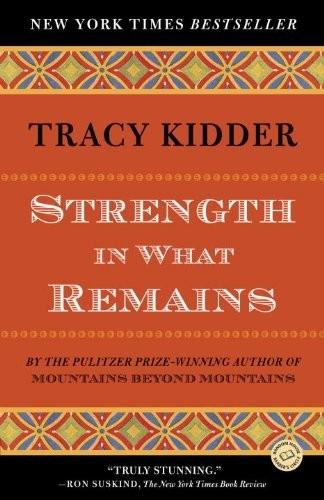
Strength in What Remains
by
Tracy Kidder
Published 29 Feb 2000
It lingered in my mind, the secondhand memory of someone else’s memories, as strange and unresolved as the memory of a dream. Three years later, I saw Deo again. I had arranged to meet him at a coffee shop in Hanover, New Hampshire, and I asked him for the story of his escape. He told it briefly at first. His six months on the run, with all their horrors, went by in only minutes. But then, once he was safely out of Africa and had arrived at JFK, his accounting grew detailed. As he went on, telling me how he had stood alone in line at Immigration, I began to sense he was no longer in the coffee shop with me. He was describing the moment when he understood that the Russian journalist wasn’t going to help him. His voice was steady.
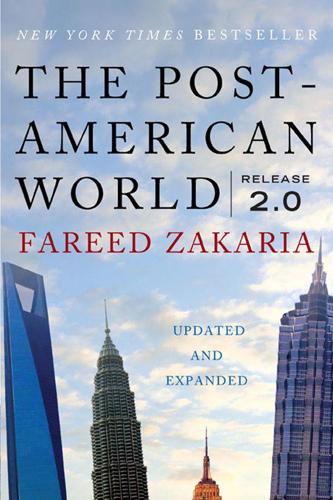
The Post-American World: Release 2.0
by
Fareed Zakaria
Published 1 Jan 2008
But whatever the apparent similarities, the circumstances are not really the same. Britain was a strange superpower. Historians have written hundreds of books explaining how London could have adopted certain foreign policies to change its fortunes. If only it had avoided the Boer War, say some. If only it had stayed out of Africa, say others. Niall Ferguson provocatively suggests that, had Britain stayed out of World War I (and there might not have been a world war without British participation), it might have managed to preserve its great-power position. There is some truth to this line of reasoning (World War I did bankrupt Britain), but to put things properly in historical context, it is worth looking at this history from another angle.
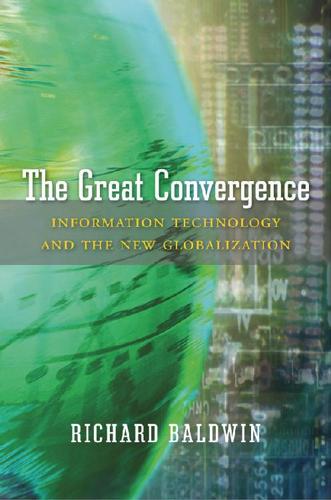
The Great Convergence: Information Technology and the New Globalization
by
Richard Baldwin
Published 14 Nov 2016
The DNA and archaeological data suggest that about forty millennia ago, humans were continuously present in Africa, Asia, and Australia (Figure 5). Northern Europe was settled somewhat later, say, 35,000 years ago. Around fifteen millennia ago, people entered the Americas; by 12,000 years ago they had reached Patagonia. This phase of globalization—within Africa and then out of Africa—lasted about 185 millennia. FIGURE 5: Globalization of the human race. The human race dispersed across the Middle East, Asia, and Australia over a span of tens of thousands of years. Europe, which was much less hospitable to human life, was populated tens of thousands of years later, sometime after 30,000 years ago.
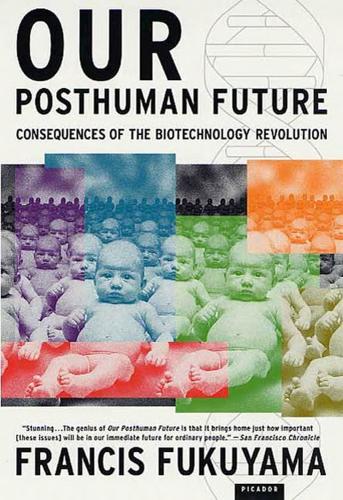
Our Posthuman Future: Consequences of the Biotechnology Revolution
by
Francis Fukuyama
Published 1 Jan 2002
We know, for example, that different population groups around the world have different distributions of blood types; roughly 40 percent of Europeans have type O blood, while Native Americans have almost exclusively type O.12 The alleles that are linked to sickle-cell anemia are more common among African-Americans than among whites. The population geneticist Luigi Luca Cavalli-Sforza has mapped out a speculative history of past migrations of early humans as they wandered out of Africa to different parts of the globe, based on distributions of mitochondrial DNA (that is, DNA that is contained within the mitochondria, outside the cell nucleus, which is inherited from the mother’s side).13 He has gone further, linking these populations to the development of languages, and has provided a history of early language evolution in the absence of written records.
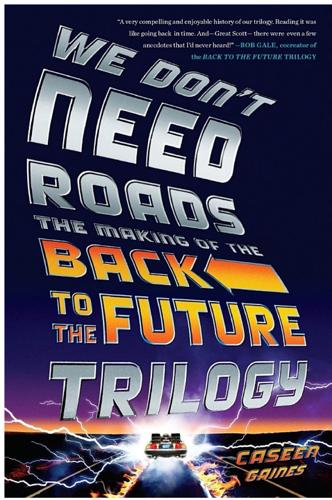
We Don't Need Roads: The Making of the Back to the Future Trilogy
by
Caseen Gaines
Published 22 Jun 2015
Before the end of the year, the movie arrived in well over a dozen countries, including Italy, France, West Germany, and the United Kingdom. In Japan, Future became the sixth-highest-grossing film in the country’s history. All told, an additional $170.5 million was earned overseas. Only two other films made more money internationally that year—Out of Africa and Rocky IV, which earned $179.1 million and $172.6 million, respectively. Critics and audiences alike applauded the movie, with Gene Siskel and Roger Ebert giving the movie two thumbs up, while journalists from major publications such as the New York Times and People praised the story, direction, and performances.
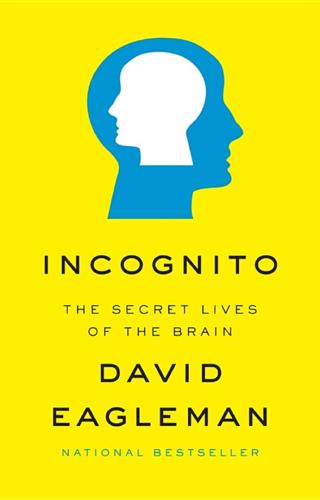
Incognito: The Secret Lives of the Brain
by
David Eagleman
Published 29 May 2011
THE TREMENDOUS MAGIC In 1949, Arthur Alberts traveled from his home in Yonkers, New York, to villages between the Gold Coast and Timbuktu in West Africa. He brought his wife, a camera, a jeep, and—because of his love of music—a jeep-powered tape recorder. Wanting to open the ears of the western world, he recorded some of the most important music ever to come out of Africa.1 But Alberts ran into social troubles while using the tape recorder. One West African native heard his voice played back and accused Alberts of “stealing his tongue.” Alberts only narrowly averted being pummeled by taking out a mirror and convincing the man that his tongue was still intact. It’s not difficult to see why the natives found the tape recorder so counterintuitive.
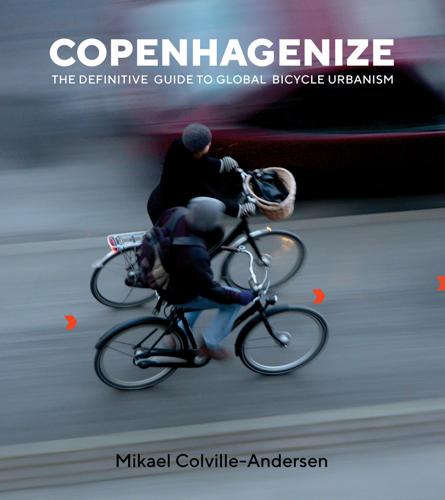
Copenhagenize: The Definitive Guide to Global Bicycle Urbanism
by
Mikael Colville-Andersen
Published 28 Mar 2018
Let’s agree from now on that anything with the word Sky in it is probably not conducive to city life. A conference like Winter Cities Shake-up is the unwitting offspring of society’s climaphobia. Its goal is to get people to enjoy outdoor life—even in the winter. Something homo sapiens have been doing since we wandered northward out of Africa. Don’t get me wrong—the Shake-up was a great conference with brilliant speakers from 60 cities around the world. I’m just trying to wrap my brain around the societal developments leading up to it. Is it enough to merely try and communicate the fact that “Hey! Winter’s okay!” and work to inspire citizens to “rediscover outdoor winter pleasures”—especially when their perception has been warped by a generation of vacuum-packing?
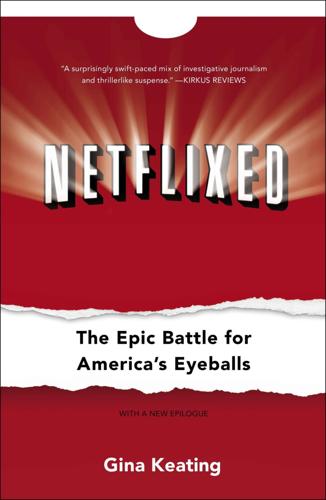
Netflixed: The Epic Battle for America's Eyeballs
by
Gina Keating
Published 10 Oct 2012
“Blockbuster buys movie download service Movielink.” Reuters, Aug. 8, 2007. ———. “Netflix scrambles future of TV and films.” Reuters, Dec. 1, 2010. Zeidler, Sue, and Keating, Gina. “Blockbuster takes on Netflix with new set-top box.” Reuters, Nov. 25, 2008. Zipkin, Amy. “The Boss: Out of Africa, Onto the Web.” New York Times, Dec. 17, 2006. INDEX The page numbers in this index refer to the printed version of this book. To find the corresponding locations in the text of this digital version, please use the “search” function on your e-reader. Note that not all terms may be searchable.
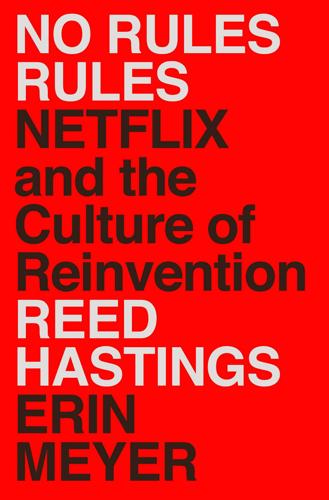
No Rules Rules: Netflix and the Culture of Reinvention
by
Reed Hastings
and
Erin Meyer
Published 7 Sep 2020
But Chelsea ran three times a week and we had twenty-four hours after each filming to get it translated in a bunch of languages and have it posted online. My job was to manage all of that. Then one day, my boss Aaron put a meeting on my calendar, which he titled, “The Future.” We were sitting in the Out of Africa conference room. That room is all yellow—yellow walls, rug, carpet, and chairs. Aaron pulled up a chair right in front of me and said: “Nothing’s been decided. But it’s fifty-fifty the program management role you play will be eliminated. We are discussing a reorg and your job might go away, but I won’t know for six to twelve months.”
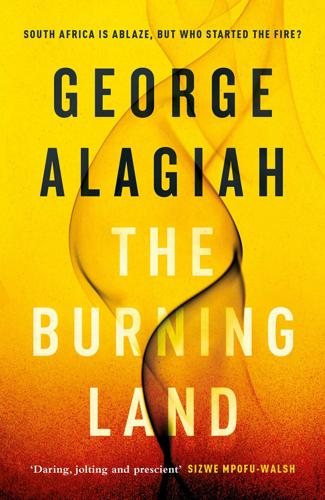
The Burning Land
by
George Alagiah
Published 28 Aug 2019
Of course blood would be spilled. How naive he’d been. Back in her Greenside guesthouse, Lindi called Anton in London. ‘Hey! How’s it feel to be back home?’ ‘The weird thing is that it does sort of feel like home – even after, what, twenty years.’ ‘You know what they say. You can take the girl out of Africa, but you can’t take Africa out of the girl. How are you getting on?’ ‘Did you tell anyone I was coming down here? Did the High Commission call back or anything?’ ‘No – and yes. I mean, yes, the High Commission did call back. And, no, all I said was that at some stage we might want to get involved.
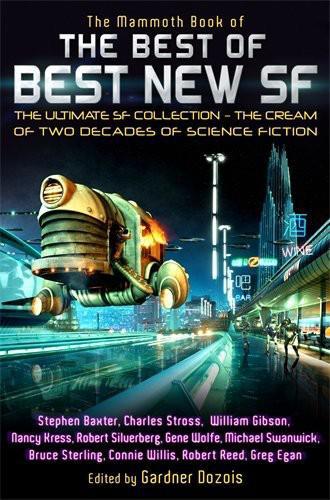
The Best of Best New SF
by
Gardner R. Dozois
Published 1 Jan 2005
“Well, our Christians do.” “That’s just the doctor’s little joke,” said Manimenesh. “Sometimes strange rumors spread about us, because we raid our slaves from the Nyam-Nyam cannibal tribes on the coast. But we watch their diet closely, I assure you.” Watunan smiled uncomfortably. “There is always something new out of Africa. One hears the oddest stories. Hairy men, for instance.” “Ah,” said Manimenesh. “You mean gorillas, from the jungles to the south. I’m sorry to spoil the story for you, but they are nothing better than beasts.” “I see,” said Watunan. “That’s a pity.” “My grandfather owned a gorilla once,” Manimenesh said.
…
It had been running for three days. It would only end when the hotel did. The party at the edge of the end of the world. In one glance she saw thirty newsworthy faces and peeked into her bag to check the charge level on her disc recorder. She talked to it as she moved between the faces to the bar. The Out of Africa look was the thing among the newsworthy this year: riding breeches, leather, with the necessary twist of twenty-first-century knowing with the addition of animal-skin prints. Gaby ordered a piña colada from the Kenyan barman and wondered as he shook it what incentive the management had offered him – all the staff – to stay.
…
Irony is: Now the tourists are gone, there’ve never been so many bloody animals, all headed in. Counted forty-five elephant in one day; no one gives a stuff anymore. Tell me, how can it be alien if the animals are going in there? How could gas know how to build something like that? Feels to me like it’s something very old, that animals knew once and have never forgotten, that’s come out of Africa itself. Everything starts here, in East Africa; the land is very old, and has a long memory. And strong: Maybe Africa has had enough of what people are doing to it – enough thinking – and has decided to claim itself back. That’s why the animals aren’t afraid. It’s giving it back to them.” “But taking yours away,” Gaby said.

The scramble for Africa, 1876-1912
by
Thomas Pakenham
Published 19 Nov 1991
We must turn back three years, to 27 June 1890, when Cecil Rhodes’s pioneer column splashed across the Motlousi river and set out to occupy and develop his vast new empire in the territory to which he would give his name. CECIL JOHN RHODES CHAPTER 21 A New Rand? Mashonaland and Matabeleland (Rhodesia), Cape Colony, the Transvaal and England 27 June 1890-December 1892 and before ‘I am tired of this mapping out of Africa at Berlin; without occupation, without development… the gist of the South African Question lies in the extension of the Cape Colony to the Zambesi.’ Cecil Rhodes in the Cape House of Assembly, 1888 It was just over fifty years since the voortrekkers, the Boer pioneers of the Great Trek, had shaken the dust of Cape Colony off their feet.
…
On 18 April he told the new nation that the ‘wrongs of the past must be forgiven and forgotten’. Mugabe was a statesman in the making. And Zimbabwe had one all-important advantage over most of its predecessors on the road to independence. Its new African rulers were quite as well educated as the men they replaced. * * * The Scramble out of Africa in the eleven years from 1957 to 1968 was pursued at the same undignified pace, taking the world as much by surprise, as the Scramble into Africa more than half a century earlier. Torschlusspanik (the ‘door-closing-panic’ of Bismarck’s day) seized France, Belgium and even Britain. Of course imperial perspectives were now very different from those of the 1880s.
…
When the Belgians scuttled out of the Congo in July 1960, they had left the country well prepared for civil war and anarchy. The prospect of their departure from Ruanda-Urundi, though delayed for two years, had the same disastrous effect. By 1968 the British had set free the last impoverished scraps of their empire south of the Zambezi: Basutoland (Lesotho), Bechuanaland (Botswana) and Swaziland. The Scramble out of Africa was complete, except for Portugal, the first European nation to go in. Portugal was now trapped up to the neck in Angola, Mozambique and Guiné. It was her policy, she claimed, to assimilate these ancient possessions. She had certainly exploited them systematically. After the Belgian Congo collapsed, Angola caught the prevailing fever, and soon ferocious guerrilla wars broke out in all three territories.
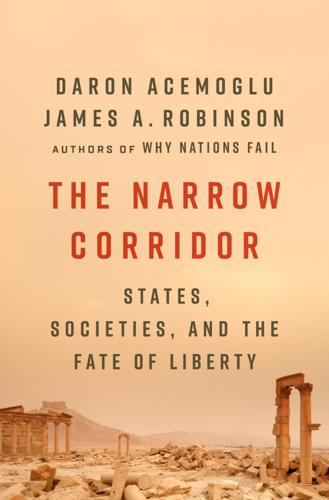
The Narrow Corridor: States, Societies, and the Fate of Liberty
by
Daron Acemoglu
and
James A. Robinson
Published 23 Sep 2019
Obviously it is not heading toward a digital dictatorship. History hasn’t ended in Lagos either. All the same, the city shows that even starting from desperate situations a move toward the corridor is possible. The Roman soldier and scholar Pliny the Elder remarked, “There is always something new out of Africa.” He was right. Today there is much local experimentation out of Africa, for people are finding a way to improve their crumbling state capacity and liberty. A huge mass of people still live in poverty in Lagos, and compared to those of us residing in the United States, their lives are short. However, they are a lot less short than they were in 1999 and there are far fewer poor people.

Lonely Planet Poland
by
Lonely Planet
Same KraftyCRAFT BEER (map Google map; %793 802 523; www.facebook.com/samekrafty; ul Nowomiejska 10, Stare Miasto; h2-11pm Mon, from 1pm Tue & Wed, until midnight Thu & Sun, until 1am Fri & Sat; jStare Miasto) Split across two locations facing each other on opposite sides of the street, Same Krafty is a convivial spot to sample a wide variety of Polish craft beers accompanied by slices of pizza. Pożegnanie z AfrykąCAFE (map Google map; %501 383 091; www.facebook.com/pozegnaniezafrykawawa; ul Freta 4/6, Nowe Miasto; h10am-7pm Mon-Fri, to 5pm Sat & Sun; gPlac Krasińskich) ‘Out of Africa’ is a cosy cafe that offers little beyond coffee – but what coffee! Choose from around 50 varieties, served in little pots, and a range of tempting cakes. LOCAL KNOWLEDGE PARTY BY THE VISTULA Running for around 5km along the west bank of the river between the Poniatowski and Gdańsk bridges, the Vistulan Boulevards (Bulwary Wiślane; map Google map; Powiśle) have been brilliantly landscaped and designed to become an attractive riverside promenade with terraces, pavilions, public art, artificial beaches and plenty of spots to eat, drink or just watch the world go by.
…
Restauracja PokusaPOLISH€€ (map Google map; %75 752 5347; Plac Ratuszowy 12; mains 18-25zł; h11am-11pm; W) With outdoor tables in the arcaded passageway encircling the Rynek, Pokusa is an agreeable option, with upbeat decor and a repertoire of mostly Polish food. Beyond meat and game, the list of salads is long, and there are a few pasta options. Pożegnanie z AfrykąCAFE (map Google map; %75 753 2100; www.pozegnanie.com; Plac Ratuszowy 4; h10am-6pm; W) This inviting branch of the cafe chain ‘Out of Africa’ peddles any number of imported beans within its dim and character-packed premises and, of course, serves great coffee. Sip and savour. 8Information Main Post Office (map; ul Pocztowa 9/10; h7am-9pm Mon-Fri, 9am-3pm Sat) Tourist Office (map; %51 950 9343; https://turystyka.jeleniagora.pl; Plac Ratuszowy 6/7; h8am-4pm Mon-Fri, 10am-2pm Sat & Sun; W) WORTH A TRIP CIEPLICE ŚLĄSKIE-ZDRÓJ Immediately to the south of Jelenia Góra, Cieplice (cheh-plee-tseh) is the oldest spa in the region, and a very restful place to squander an afternoon.

QI: The Second Book of General Ignorance
by
Lloyd, John
and
Mitchinson, John
Published 7 Oct 2010
They had bigger brains than modern humans, but they couldn’t run as fast and were shorter and less adept at using tools. What they lacked in height they made up for in strength: Neanderthal females had bigger biceps than the average male human does today. Humans and Neanderthals diverged into separate species somewhere between 440,000 and 270,000 years ago. Early Neanderthals moved out of Africa into the Middle East and northern Europe much sooner than Homo sapiens did, and lived there for four times as long. They became extinct 30,000 years ago (the last recorded Neanderthal community was on Gibraltar), which means that humans and Neanderthals coexisted for at least 12,000 years. No one knows why the Neanderthals died out.
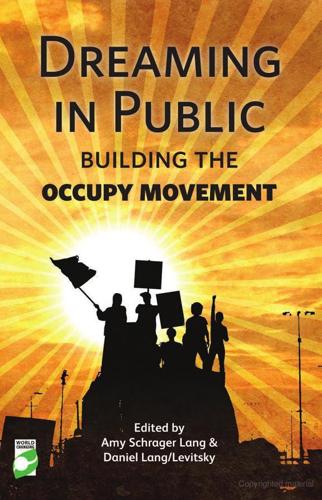
Dreaming in Public: Building the Occupy Movement
by
Amy Lang
and
Daniel Lang/levitsky
Published 11 Jun 2012
I will not go to a good school. I will live with the fact of darkness, without electricity. Etc etc. Now I am reinventing my own dialogue, I am taking apart my absence-and-hole-shaped existence. I am filling up the blank spaces. I am writing my story, my essence, my self. I am a young Nigerian. ‘Out of Africa always comes something new,’ some ancient Roman historian is supposed to have said. Because I am young I am burdened by the New. I know of the past injustices, the failed sunsets. I know of being labeled, being called a money-monger because I am Ibo, a fraudster because I am Nigerian, futureless because I am African.

An Economist Gets Lunch: New Rules for Everyday Foodies
by
Tyler Cowen
Published 11 Apr 2012
On ecoterrorism in Spain, see http://foodfreedom.wordpress.com/2010/07/14/uprooting-ecoterrorism-syngenta-gm-crops-sabotaged-in-spain/. On the Amish and GMOs, see for instance http://news.bbc.co.uk/2/hi/science/nature/7745726.stm. On GMOs in Africa, and also on European regulations, see Robert Paarlberg, Starved for Science: How Biotechnology Is Being Kept Out of Africa (Cambridge: Harvard University Press, 2009). 8. Eating Your Way to a Greener Planet On Ed Begley, see for instance http://www.johnnyjet.com/folder/archive/I-Flew-with-Ed-Begley-Jr-Possibly-the-Greenest-Person-Alive.html, http://www.edbegley.com/environment/tipsandfaq.html. On Mathias Gelber, see http://greenmanplanet.blogspot.com/.

The Hidden Family
by
Charles Stross
Published 2 May 2005
“Listen, they haven’t had a world war, have they?” “Nope, I’m afraid they have,” Miriam said, checking her watch to see if she could take another pain killer yet. “In fact, they’ve had two. One in the eighteen-nineties that cost them India. The second in the nineteen-fifties that, well, basically New Britain got kicked out of Africa. Africa is a mess of French and Spanish colonies. But they got a strong alliance with Japan and the Netherlands, which also rule most of northwest Germany. And they rule South America and Australia and most of East Asia.” “No tanks? No H-bombs? No strategic bombers?” “No.” Miriam paused. “Are you saying—” “Museum catalogues!”
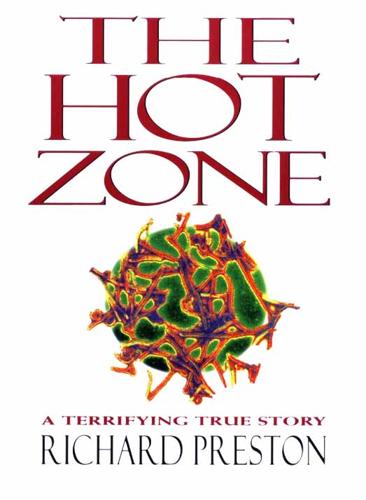
The Hot Zone
by
Richard Preston
Published 1 Jan 1994
One possibility is that the Reston strain originated in Africa and flew to the Philippines on an airplane not long ago. In other words, Ebola has already entered the net and has been traveling lately. The experts do not doubt that a virus can hop around the world in a matter of days. Perhaps Ebola came out of Africa and landed in Asia a few years back. Perhaps—this is only a guess—Ebola traveled to Asia inside wild African animals. There have been rumors that wealthy people in the Philippines who own private estates in the rain forest have been importing African animals illegally, releasing them into the Philippine jungle, and hunting them.
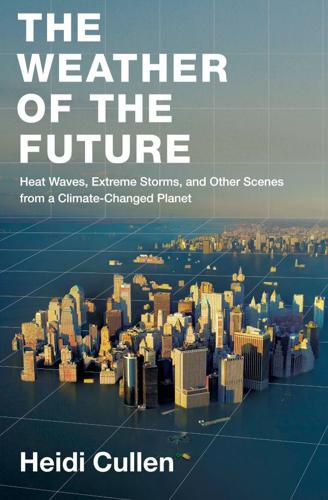
The Weather of the Future
by
Heidi Cullen
Published 2 Aug 2010
The dessication is considered by many scientists to be one of the most striking examples of climate variability the world has seen. A looming question now facing climate scientists is: when will another drought of this magnitude occur? Another question is: if and when such a drought recurs, who will emerge as the winner—the people or the sand? During the 1970s, striking images of this crisis made their way out of Africa and reached television screens and magazine covers all over the world. The pictures of barren landscapes and children with haunting eyes and distended bellies led to coordinated international humanitarian efforts to help reduce the suffering. The crisis also revived a long-standing debate within the scientific community over the fundamental causes of drought.

Messy: The Power of Disorder to Transform Our Lives
by
Tim Harford
Published 3 Oct 2016
At the end of 1940 and beginning of 1941, a small British army under General Richard O’Connor had destroyed a vastly larger Italian force in North Africa, taking 130,000 prisoners and pushing the Italians back from the borders of Egypt to the middle of Libya. It seemed likely that the British would soon advance to Tripoli itself, driving the Italians out of Africa entirely. Faced with this alarming prospect, the Italians accepted Hitler’s offer of assistance—a small, defensive detachment, just one division of tanks and one division of mechanized infantry. It was led by General Rommel.16 Rommel was flushed with success after the Blitzkrieg* invasion of France, when his panzer tanks had surged far ahead of their own troops, roaming freely behind French lines and taking 97,000 prisoners.
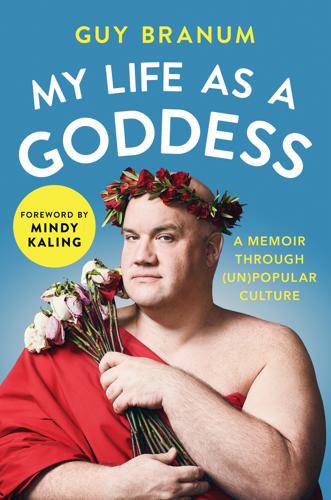
My Life as a Goddess: A Memoir Through (Un)Popular Culture
by
Guy Branum
Published 29 Jul 2018
Babette’s Feast is one of those well-reputed foreign films from before your time that you’ve never seen but people have told you to watch. It sounds vaguely boring and inoffensive, and while you’re not sure, there may be Nazis involved. Everything but that last part is true. It is, in actuality, an adaptation of a short story by Karen Blixen, the lady Meryl Streep played in Out of Africa. That’s how deep the 1980s prestige movie cred of Babette’s Feast goes: It was written by a Meryl Streep character. The story seems insanely dry. Two old sisters live in a community of Lutheran ascetics founded by their dad. Each has a chance at romance, one with a dashing army officer, the other with a French opera star.
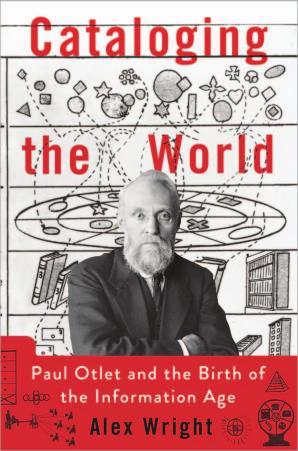
Cataloging the World: Paul Otlet and the Birth of the Information Age
by
Alex Wright
Published 6 Jun 2014
Such sentiments raised hackles among the Belgians. Some news outlets began to conflate the efforts of the organizers with the more radical agenda of the Marcus Garvey–led Universal Negro Improvement Association—which actively sought 170 H ope , L ost and Fo u nd to push Europe and the United States out of Africa—while others saw the Congress as a communist plot to stir up the Congolese natives against their occupiers. A correspondent for the Antwerp newspaper Neptune noted that it was reported in the United States that the organizers had received “remuneration from Moscow (Bolsheviki).” “The association has already organized its propaganda in the lower Congo, and we must not be astonished if some day it causes grave difficulties in the Negro village of Kinshasa, composed of all the ne’er-do-wells of the various tribes of the Colony, aside from some hundreds of labourers.”48 The flurry of public outrage spurred attendance at the event, so much so that white Europeans outnumbered the black participants by a wide margin.

The Premonition: A Pandemic Story
by
Michael Lewis
Published 3 May 2021
He wondered: perhaps the pythons had survived their injections because they had long ago evolved a tolerance for Ebola. That is, perhaps they were the species in which Ebola was stored. “The little game of finding the reservoir species has been easy for coronaviruses,” said Joe. “No one has ever figured it out for Ebola. People took whole zoos out of Africa and they never found the animal.” There were a couple of ways to solve this mystery. The less satisfying was to travel to Africa and gather a bunch of pythons and see if any harbored the Ebola virus. On one hand, you might find what you were looking for; on the other, if you didn’t, that did not mean it did not exist.

How Long Will Israel Survive Threat Wthn
by
Gregg Carlstrom
Published 14 Oct 2017
The water is also frequently used against Palestinians in the West Bank and East Jerusalem, even during relatively peaceful protests; I’ve only seen it deployed once against a Jewish demonstration. But they neglect to do basic law-and-order policing in Arab towns, where the crime rate is consequently much higher. “Before this, I can’t remember the last time I saw the police in our town,” Mahrous said. Out of Africa Months later, members of another disenfranchised group would hold their own protest against police brutality—but this time in Tel Aviv, normally an oasis of calm. They shut the Ayalon, the main urban freeway, at the height of the afternoon rush. Toward sunset they moved to city hall, where some protesters threw stones and bottles at the police, who fired tear gas and stun grenades in response.

The Hidden History of Burma
by
Thant Myint-U
At its center is the Irrawaddy River, brown and muddy, which snakes through teak jungles and sun-baked scrublands before fanning out into a vast, steamy delta and emptying into the Bay of Bengal. To the west and east are uplands of little valleys and increasingly higher hills. Burma has been home to modern humans since the first migrations out of Africa. There were others before: Homo erectus certainly, and probably Denisovans too, eastern cousins of the Neanderthals. Recent discoveries in genetic science are uncovering a fascinating past, with the Irrawaddy basin a hub of Pleistocene settlement, population expansion, and emigration over tens of thousands of years, to places as far afield as Australia and the Americas.
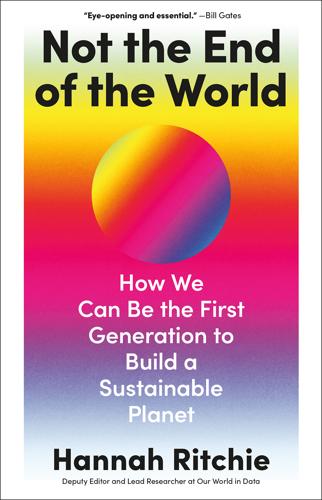
Not the End of the World
by
Hannah Ritchie
Published 9 Jan 2024
How we got to now We might love big animals more than bacteria and worms, but that hasn’t stopped us from hunting them. The most visible and profound impact that humans have had on the world’s wildlife lies in the transformation of our own kingdom: the mammals. The question of when humans migrated out of Africa, and first laid roots across the world’s continents, is one that has been hotly debated and contested. We now have many archaeological clues about these timings. But there is another way to trace the journey of humans across the planet: looking at when mammals went extinct. Wherever we see large mammals dying out, we find our ancestors’ footsteps not far ahead.

Powerhouse: The Untold Story of Hollywood's Creative Artists Agency
by
James Andrew Miller
Published 8 Aug 2016
It cost $60 million, which was a huge amount of money, and we took a huge hit to earnings within a month after they bought us. And by the way, Michael didn’t force me to make it; anyone would have made it. The last film Sydney Pollack had made was Out of Africa starring Robert Redford, which was wonderful. I liked the script for Havana. What none of us realized is between Out of Africa and Havana Bob had gotten older and the movie opened with a big close-up of his face on the screen, and while he was still incredibly good looking, he was an older person in a business that is still about younger people. We had great years, we had bad years—that’s the way the movie business works.
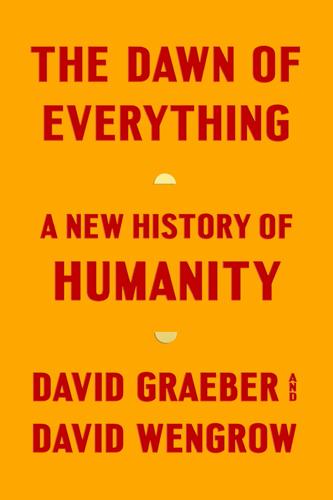
The Dawn of Everything: A New History of Humanity
by
David Graeber
and
David Wengrow
Published 18 Oct 2021
What we do know is that we are composite products of this original mosaic of human populations, which interacted with one another, interbred, drifted apart and came together mostly in ways we can still only guess at.5 It seems reasonable to assume that behaviours like mating and child-rearing practices, the presence or absence of dominance hierarchies or forms of language and proto-language must have varied at least as much as physical types, and probably far more. Perhaps the only thing we can say with real certainty is that, in terms of ancestry, we are all Africans. Modern humans first appeared in Africa. When they began expanding out of Africa into Eurasia, they encountered other populations such as Neanderthals and Denisovans – less different, but still different – and these various groups interbred.6 Only after those other populations became extinct can we really begin talking about a single, human ‘us’ inhabiting the planet. What all this brings home is just how radically different the social and even physical world of our remote ancestors would have seemed to us – and this would have been true at least down to around 40,000 bc.
…
The Sahara seems to have acted as a kind of turnstile for human evolution, periodically turning green and then dry again with the cyclical advance/retreat of monsoon rains, opening and shutting the gates of interaction between northern and southern parts of the African continent (see Scerri 2017). 5. Geneticists assume, reasonably enough, that a fair amount of genetic admixture did take place. 6. Green et al. 2010; Reich et al. 2010. Fossil evidence tells us that the first expansions of modern humans out of Africa began as far back as 210,000 years ago (Harvati et al. 2019), but these were often tentative and quite short-lived, at least until the more decisive radiations of our species began around 60,000 bc. 7. Recent and historical hunter-gatherers, as we shall see, present an enormous range of possibilities, from assertively egalitarian groups like the Ju/’hoansi of the Kalahari, the Mbendjele BaYaka of Congo or the Agta in the Philippines to assertively hierarchical ones like the populations of the Canadian Northwest Coast, the Calusa of Florida Keys or the forest-dwelling Guaicurú of Paraguay (these latter groups, far from being egalitarian, are known to have traditionally kept slaves and lived in ranked societies).
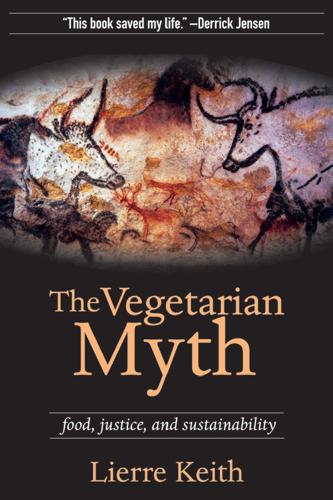
The Vegetarian Myth: Food, Justice, and Sustainability
by
Lierre Keith
Published 30 Apr 2009
He corresponded with doctors in Africa who witnessed the increase in cancer in populations that had been cancer-free, concomitant with their acculturation to European foods. My favorite Tanchou quote: “Cancer, like insanity, seems to increase with the progress of civilization.” Doctors across Africa submitted reports detailing essentially the same observations to publications like the British Medical Journal and The Lancet. And not just out of Africa. Articles and indeed entire books on the health of Native Americans from across North America appeared during the beginning of the twentieth century, drawing the same conclusions. Farther afield, British doctors reported from distant Fiji, where, among 120,000 Aborigines, there were exactly two reported cancer deaths.171 This continued on into the mid-twentieth century.

A Devil's Chaplain: Selected Writings
by
Richard Dawkins
Published 1 Jan 2004
I have always dreamed of returning to the site of this unwitting baptism, not because there was anything remarkable about the place, but because my memory is void before it. That garden with the two whitewashed huts was my infant Eden and the Mbagathi my personal river. But on a larger timescale Africa is Eden to us all, the ancestral garden whose Darwinian memories have been carved into our DNA over millions of years until our recent worldwide ‘Out of Africa’ diaspora. It was at least partly the search for roots, our species’ ancestors and my own childhood garden, that took me back to Kenya in December 1994. My wife Lalla happened to sit next to Richard Leakey at a lunch to launch his The Origin of Humankind 141 and by the end of the meal he had invited her (and me) to spend Christmas with his family in Kenya.

Living in a Material World: The Commodity Connection
by
Kevin Morrison
Published 15 Jul 2008
But even government agreements lost their meaning upon the outbreak of the Second World War, which terminated the cartel. The 1930s saw the emergence of copper supplies from more countries. The American grip on the copper market loosened, and African copper production started to take hold. 202 | LIVING IN A MATERIAL WORLD Out of Africa From 1870 to 1939 global copper production rose twenty-fold, far greater than the increases in lead, tin and zinc (Fetter, 1999), with the higher output coming from Chile, Canada, Northern Rhodesia and Belgian Congo. Just as in the battles of antiquity, copper was again used in warfare, but on a bigger scale during the Second World War: ‘Copper played a fundamental part in the slaughter that took place during the war with hundreds of thousands of pounds worth devoured by the assembly lines that made brass cartridges and cannon shells.

Hit Makers: The Science of Popularity in an Age of Distraction
by
Derek Thompson
Published 7 Feb 2017
Paul Hekkert, a professor of industrial design and psychology, received a grant several years ago to develop a grand theory for why people like what they like, a Unified Model of Aesthetics. Hekkert’s grand theory begins with two competing pressures. On the one hand, humans seek familiarity, because it makes them feel safe. On the other hand, people are charged by the thrill of a challenge, powered by a pioneer lust. Our ancestors didn’t just walk out of Africa; they also walked out of the Middle East, and out of the Balkans, and out of Asia, and out of North America. Humans have climbed the peak of Mount Everest and descended to the nadir of the Mariana Trench. They have radical curiosity crossed with conservative minds. This battle between discovery and familiarity affects us “on every level,” Hekkert said—not just our preferences for pictures and songs, but also for ideas and even people.
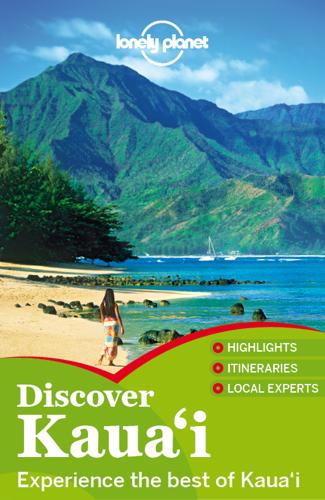
Discover Kaua'i Travel Guide
by
Lonely Planet
Over the years we have seen hundreds of visitors miss their tour because they waited until the last minute and there was a weather cancellation. Biplane TROPICAL BIPLANES Biplane ( 246-9123; Lihu'e Airport; tropicalbiplanes.com; 30/45/60min flight per couple $210/310/410) When it comes to fixed-wing aircraft, there is nothing like an open-cockpit biplane. It is the convertible of the sky. So if you want to have that Out of Africa moment, do consider this unique outfit, which flies a beautiful red replica Waco that can seat two people up front. Visibility is not the same as a helicopter, but the roar of the engine and the wind in your hair makes for an entirely different experience, and the route is customized. The company also offers cheaper flights in a Cessna 182, but a helo is preferable in this case.
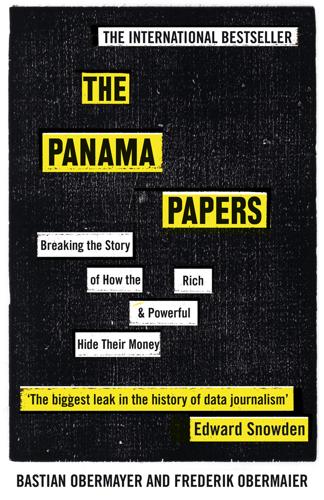
The Panama Papers: Breaking the Story of How the Rich and Powerful Hide Their Money
by
Frederik Obermaier
Published 17 Jun 2016
Half the world’s diamond deposits are found on African territory, along with a quarter of the world’s gold reserves, 10 per cent of oil reserves and 9 per cent of gas reserves. And then there’s uranium, mineral ores, and much more. The population gets virtually nothing from it: the money simply disappears, into the accounts of large multinational companies or the safes of the elite. Experts estimate that more than $50 billion flows out of Africa every year. $50 billion! On top of that, the African states avoid paying about $38 billion in taxes, because companies operating there divert their profits to tax havens, as revealed in 2013 by a group of experts led by Kofi Annan. After the meeting in Johannesburg, we and our colleagues continue to find links to Africa on an almost daily basis.

Merchant of Death: Money, Guns, Planes, and the Man Who Makes War Possible
by
Stephen Braun
and
Douglas Farah
Published 1 Apr 2008
It’s up to the individual member states to act.”25 By 1993, Bout had turned to South Africa as a base of operations on the continent. Although many of his aircraft were already operating out of Sharjah in the UAE, Bout began using Pietersburg Airport, 180 miles northeast of Johannesburg, as a hub from which he could ply his assorted trades. Bout was already flying gladiolas and other flower species out of Africa to the UAE, at a considerable profit. He began flying beef and poultry from South Africa to other African nations. On a continent with little transportation infrastructure, air freight was the only way to move perishable goods any distance, and Bout’s companies soon grew from the original three to several dozen.
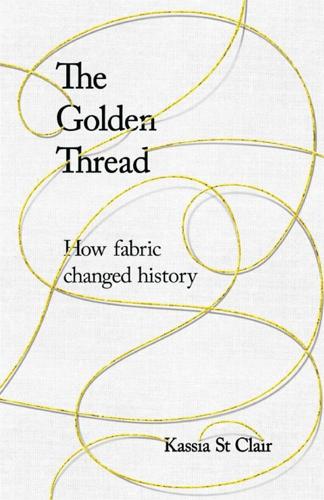
The Golden Thread: How Fabric Changed History
by
Kassia St Clair
Published 3 Oct 2018
Body lice feed, unsurprisingly, on human bodies, but live exclusively in clothing. Finding out when these lice evolved from their forebears, head lice, would indicate when humans began habitually wearing clothing. Going by this method, evidence suggests we only donned clothes sometime between 42,000 and 72,000 years ago, or around the time that humans began migrating out of Africa, implying that we remained naked for around a million years.11 Not all clothing has to be made of woven materials, of course. It’s likely that for a very long time people made do with draped animal pelts and then began roughly sewing these together (although they would perhaps have used fibrous thread to do so).
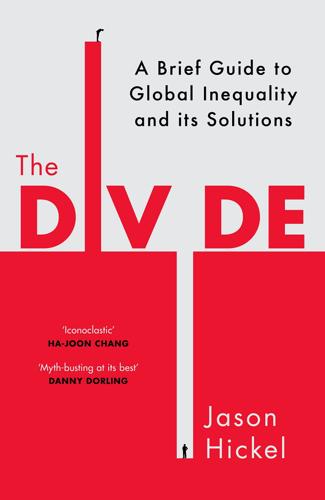
The Divide: A Brief Guide to Global Inequality and Its Solutions
by
Jason Hickel
Published 3 May 2017
If we tally up all types of legal and illegal financial flows, including investment, remittances, debt forgiveness and natural resource exports, we see that Africa sends more money to the rest of the world than it receives. The provocative graph on the following page illustrates the sheer scale of the capital that is dripping out of Africa’s open veins. In total, developing countries may have lost as much as $2 trillion in 2013 through hot money and trade mispricing, or a mind-boggling $14.3 trillion over the past decade.21 And in case these numbers aren’t staggering enough, keep in mind that the misinvoicing figures only reflect trade in goods, not trade in services.

The Heat Will Kill You First: Life and Death on a Scorched Planet
by
Jeff Goodell
Published 10 Jul 2023
As they wandered out from under the trees, our ancestors were exposed to more and more ultraviolet radiation, which damages the cellular structure of skin and can harm DNA. So Lucy and her ancestors evolved the ability to produce melanin, the dark-brown pigment that acts as a natural sunscreen. For several million years, our ancestors were all dark-skinned. It was only after they migrated out of Africa and settled in more northern climates, and in high latitudes, that dark skin became an evolutionary disadvantage because it limited the sunlight getting through to trigger the production of vitamin D. So in regions where the sunlight was less intense, lighter skin had an advantage. Dealing with heat was more complex.
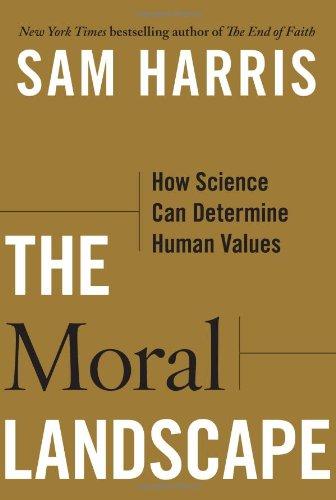
The Moral Landscape: How Science Can Determine Human Values
by
Sam Harris
Published 5 Oct 2010
Their migration would not have been without its hardships, however, as they were not alone: Homo neanderthalensis laid claim to Europe and the Middle East, and Homo erectus occupied Asia. Both were species of archaic humans that had developed along separate evolutionary paths after one or more prior migrations out of Africa. Both possessed large brains, fashioned stone tools similar to those of Homo sapiens, and were well armed. And yet over the next twenty thousand years, our ancestors gradually displaced, and may have physically eradicated, all rivals.4 Given the larger brains and sturdier build of the Neanderthals, it seems reasonable to suppose that only our species had the advantage of fully symbolic, complex speech.5 While there is still controversy over the biological origins of human language, as well as over its likely precursors in the communicative behavior of other animals,6 there is no question that syntactic language lies at the root of our ability to understand the universe, to communicate ideas, to cooperate with one another in complex societies, and to build (one hopes) a sustainable, global civilization.7 But why has language made such a difference?

The Blue Sweater: Bridging the Gap Between Rich and Poor in an Interconnected World
by
Jacqueline Novogratz
Published 15 Feb 2009
Though I was supposed to go to Côte d’Ivoire, my new boss informed me that I was to first fly to Nairobi to attend a women’s conference, where I would meet a lot of African women in the network and get a better sense of the organization itself. I could imagine Kenya much more easily than Côte d’Ivoire, especially since the film Out of Africa had recently been released (I didn’t have a clue about how little Kenyans cared for it at the time). Starting in Nairobi might be a gentler introduction to the continent. I remember making my way through the streets of Nairobi for the first time, stunned by the gentle shower of purple jacaranda flowers floating around me in Uhuru Park.
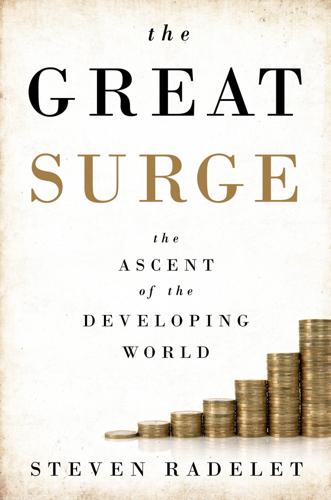
The Great Surge: The Ascent of the Developing World
by
Steven Radelet
Published 10 Nov 2015
Economists Daron Acemoglu, Simon Johnson, and James Robinson argued that where European colonizers faced serious health threats from disease (think the Belgian Congo in the late nineteenth century), they set up repressive institutions to extract resources through violence, and that these tactics and institutions established hundreds of years ago are central to understanding institutions in developing countries today.5 Other researchers suggest that differences in income today date back to inventions from three thousand years ago, or even further to the timing of the migration of different groups out of Africa to form new societies around the world. These hotly debated studies are helpful in understanding the historical origins of the large differences between rich and poor countries today. But their conclusions provide little help for people in today’s developing countries, as they suggest that their fate is tied to decisions and actions taken centuries ago or factors outside their control.
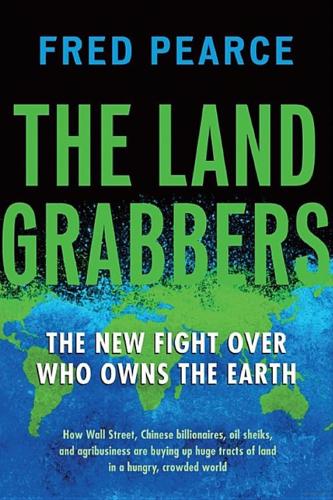
The Land Grabbers: The New Fight Over Who Owns the Earth
by
Fred Pearce
Published 28 May 2012
This is a stunning 10 percent of the global market. He employs ten thousand people in Africa alone. But Karuturi reckons he cannot sell any more roses. The market is sated. So he is moving into mainstream agriculture. “I want to be among the top four or five integrated agri-product companies in the world. And I will implement this vision out of Africa,” he says. He plans on having two and a half million acres of land under his plows in Africa—a third of them in Ethiopia and, he suggested in late 2011, another third in Tanzania. Karuturi promises to invest a billion dollars in the virgin fields of Gambella alone. Flash floods from the River Baro obliterated thousands of acres of the first corn harvest in late 2011, but his response was to bring in Dutch consultants to prevent a repetition.

This Is London: Life and Death in the World City
by
Ben Judah
Published 28 Jan 2016
And they are the slum landlords. There are tensions here. ‘They don’t have, you know . . . the entrepreneurial spirit . . .’ I am talking to Arif as he jangles his car keys. Arif is a slum landlord. This afternoon he has been out collecting rent. The cramped little shops along the parade are right out of Africa. Bric-a-brac: piles of plastic plates, stick-free pans, palm oil, stacks of rice flour and crates of pounded yellow yam. Everything that you can haul out of a cash and carry. Mothers guard the shops. They are playing Yoruba songs on YouTube to their children, who answer them back in English. ‘The thing is you see with us Asians . . .
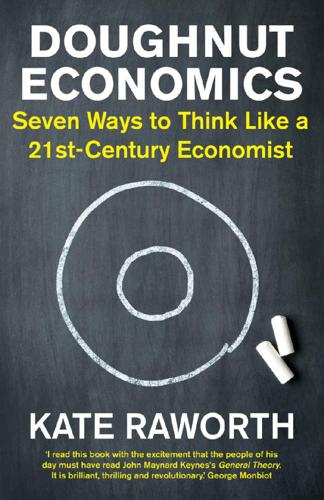
Doughnut Economics: Seven Ways to Think Like a 21st-Century Economist
by
Kate Raworth
Published 22 Mar 2017
But just how much pressure can it take before the very life-giving systems that sustain us start to break down? In other words, what determines the Doughnut’s ecological ceiling? To answer that question, we have to look back over the past 100,000 years of life on Earth. For almost all of that time – as early humans trekked out of Africa and blazed a trail across continents – Earth’s average temperature spiked up and down. But during just the last 12,000 years or so, it has been warmer, and far more stable too. This recent period of Earth’s history is known as the Holocene. And it is a word well worth knowing because it has given us the best home we’ve ever had.

The Evolution of Everything: How New Ideas Emerge
by
Matt Ridley
After more than a million years of making simple stone tools to just a few designs, these Africans began making lots of different types of tool. At first the change was local, gradual and ephemeral, so the word revolution is misleading. But then the tool changes began to appear more frequently, more strongly and more persistently. By 65,000 years ago the people with the new tool sets had begun to spill out of Africa, most probably across the narrow strait at the southern end of the Red Sea, and had begun a comparatively rapid colonisation of the Eurasian continent, displacing – and very occasionally mating with – the native hominids that were already there, such as the Neanderthals in Europe and the Denisovans in Asia.
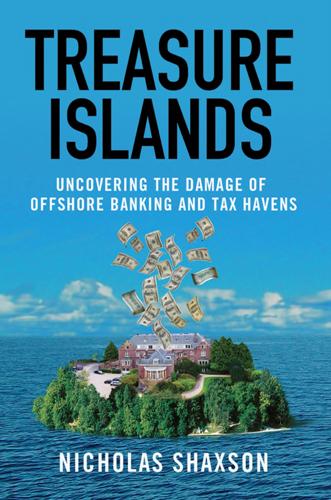
Treasure Islands: Uncovering the Damage of Offshore Banking and Tax Havens
by
Nicholas Shaxson
Published 11 Apr 2011
Citizens of the United States are paying the price. “It has taken me a long time to understand,” explains Joly, “that the expansion in the use of these jurisdictions [tax havens] has a link to decolonization. It is a modern form of colonialism.”11 Long before my first visit to Libreville I had noticed how money was pouring out of Africa, often into tax havens, but the secrecy surrounding this financial trade made it impossible to trace the connections. Financial institutions, and occasionally their accountants and lawyers, would surface in particular stories, then slip back into an offshore murk of commercial confidentiality and professional discretion.

Miracle Cure
by
William Rosen
Published 14 Apr 2017
Patent No. 2423873 A, June 17, 1944. Colebrook, L. “Almroth Edward Wright: 1861–1947.” Obituary Notices of Fellows of the Royal Society 6, no. 17 (November 1948): 297–314. Colebrook, L. “Gerhard Domagk.” Biographical Memoirs of Fellows of the Royal Society 10 (November 1964): 39. Comas, I., et al. “Out-of-Africa Migration and Neolithic Co-Expansion of Mycobacterium tuberculosis with Modern Humans. Nature: Genetics 45, no. 10 (October 2013): 1176–82. Committee on Statistics. Steel Statistical Yearbook. Brussels: International Iron & Steel Institute, 1981. Congressional Quarterly. “Subcommittee Investigates Drug Prices.”
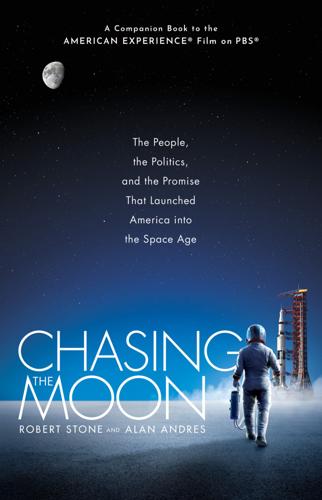
Chasing the Moon: The People, the Politics, and the Promise That Launched America Into the Space Age
by
Robert Stone
and
Alan Andres
Published 3 Jun 2019
The Saturn V was the physical creation of the mind and hand of the human species, a work of imagination conceived by beings composed of living cells, beings who evolved from aquatic life on a small planet orbiting a minor star. The launch of Apollo 11 followed in the tradition of the early explorers who expanded out of Africa’s Great Rift Valley and extended their presence to nearly every part in the world. Like Stonehenge, the Pyramids, the great cathedrals, and the statues on Easter Island, Apollo was an enterprise guided by the human genetic code, which over the course of hundreds of thousands of years had favored those who could dream, reason, persist, and create.

Think Like a Rocket Scientist: Simple Strategies You Can Use to Make Giant Leaps in Work and Life
by
Ozan Varol
Published 13 Apr 2020
Ryan Holiday, Perennial Seller: The Art of Making and Marketing Work That Lasts (New York: Portfolio/Penguin, 2017), 35; Tim Ferriss, “Rick Rubin on Cultivating World-Class Artists (Jay Z, Johnny Cash, etc.), Losing 100+ Pounds, and Breaking Down the Complex,” episode 76 (podcast), The Tim Ferriss Show, https://tim.blog/2015/05/15/rick-rubin. 70. Matthew Braga, “The Verbasizer Was David Bowie’s 1995 Lyric-Writing Mac App,” Motherboard, January 11, 2016, https://motherboard.vice.com/en_us/article/xygxpn/the-verbasizer-was-david-bowies-1995-lyric-writing-mac-app. 71. Amy Zipkin, “Out of Africa, Onto the Web,” New York Times, December 17, 2006, www.nytimes.com/2006/12/17/jobs/17boss.html. 72. The discussion on the Nike Waffle Trainer is based on the following sources: Knight, Shoe Dog; Chris Danforth, “A Brief History of Nike’s Revolutionary Waffle Trainer,” Highsnobiety, March 30, 2017, www.highsnobiety.com/2017/03/30/nike-waffle-trainer-history; Matt Blitz, “How a Dirty Old Waffle Iron Became Nike’s Holy Grail,” Popular Mechanics, July 15, 2016, www.popularmechanics.com/technology/gadgets/a21841/nike-waffle-iron. 73.
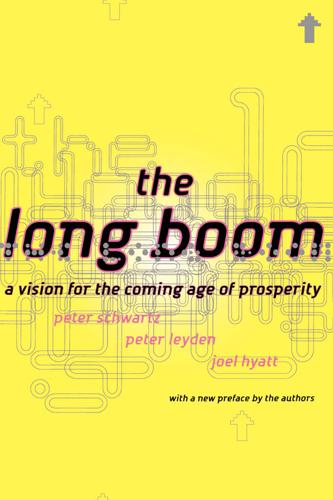
The Long Boom: A Vision for the Coming Age of Prosperity
by
Peter Schwartz
,
Peter Leyden
and
Joel Hyatt
Published 18 Oct 2000
They'll outachieve their parents' generation in much the same way as we outachieved our parents. Just as I say that I can hear the deep, slow beat of music resonating from someplace down the cliff, probably on the beach.Those who are listening to the verbal version of my letter can hear the sound in the background, We're all very familiar with the music coming out of Africa. It's not even considered African music anymore, but global music, the sound of the new world. Africans have really tapped into something vital with that sound. Music is a perfect model for something that communicates across cultures and ignores all the other barriers that humans put up between themselves.
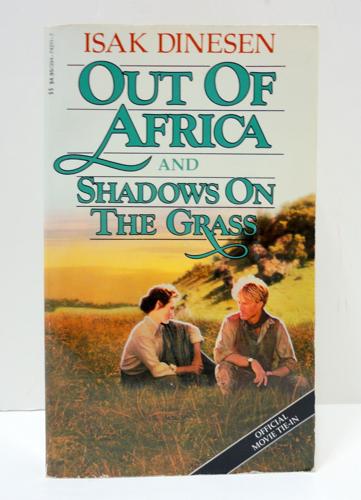
Out of Africa
by
Karen Blixen
Published 1 Jan 1937
Out Of Africa by Isak Dinesen (1938) (Version 1.0) * * * Table of Contents BOOK ONE: KAMANTE AND LULU Chapter 1 THE NGONG FARM Chapter 2 A NATIVE CHILD Chapter 3 THE SAVAGE IN THE IMMIGRANT'S HOUSE Chapter 4 A GAZELLE BOOK TWO: A SHOOTING ACCIDENT ON THE FARM Chapter 1 THE SHOOTING ACCIDENT Chapter 2 RIDING IN THE RESERVE Chapter 3 WAMAI Chapter 4 WANYANGERRI Chapter 5 A KIKUYU CHIEF BOOK THREE: VISITORS TO THE FARM Chapter 1 BIG DANCES Chapter 2 A VISITOR FROM ASIA Chapter 3 THE SOMALI WOMEN Chapter 4 OLD KNUDSEN Chapter 5 A FUGITIVE RESTS ON THE FARM Chapter 6 VISITS OF FRIENDS Chapter 7 THE NOBLE PIONEER Chapter 8 WINGS BOOK FOUR: FROM AN IMMIGRANT'S NOTEBOOK Chapter 1 THE WILD CAME TO THE AID OF THE WILD BOOK FIVE: FAREWELL TO THE FARM Chapter 1 HARD TIMES Chapter 2 THE DEATH OF KINANJUI Chapter 3 THE GRAVE IN THE HILLS Chapter 4 FARAH AND I SELL OUT Chapter 5 FAREWELL * * * BOOK ONE KAMANTE AND LULU From the Forests and Highlands we come, we come.
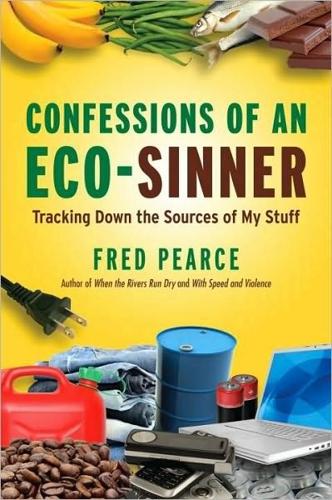
Confessions of an Eco-Sinner: Tracking Down the Sources of My Stuff
by
Fred Pearce
Published 30 Sep 2009
He had seen out more than a dozen ice ages. There were the hunched and hairy Neanderthals, in caves from Europe to Siberia. And Homo floresiensis, the tiny people dubbed hobbits, on the Indonesian island of Flores, just east of Toba. And there was Homo sapiens, the newest and nakedest species, who had emerged out of Africa about 70,000 years before Toba. On the day Toba blew, these tribes of hominid hunters and gatherers would have been confronted by a world in which temperatures plunged, hot volcanic ash rained down, the plants were dead and animals were dying all around. The first hours were the worst. As Michael Rampino, an earth scientist at New York University, puts it: ‘Breathing in volcanic ash is like breathing in tiny needles.
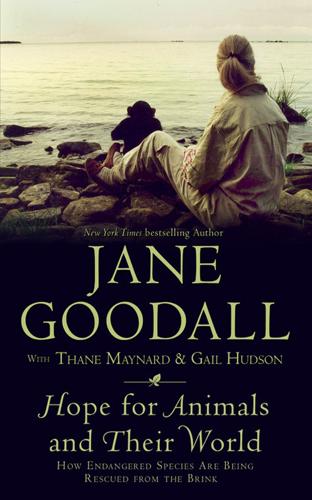
Hope for Animals and Their World
by
Jane Goodall
,
Thane Maynard
and
Gail Hudson
Published 1 Sep 2009
But thanks to both captive breeding in zoos and leadership by Mongolian wildlife officials, I was able to gaze upon a restored wild herd in the summer of 2007. My adventures in Mongolia have been in the company of a most amazing PhD wildlife biologist named Munkhtsog. Today he is one of the nation’s leading scientists. It is through him that I have been able to get a glimpse of the effort it has taken to save them. When humans first walked out of Africa fifty to seventy thousand years ago to spread across Asia and Europe, they viewed the huge herds of wild horses as prey. Eventually, of course, humans domesticated horses from wild stock, selectively breeding them for everything from transportation to work to simple beauty. However, along the way, domestication and spreading human settlements led to the extinction of the word’s wild herds.
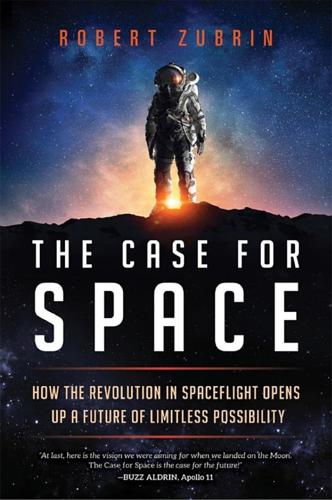
The Case for Space: How the Revolution in Spaceflight Opens Up a Future of Limitless Possibility
by
Robert Zubrin
Published 30 Apr 2019
There, in our natural habitat, we remained for the following 150,000 years, under conditions of near-complete technological stagnation. But then, for some reason, 50,000 years ago, some of our ancestors ventured forth, to take on the more challenging environments of Ice Age Europe and Asia, diversifying and inventing new ways of doing things as they went, to ultimately settle the entire Earth. The trek out of Africa was humanity's key step in setting itself on the path toward achieving the mature Type I status that the human race now approaches. The challenge today is to move on to Type II. Indeed, the establishment of a true spacefaring civilization represents a change in human status fully as profound—both as formidable and as pregnant with promise—as humanity's move from the rift valley to its current global society.
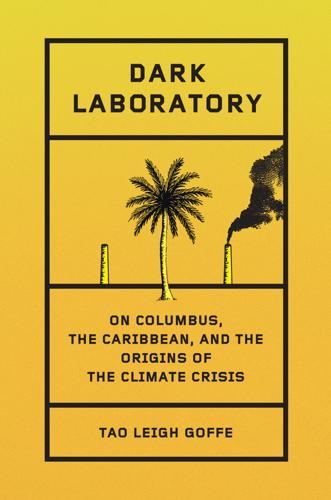
Dark Laboratory: On Columbus, the Caribbean, and the Origins of the Climate Crisis
by
Tao Leigh. Goffe
Published 14 Mar 2025
At the core of the religion is a belief in a living Black God, the emperor of Ethiopia Haile Selassie. In Jamaica, Afro-Asian botanical knowledge and scientific exchange occurred through the sacrament of ganja. In a documentary on the Hindu legacy in Rastafari, commentator Ras Moqapi Selassie says of the genesis, “There are Africans taken out of Africa and brought down to the Caribbean, and there are Indians taken out of India and brought down to the Caribbean, and they corresponded, and out of that correspondence has come something new.”[6] Jamaican historian Verene Shepherd, who specializes in histories of Indo-Jamaican labor, also speculates on the cultural, philosophical, and religious transfer between South Asians and Africans on Jamaican plantations during the early twentieth century.[7] Marijuana is often racialized as Black and is most readily associated with Jamaica because of reggae music and attendant Rastafarian religious practices.
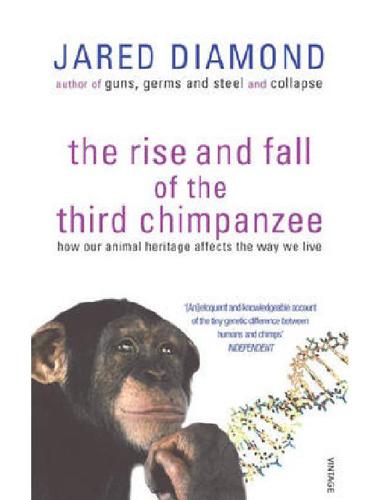
The Rise and Fall of the Third Chimpanzee
by
Jared Diamond
Published 2 Jan 1991
Around 11,000 years ago most of the large mammals of two entire continents, North America and South America, became extinct. Around the same time appears the first unequivocal evidence for human occupation of the Americas, by the ancestors of American Indians. It was the biggest expansion of human territory since Homo erectus spread out of Africa to colonize Europe and Asia a million years ago. The temporal coincidence between the first Americans and the last big American mammals, the lack of mass extinctions elsewhere in the world at that same time, and proofs that some of the now-extinct beasts were hunted have suggested what is termed the New World blitzkrieg hypothesis.
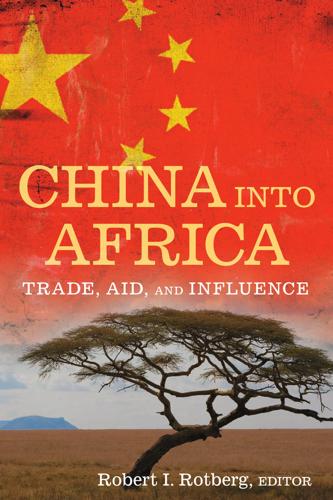
China into Africa: trade, aid, and influence
by
Robert I. Rotberg
Published 15 Nov 2008
Therefore, Washington may be prepared (within limits) to observe and remain untroubled by an Africa more dependent than ever upon ramped up Chinese trade and aid, major military assistance, and Chinese labor. Indeed, Chin-Hao Huang suggests that as of 2008, Washington was largely ill-prepared to assess what the Chinese really want out of Africa, and how Chinese policies are formulated and executed. Likewise, Washington has little knowledge of African opinion regarding China’s new thrust into their continent. Chin-Hao Huang urges Washington to “be sensitive to the many and long-standing, positive legacies and images of the Chinese in various parts of Africa,” particularly in sharp contrast to Western colonial practices.46 Throughout the Bush administration, top officials from Washington and Beijing talked regularly about their mutual interests in Africa.
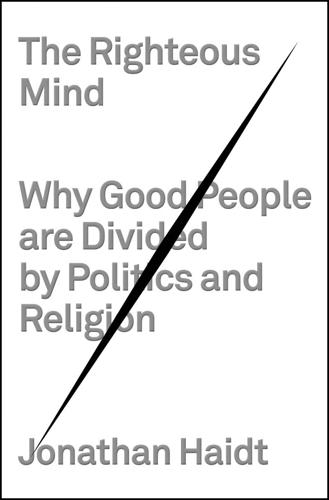
The Righteous Mind: Why Good People Are Divided by Politics and Religion
by
Jonathan Haidt
Published 13 Mar 2012
Like bees, our ancestors were (1) territorial creatures with a fondness for defensible nests (such as caves) who (2) gave birth to needy offspring that required enormous amounts of care, which had to be given while (3) the group was under threat from neighboring groups. For hundreds of thousands of years, therefore, conditions were in place that pulled for the evolution of ultrasociality, and as a result, we are the only ultrasocial primate. The human lineage may have started off acting very much like chimps,48 but by the time our ancestors started walking out of Africa, they had become at least a little bit like bees. And much later, when some groups began planting crops and orchards, and then building granaries, storage sheds, fenced pastures, and permanent homes, they had an even steadier food supply that had to be defended even more vigorously. Like bees, humans began building ever more elaborate nests, and in just a few thousand years, a new kind of vehicle appeared on Earth—the city-state, able to raise walls and armies.49 City-states and, later, empires spread rapidly across Eurasia, North Africa, and Mesoamerica, changing many of the Earth’s ecosystems and allowing the total tonnage of human beings to shoot up from insignificance at the start of the Holocene (around twelve thousand years ago) to world domination today.50 As the colonial insects did to the other insects, we have pushed all other mammals to the margins, to extinction, or to servitude.

The Gifted Adult: A Revolutionary Guide for Liberating Everyday Genius(tm)
by
Mary-Elaine Jacobsen
Published 2 Nov 1999
Linguistic intelligence: A proficient and easy use of words and sensitivity to phrasing and the rhythm of language in poetry, song lyrics, and persuasive speaking, as with poet Walt Whitman, Nobel laureate Toni Morrison, musical wordsmith Bob Dylan, evangelist Billy Graham, and congressional orator Barbara Jordan Musical intelligence: A special sensitivity to tempo, pitch, timbre, and tone, and an ability to create and express musical arrangements that correspond to emotional experience, as in great composers, singers, and musicians such as conductor Arturo Toscanini, violinist Jascha Heifetz, legendary jazz composer Duke Ellington, and operatic diva Maria Callas Logical-mathematical intelligence: Powers of inductive and deductive reasoning in handling abstract relationship and predictions based on numbers and equations, so obvious in eminent economist John Kenneth Galbraith, the Harvard professor who administered the system of price controls during World War II; physicist Robert Goddard, father of modern space rocketry; statistician George Gallup, whose polls quantified public opinion; Arno Penzias, the Nobel laureate who confirmed the fabled big-bang theory of creation and pioneered new computer logic; and Lise Meitner, who coined the term “atomic fission” and solved extraordinary mathematical puzzles in her 1930s experiments with barium emission Spatial intelligence: The ability to visualize objects in the mind and transfer the information to something concrete, such as designing an airplane or laying out a movie set, as visible in phenoms such as Walt Disney; William Mulholland, the self-taught engineer whose photographic memory and “ditchdigger” genius developed the Los Angeles aqueduct system in the early 1900s; Howard Roark, the architect character in Ayn Rand’s The Fountainhead; and painter and sculptor Pablo Picasso Bodily (kinesthetic) intelligence: Exceptional body control and refined motion that permits skillful expression of ideas and feelings through movement, as with Martha Graham’s poignant choreography and dance, Michael Jordan’s superstar athleticism, and the classic slapstick antics of Charlie Chaplin Interpersonal intelligence: Advanced understanding of human relations and management of feelings, as in the revolutionary insights of Carl Jung, Clara Barton, Eleanor Roosevelt, Nobel laureate Martin Luther King Jr., and Mourning Dove, who possessed the spirit to chronicle her people’s honored traditions both as a folklorist and novelist Intrapersonal intelligence: A sharp understanding of one’s inner landscape, motivations, emotions, needs, and goals, as with Herman Hesse, Sigmund Freud, Mahatma Gandhi, Thomas Merton, and Ingmar Bergman Naturalist intelligence: A special ability to grasp the intricate workings and relationships within nature; an instinctive reverence for a connection with animals, plants, minerals, ocean, sky, desert, and mountain, as in Henry David Thoreau; John Muir, founder of the Sierra Club, who at age sixty-eight began a campaign to preserve the Yosemite Valley; and Isak Dinesen, whose years as a farmer on an East African highlands coffee plantation inspired her to write her celebrated memoir Out of Africa From this standpoint, hip-hop kids might be perceived as masters of musical, linguistic, and kinesthetic intelligences. The effective TV interviewer could be said to excel in linguistic and interpersonal intelligences. Members of Greenpeace who successfully activate their conscience and persuade the powers that be to pay attention to environmental problems by allocating funds and changing laws probably have unusual strengths in naturalist, interpersonal, and linguistic intelligence.
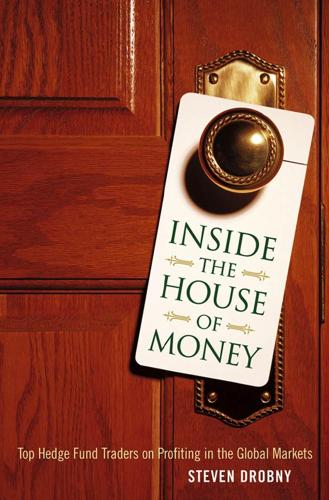
Inside the House of Money: Top Hedge Fund Traders on Profiting in a Global Market
by
Steven Drobny
Published 31 Mar 2006
So there are several reasons why I like Africa.There are plenty of great stories, but the major theme of Africa is that they have a lot of natural resources and I’m bullish on raw materials.They do not have an automobile industry, they do not make a lot of laptops, but they have a lot of raw materials. If I am right, the raw material bull market will last another 15 years or so, so there are going to be some great fortunes coming out of Africa.A lot of those stories are going to be spectacular but will not last because the bull market in Africa will not last.When the bear market in commodities comes again,Africa will suffer. It is interesting that you brought up the KGB.The investment community seems worried that Putin is taking Russia back to its KGB roots.Also, you say they do not have any money, but the recent oil move is making Russia a lot of money.
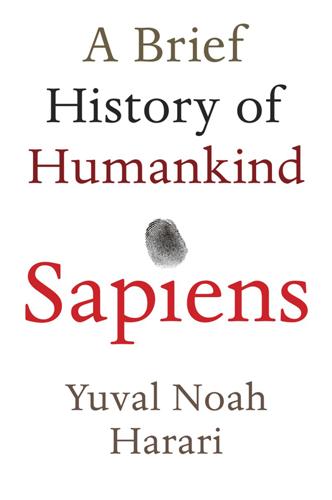
Sapiens: A Brief History of Humankind
by
Yuval Noah Harari
Published 1 Jan 2011
First stone tools. 2 million Humans spread from Africa to Eurasia. Evolution of different human species. 500,000 Neanderthals evolve in Europe and the Middle East. 300,000 Daily usage of fire. 200,000 Homo sapiens evolves in East Africa. 70,000 The Cognitive Revolution. Emergence of fictive language. Beginning of history. Sapiens spread out of Africa. 45,000 Sapiens settle Australia. Extinction of Australian megafauna. 30,000 Extinction of Neanderthals. 16,000 Sapiens settle America. Extinction of American megafauna. 13,000 Extinction of Homo floresiensis. Homo sapiens the only surviving human species. 12,000 The Agricultural Revolution.

Competition Overdose: How Free Market Mythology Transformed Us From Citizen Kings to Market Servants
by
Maurice E. Stucke
and
Ariel Ezrachi
Published 14 May 2020
Add it all up and users spend about 950 million hours on Facebook each day.15 We also spend a lot of time on Google’s platform.16 As Google noted in 2017, “people around the world are now watching a billion hours of YouTube’s incredible content every single day!”17 To put that in perspective, Google calculated that if you were to sit and watch a billion hours of YouTube, it would take you back over 100,000 years, to the time when “our ancestors were crafting stone tools and migrating out of Africa while mammoths and mastodons roamed the Earth.”18 Google’s core products, such as Android, Chrome, Gmail, Google Drive, Google Maps, Google Play, Search, and YouTube, each have over one billion active users per month.19 YouTube, on mobile phones alone, reaches more eighteen- to thirty-four-year-olds in the United States than any TV network.20 According to one 2017 study, 80 percent of US children between six and twelve years old used YouTube daily.21 Increasingly we are mesmerized by our mobile phone apps—well over four hours per day, on average, in 2017.22 So much so that psychologists have coined a word for the fear of being without one’s phone, nomophobia (no mobile phone phobia), and some have called for it to be included in the American Psychiatric Association’s taxonomic and diagnostic tool, the DSM-5.23 Symptoms include “regular and time-consuming use, feelings of anxiety when the phone is not available, ‘ringxiety’ (i.e., repeatedly checking one’s phone for messages, sometimes leading to phantom ring tones), constant availability, preference for mobile communication over face to face communication, and financial problems as a consequence of use.”24 Psychologists have defined as disorders “social network site addiction” and “Facebook addiction,”25 in which users are “overly concerned about social media, driven by an uncontrollable motivation to log on to or use social media, and devoting so much time and effort to [social network sites] that it impairs other important life areas.”26 Whether we are addicted or not in the medical sense of that word, the time we spend on social media clearly eats into other activities—like sleeping, studying, and actually doing things with other people.27 The situation has gotten so bad that in January 2018, a hedge fund joined a California pension fund to demand that Apple do more to address the effects of its devices on children.
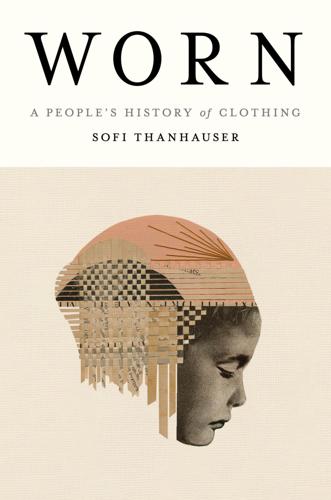
Worn: A People's History of Clothing
by
Sofi Thanhauser
Published 25 Jan 2022
The history of clothing has been also the history of a human quest for warmth, and both have been tied, in turn, to the story of human migrations. Researchers believe humans began wearing clothes well after they lost their body hair, and that clothing may have been the technology that enabled the first humans to migrate out of Africa and encounter the conditions of the Ice Age. If possessing clothing has driven migration, so has coveting it: in the seventeenth century, the earliest forays by Europeans into the interior of what is now the United States and Canada were made in order to trade with the native inhabitants for furs.
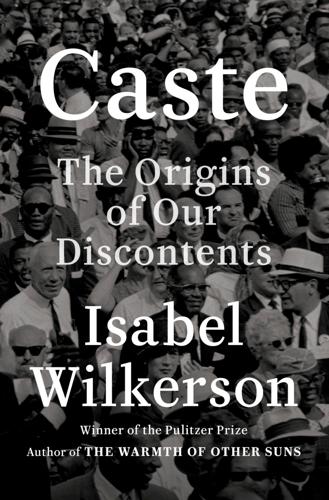
Caste: The Origins of Our Discontents
by
Isabel Wilkerson
Published 14 Sep 2020
Two decades ago, analysis of the human genome established that all human beings are 99.9 percent the same. “Race is a social concept, not a scientific one,” said J. Craig Venter, the geneticist who ran Celera Genomics when the mapping was completed in 2000. “We all evolved in the last 100,000 years from the small number of tribes that migrated out of Africa and colonized the world.” Which means that an entire racial caste system, the catalyst of hatreds and civil war, was built on what the anthropologist Ashley Montagu called “an arbitrary and superficial selection of traits,” derived from a few of the thousands of genes that make up a human being.
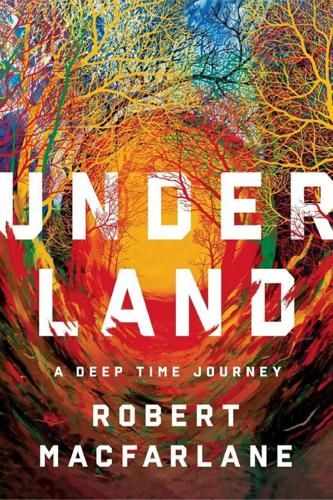
Underland: A Deep Time Journey
by
Robert Macfarlane
Published 1 May 2019
The tomb is intended to outlast not only the people who designed it, but also the species that designed it. It is intended to maintain its integrity without future maintenance for 100,000 years, able to endure a future Ice Age. One hundred thousand years ago three major river systems flowed across the Sahara. One hundred thousand years ago anatomically modern humans were beginning their journey out of Africa. The oldest pyramid is around 4,600 years old; the oldest surviving church building is fewer than 2,000 years old. This Finnish tomb has some of the most secure containment protocols ever devised: more secure than the crypts of the Pharaohs, more secure than any supermax prison. It is hoped that what is placed within this tomb will never leave it by means of any agency other than the geological.

The Bank That Lived a Little: Barclays in the Age of the Very Free Market
by
Philip Augar
Published 4 Jul 2018
Ahead of the UK’s ringfencing regulations, which would come into effect on 1 January 2019, the business was divided into Barclays UK, the consumer bank, and Barclays International, the corporate and investment bank, within a holding company, Barclays PLC. According to early indications from the credit ratings agencies, both the operating companies would be given the coveted status of ‘investment grade’. OUT OF AFRICA At half-past five in the afternoon of Monday 18 April 2016, Jes Staley knocked on the door of a first floor suite at Claridge’s hotel in Brook Street, London. A fellow American, about the same age, opened the door and beckoned him in. Bob Diamond was in town and they had business to discuss.
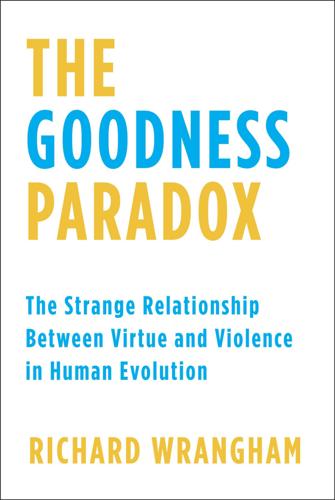
The Goodness Paradox: The Strange Relationship Between Virtue and Violence in Human Evolution
by
Richard Wrangham
Published 29 Jan 2019
International Journal of Primatology 29: 949–73. ———, and Craig Packer. 1994. “Infanticide in lions: Consequences and counterstrategies.” In Infanticide and Parental Care, edited by S. Parmigiani and F. von Saal (London: Harwood Academic Publishers), pp. 277–330. Rabett, Ryan J. 2018. “The success of failed Homo sapiens dispersals out of Africa and into Asia.” Nature Ecology and Evolution 2: 212–19. Radcliffe-Brown, A. 1922. The Andaman Islanders: A Study in Social Anthropology. Cambridge, U.K.: Cambridge University Press. Raia, Pasquale, Fabio M. Guarino, Mimmo Turano, Gianluca Polese, Daniela Rippa, Francesco Carotenuto, Daria M.
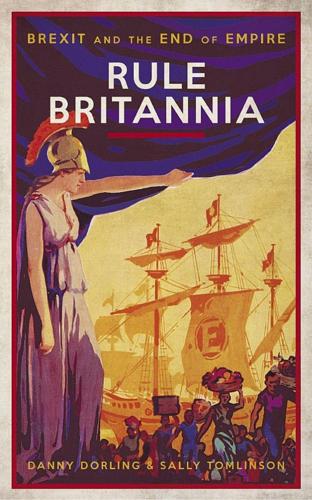
Rule Britannia: Brexit and the End of Empire
by
Danny Dorling
and
Sally Tomlinson
Published 15 Jan 2019
Winston Churchill, Home Secretary in 1911, believed that a system of labour camps, sterilisation and even euthanasia were ways of dealing with the ‘feeble-minded’.10 By 1924, a ‘Racial Integrity Act’ was being passed in the state of Virginia that defined someone as ‘coloured’ if they had one non-white ancestor. This was despite us all coming out of Africa! The Act was accompanied by a Sterilization Act based on the ‘Model Eugenical Sterilization Law’.11 Around the globe, statutes were passed forbidding relationships between white women and non-white men (and, less often, the opposite). Artificial races, almost all newly imagined and ranked in a supposed order of racial fitness, were defined as realities in much of Africa, in the rest of the Americas, across Europe, Asia, Australasia – all around the world.
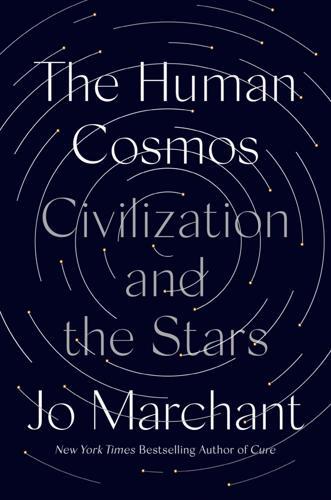
The Human Cosmos: A Secret History of the Stars
by
Jo Marchant
Published 15 Jan 2020
A 2017 study of hundreds of animal-tooth pendants found in Estonia, for example, found that elk was the most common mammal represented in the Mesolithic and Neolithic periods (8900–1800 BC), before gradually switching to bears. As the story of the Cosmic Hunt moved around the planet and through history, different peoples would have adapted the tale to fit the animals and constellations most important to them. Other tales analyzed by d’Huy seem to date back even earlier, spreading out of Africa with the first waves of human migration more than forty thousand years ago. He has compiled a core of “protomyths” that he thinks early humans brought with them as they migrated north and east. Not all of these involve stars. There are dragons: giant, horned serpents that guard water sources and can fly, form rainbows, and produce rain and thunderstorms.

The Gifted Adult: A Revolutionary Guide for Liberating Everyday Genius(tm)
by
Mary-Elaine Jacobsen
Published 18 Feb 2015
Linguistic intelligence: A proficient and easy use of words and sensitivity to phrasing and the rhythm of language in poetry, song lyrics, and persuasive speaking, as with poet Walt Whitman, Nobel laureate Toni Morrison, musical wordsmith Bob Dylan, evangelist Billy Graham, and congressional orator Barbara Jordan Musical intelligence: A special sensitivity to tempo, pitch, timbre, and tone, and an ability to create and express musical arrangements that correspond to emotional experience, as in great composers, singers, and musicians such as conductor Arturo Toscanini, violinist Jascha Heifetz, legendary jazz composer Duke Ellington, and operatic diva Maria Callas Logical-mathematical intelligence: Powers of inductive and deductive reasoning in handling abstract relationship and predictions based on numbers and equations, so obvious in eminent economist John Kenneth Galbraith, the Harvard professor who administered the system of price controls during World War II; physicist Robert Goddard, father of modern space rocketry; statistician George Gallup, whose polls quantified public opinion; Arno Penzias, the Nobel laureate who confirmed the fabled big-bang theory of creation and pioneered new computer logic; and Lise Meitner, who coined the term “atomic fission” and solved extraordinary mathematical puzzles in her 1930s experiments with barium emission Spatial intelligence: The ability to visualize objects in the mind and transfer the information to something concrete, such as designing an airplane or laying out a movie set, as visible in phenoms such as Walt Disney; William Mulholland, the self-taught engineer whose photographic memory and “ditchdigger” genius developed the Los Angeles aqueduct system in the early 1900s; Howard Roark, the architect character in Ayn Rand’s The Fountainhead; and painter and sculptor Pablo Picasso Bodily (kinesthetic) intelligence: Exceptional body control and refined motion that permits skillful expression of ideas and feelings through movement, as with Martha Graham’s poignant choreography and dance, Michael Jordan’s superstar athleticism, and the classic slapstick antics of Charlie Chaplin Interpersonal intelligence: Advanced understanding of human relations and management of feelings, as in the revolutionary insights of Carl Jung, Clara Barton, Eleanor Roosevelt, Nobel laureate Martin Luther King Jr., and Mourning Dove, who possessed the spirit to chronicle her people’s honored traditions both as a folklorist and novelist Intrapersonal intelligence: A sharp understanding of one’s inner landscape, motivations, emotions, needs, and goals, as with Herman Hesse, Sigmund Freud, Mahatma Gandhi, Thomas Merton, and Ingmar Bergman Naturalist intelligence: A special ability to grasp the intricate workings and relationships within nature; an instinctive reverence for a connection with animals, plants, minerals, ocean, sky, desert, and mountain, as in Henry David Thoreau; John Muir, founder of the Sierra Club, who at age sixty-eight began a campaign to preserve the Yosemite Valley; and Isak Dinesen, whose years as a farmer on an East African highlands coffee plantation inspired her to write her celebrated memoir Out of Africa From this standpoint, hip-hop kids might be perceived as masters of musical, linguistic, and kinesthetic intelligences. The effective TV interviewer could be said to excel in linguistic and interpersonal intelligences. Members of Greenpeace who successfully activate their conscience and persuade the powers that be to pay attention to environmental problems by allocating funds and changing laws probably have unusual strengths in naturalist, interpersonal, and linguistic intelligence.
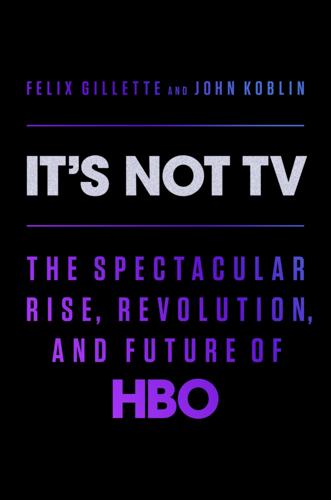
It's Not TV: The Spectacular Rise, Revolution, and Future of HBO
by
Felix Gillette
and
John Koblin
Published 1 Nov 2022
They vowed to follow the data wherever it took them. “It was a huge advantage for us,” Randolph says. “There was this view in Hollywood that certain people were the gifted tastemakers. You’d see it in the movies. They’d sit in the big office and greenlight things: ‘This is Pretty Woman meets Out of Africa. Gold!’ They’d fight for years to get to the point where they can greenlight the movie. They know what people want.” “We never pretended that’s how decision making should work,” he adds. “For us, it was always very data driven.” * * * • • • IN THE LATE 1990s, with the business world going increasingly bonkers over the dot-com craze, and the Nasdaq Composite Index hitting new heights, HBO staffers heard some unsettling news.
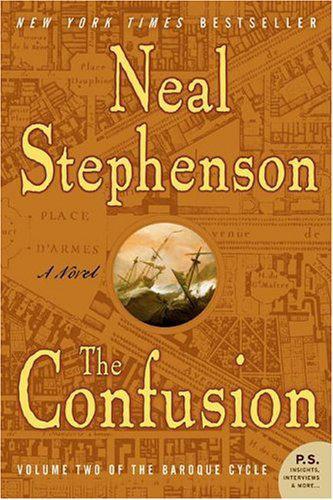
The confusion
by
Neal Stephenson
Published 13 Apr 2004
It was growing in a pot of damp dirt, which was carried on its own wee palanquin: a plank supported at each end by a boy. “The Portuguese brought it out of Africa,” Jack explained. “Truly you are thinking like an Alchemist, then,” muttered van Hoek, staring morosely at his rotting digits. “Everyone knows that the only treatment for burns is butter. It is proof of how far gone you are in outlandish ways, that you would rather use some occult potion out of Africa!” “When do you think you’ll amputate?” Jack inquired. “This evening,” said van Hoek. “That way I shall have twenty-four hours to recuperate before the battle.”

New York
by
Edward Rutherfurd
Published 10 Nov 2009
In Africa, I have been told, my name would be Kwasi. If I had been born on a Friday, it would be Kofi, which in English is Cuffe. Monday’s child is Kojo, which in English they say Cudjo; and there are other similar names. I believe I was born around the year of Our Lord 1650. My father and my mother were both sold out of Africa as slaves, to work in the Barbadoes. When I was about five years old, my mother and I were taken from my father to be sold again. In the market, my mother and I were separated. From that moment, I have never known what became of her; but I was bought by a Dutch sea captain; and this was fortunate for me, because the Dutch captain brought me to New Amsterdam, as it was then called; whereas if I had remained where I was, it is not likely I should be alive today.
…
As you might imagine, children were sometimes the result of this conversing. But although it was against their religion, the owners did not seem to mind that these children were born. And I believe the reason for this was plain enough. For the trade in slaves is very profitable. A slave bought fresh out of Africa in those days might fetch more than ten times his purchase price if he was brought to the wharf at Manhattan, and in other places even more. So that even if a good part of the cargo was lost upon the way, a merchant might do uncommonly well in the selling of slaves. It was surely for this reason that both old Governor Stuyvesant and our new ruler, the Duke of York, had had such hopes of making Manhattan a big slave market.

The Geeks Shall Inherit the Earth: Popularity, Quirk Theory, and Why Outsiders Thrive After High School
by
Alexandra Robbins
Published 31 Mar 2009
The other large bookshelf was her literary shelf: Tolstoy, Orwell, Rand, Dickens, Hardy, Lessing, Faulkner, Proust, Shakespeare, Austen, Saramago, García Márquez, both Brontës. She kept her favorite books on a shelf attached to her headboard. There she could find Gone with the Wind, A Farewell to Arms, For Whom the Bell Tolls, Out of Africa, and Into the Wild. Danielle treated her books like museum treasures, cringing if a book cover so much as creased. When a classmate borrowed her Les Misérables paperback and told her the cover fell off, she gave him the book permanently and bought herself a new, unblemished hardback. Books were so sacred to Danielle that she wouldn’t check them out from the library.

Safe Food: The Politics of Food Safety
by
Marion Nestle
Published 1 Jan 2010
Quotation: 558. EPILOGUE 1. Nestle M. Writing the food studies movement. Food, Culture, and Society 2010;13(2):162–70. Martin A. Is a food revolution now in season? NYT, March 21, 2009:BU1. 2. Monsanto is at www.monsanto.com. Paarlberg R. Starved for Science: How Biotechnology Is Being Kept Out of Africa. Cambridge, MA: Harvard University Press, 2009. Lotter D. The genetic engineering of food and the failure of science—Part 1: The development of a flawed enterprise. International J Sociology of Agriculture and Food 2009;16:31–49. Gurian-Sherman D, Robinson E. Failure to Yield: Evaluating the Performance of Genetically Engineered Crops.
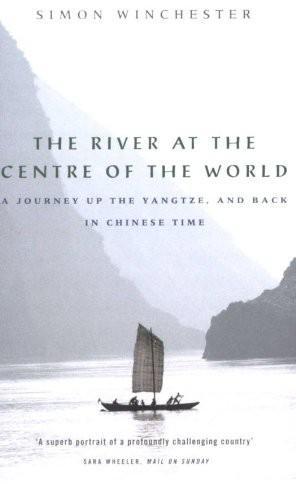
The River at the Centre of the World
by
Simon Winchester
Published 1 Jan 1996
The hominid found in the Yangtze valley was of a far more primitive kind than had been found either at Peking or in Java, and in the absence of any other discovery it was reasonable to suspect that it was the original Asian hominid, the ancestor of all Asian mankind. The little stone-bearing beasts had evidently limped out of Africa, travelled across the southern part of what is now the Arabian peninsula and spread, slowly and steadily, all the way to Asia. The first evidence of their having arrived in the East was thus to be found here at Longgupo, in a half-collapsed and newly discovered cave a few miles south of the Yangtze – a river that now, if still not able to claim a role as the cradle of any specifically Chinese civilization, can at least in all certainty lay claim to being the cradle of all the world's Asians.
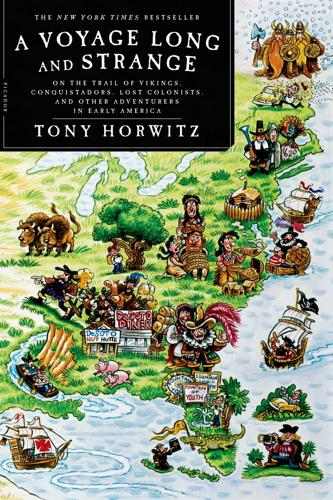
A Voyage Long and Strange: On the Trail of Vikings, Conquistadors, Lost Colonists, and Other Adventurers in Early America
by
Tony Horwitz
Published 1 Jan 2008
The sagas devote only a few lines to this epochal moment: the first recorded encounter between Europeans and Native Americans, two branches of humanity that had been separated so long they barely recognized each other as kin. When and how the first people reached America is a subject of keen debate, roiled by recent archaeological finds and new genetic and linguistic evidence. It’s generally believed that early humans migrated out of Africa some fifty thousand years ago, with one stream eventually reaching northeast Asia, at about the same time and latitude as others settled the northwest corner of Europe. Near the end of the last Ice Age, roughly twelve thousand years ago, hunters crossed from Asia to today’s Alaska before spreading across the Americas.
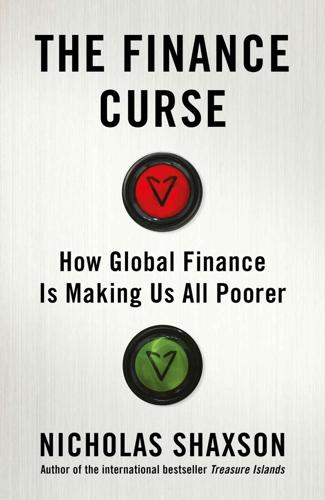
The Finance Curse: How Global Finance Is Making Us All Poorer
by
Nicholas Shaxson
Published 10 Oct 2018
New Labour politicians were bored by old-school ‘smokestack’ industries, stood back from the hard graft of regional industrial development and watched benignly as British manufacturing retreated faster than in other industrialised nations. Instead they courted glamorous Irish musicians like U2 who posed for photos in African villages, urging taxpayers to fund more foreign aid while dodging their own taxes and all but ignoring the rising rivers of wealth looted and sucked out of Africa through Britain’s tax haven rackets. Blair sugar-coated his financial medicine with the restorative of his personal-responsibility agenda and the feel-good tonics of U2, Oasis, the Spice Girls, Cool Britannia and the Mayfair hedge fund set. Even Margaret Thatcher, who had crushed the unions and built on the Eurodollar mayhem with the Big Bang of financial deregulation in the City, was no longer the Labour Party’s sworn enemy, but a moderniser, to be treated with grudging respect.20 The new attitudes were captured in a spoof letter circulating in the UK tax authorities’ Large Business Office, whose job was to tax multinational companies.

The Rough Guide to Cape Town, Winelands & Garden Route
by
Rough Guides
,
James Bembridge
and
Barbara McCrea
Published 4 Jan 2018
They will collect you from PE or Addo. If you’re pushed for time or money you can opt for the afternoon game drive at 2.30pm (R1500/person). An overnight stay here is the cheapest among the private reserves; packages always include a room rate plus game drives, and there’s also a tented camp for the “Out of Africa” romance. R6000 Shamwari Game Reserve 65km north of Port Elizabeth on the N2 041 509 3000, shamwari.com. The largest and best known of the private reserves, Shamwari has cultivated a jetsetter fan base, hosting such celebrities as Tiger Woods and John Travolta, and consistently winning world travel accolades.
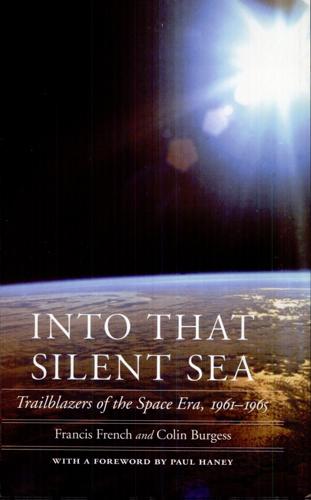
Into That Silent Sea: Trailblazers of the Space Era, 1961-1965
by
Francis O. French
,
Colin Burgess
and
Paul Haney
Published 2 Jan 2007
He and his first wife, Trudy, had met at the University of Honolulu, so we had a parade through that city, whose locals have a custom of throwing rose petals. It was beautiful, but he probably didn't make any friends in his native Oklahoma. Deke Slayton was your basic good ol' midwestern boy from Sparta, Wisconsin. He had done the "milk run" in the late stages of World War II, flying out of Africa and later Italy to bomb the Polesti oil fields. Sadly for Deke he brought along some unknown baggage—he had a slight heart murmur, and concerned doctors grounded him a few weeks before he was due to fly his Delta 7 mission. Losing his flight status really burned Deke, but he overcame this to become head of the astronaut office and the guy who selected all the early crews.

Fodor's Essential Belgium
by
Fodor's Travel Guides
Published 23 Aug 2022
In 2022, services on RegioJet’s night train are due to start, connecting Belgium to Berlin, Amsterdam, and Prague, while ÖBB’s Nightjet route between Brussels and Vienna, via Liège, increased in frequency post-COVID. There are even rumors of a new “Transeurope Express” route, which originally ceased operating in the 1980s, cutting across Belgium. Great news for those on an old-fashioned European rail tour. ADDRESSING THE PAST Much of Belgium’s 20th-century wealth was torn out of Africa’s Congo region in a long, bloody period from the late 1800s on. Only today are its museums arguably coming to terms with this. The recent renovation and reopening of the Royal Museum for Central Africa in Tervuren came with an abrupt about-face in how it presents its collection. In previous years, it had been strongly criticized for concentrating on the ephemera of colonialism over the lives of the several million Congolese who died during the occupation.
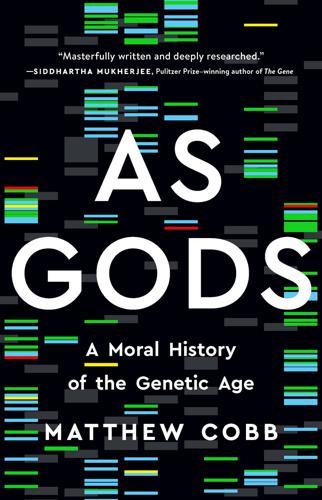
As Gods: A Moral History of the Genetic Age
by
Matthew Cobb
Published 15 Nov 2022
At the end of the 1990s, South Africa and Egypt legalised the planting of Bt cotton, while in contrast between 2002 and 2006 Zambia refused US aid deliveries of GM maize despite a massive agricultural crisis and famine.56 Sometimes, anti-GM campaigners have gone way overboard in their description of the supposed dangers of GM crops – ActionAid Uganda claimed that GM crops cause cancer, while in Ghana a leading group of activists campaigned around the slogan ‘GMO/Ebola out of Africa’.57 In South Africa, anti-GM campaigners were able to achieve a minor victory in terms of labelling of GM products and above all shifted the debate on the continent towards a much more critical stance. This could be seen in 2007, when at its foundation, the Alliance for a Green Revolution in Africa, an organisation set up to support smallholder farming throughout the continent, with support from the Bill and Melinda Gates Foundation and the British government, both of which have a record of advocating GM crops, nonetheless emphasised the importance of traditional crop breeding instead.58 A good summary of the situation is provided by Canadian environmental geographer Matthew Schnurr in his perceptive book Africa’s Gene Revolution: First-generation GM crops were developed to succeed within the confines of industrial agriculture – large-scale, heavily capitalised, mechanised monoculture.

Hope Dies Last: Visionary People Across the World, Fighting to Find Us a Future
by
Alan Weisman
Published 21 Apr 2025
Along the East African Rift’s lakes and ponds, Australopithecus evolved into Homo and learned to fashion an arsenal of stone, wood, and sinew tools to hunt game that came to drink, and to gather mollusks, turtles, catfish, even crocodiles. So we were already accustomed to life at the water’s edge when our growing bands followed game out of the rift and eventually out of Africa itself. Even so, the first time we saw a shore with endless water to the horizon surely elicited an epic gasp—followed by a gag, as we learned that all that water was undrinkable. But tide pools, filled with delicious crustaceans, marine mollusks, and fish stranded by the surf with each hypnotic wave, proved irresistible.

Dawn of the Code War: America's Battle Against Russia, China, and the Rising Global Cyber Threat
by
John P. Carlin
and
Garrett M. Graff
Published 15 Oct 2018
As al-Shabaab’s fight continued, Hammami also posted audio messages and uploaded a 127-page memoir to the internet, The Story of an American Jihadi: Part One, that traced his path from high school to radicalization to al-Shabaab.9 While al-Shabaab succeeded in targeting and luring a handful of recruits—mostly men, largely from Minnesota and the Twin Cities—the online recruitment efforts were never particularly effective; they were to a certain extent ideological spam, the equivalent of the Nigerian scheme email fraudsters who sent out 1 billion emails and hoped 1/1000th of 1 percent of people were gullible enough to think that a deposed oil minister needs help smuggling his ill-gotten gains out of Africa. Yet by blasting across the internet and reaching deep into forums and bulletin boards where disaffected youth hung out, they found some success. None of these terrorist recruiters online, though, would match the prominence of a onetime American imam, Anwar al-Awlaki. He was born in New Mexico, while his Yemeni father studied on a Fulbright Scholarship, and his family returned to Yemen when he was seven years old.
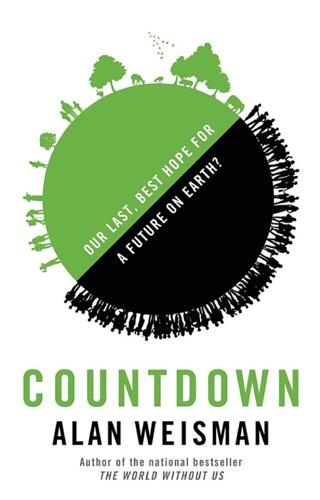
Countdown: Our Last, Best Hope for a Future on Earth?
by
Alan Weisman
Published 23 Sep 2013
Since it took nearly two hundred thousand years since Homo sapiens first appeared for our population to reach 1 billion, around 1815, and now we suddenly have seven times that many—how the hell did that happen? How did we get here? CHAPTER 3 Body Counts and the Paradox of Food i. Bodies Genetic evidence suggests that at some point between fifty thousand to one hundred thousand years ago, our Homo sapiens ancestors possibly numbered as few as ten thousand. Then they began to wander out of Africa, following the species corridor north through present-day Israel and Palestine and branching into Europe, Asia, and beyond. Discovering more sustenance as they spread, they began to increase, but almost imperceptibly. As the Worldwatch Institute’s Robert Engelman notes in his book More, had they multiplied at modern growth rates (currently 1.1 percent annually worldwide, which means doubling every sixty-three years), within a few millennia, not just Earth but the entire solar system couldn’t have contained us.

Lotharingia: A Personal History of Europe's Lost Country
by
Simon Winder
Published 22 Apr 2019
De Gaulle announced this with no authority whatsoever – but it was one of those acts, effectively pretending Pétain’s France did not exist, that began the process of France’s political and intellectual rescue. Leclerc (he adopted this name rather than calling himself de Hautecloque to protect his family from reprisals by the Germans) then set about pushing pro-Vichy forces out of Africa and securing the Central African colonies for the Free French. With an extraordinarily mixed bag of lightly armed flotsam and jetsam, Leclerc in early 1941 set out to invade Axis territory – the remote Italian Libyan oasis of Kufra. The battle was a tiny one (300 to 400 men on either side) but won by the French.
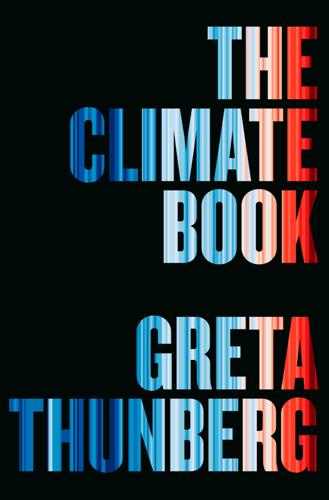
The Climate Book: The Facts and the Solutions
by
Greta Thunberg
Published 14 Feb 2023
. / This is an unlikely, miraculous world we live on, and one that we recklessly take for granted. 1.3 Our Evolutionary Impact Beth Shapiro The earliest evidence of humans as an evolutionary force comes from the fossil remains recovered at the earliest sites of human occupation on the planet’s continents and islands. As people dispersed out of Africa more than 50,000 years ago and spread around the globe, the communities they joined began to change. Animal species, and particularly megafauna, including giant wombats, woolly rhinoceroses and giant sloths, started to go extinct. Our ancestors were efficient predators armed with uniquely human technologies – tools that improved the chance of a successful hunt and an ability to communicate and quickly refine these tools.

The Survival of the City: Human Flourishing in an Age of Isolation
by
Edward Glaeser
and
David Cutler
Published 14 Sep 2021
The contemporary observer Procopius writes that “during these times there was a pestilence, by which the whole human race came near to being annihilated.” Procopius wrote in Attic Greek (the dialect of Athens), like Thucydides, and he was deeply influenced by the Athenian. Like Thucydides, Procopius claims that the disease came out of Africa: “it started from the Aegyptians who dwell in Pelusium” and “from there it spread over the whole world.” The modern scientific literature suggests instead that the plague originated in central Asia. Unlike the earlier Plague of Athens, our medical knowledge of Justinian’s plague is reasonably good, primarily because of DNA found in early medieval cemeteries.
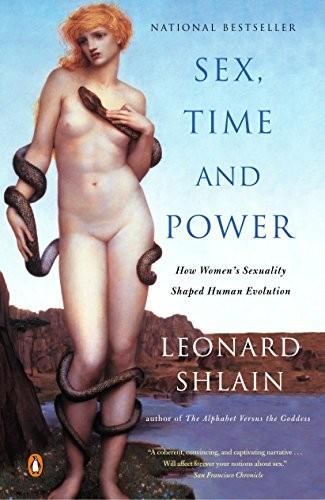
Sex, Time, and Power: How Women's Sexuality Shaped Human Evolution
by
Leonard Shlain
Published 2 Aug 2004
McBrearty and Brooks, 2000, pp. 453–563. 5. Anthropologist Richard Klein proposes that the Creative Explosion resulted from a brain mutation that rather abruptly changed the way Homo sapiens thought. The mutation would have had to have occurred prior to the last significant exodus of sapients out of Africa, and then would have had to have lain relatively dormant for approximately 10,000 more years before manifesting in the Creative Explosion. The 10,000-year unexpressed mutation could be the only way Aborigines in Australia could have paralleled the development of the Cro-Magnons in southern France.
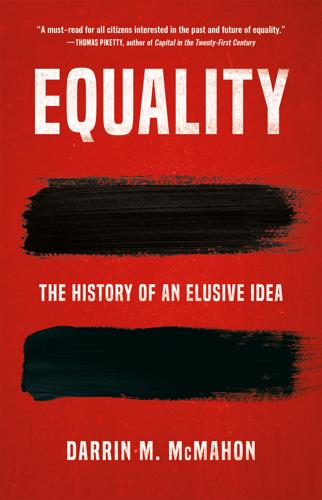
Equality
by
Darrin M. McMahon
Published 14 Nov 2023
If the survival of the fittest is to be our measure, then Homo sapiens was clearly the master race. In evolutionary terms, they were extraordinarily successful. Flexible and adaptive in the critical tasks of ensuring group safety, raising children, and gathering and preparing food, they began to push out of Africa from the time of the Cognitive Revolution, entering the Arabian Peninsula about 70,000 years ago and occupying, shortly thereafter, the entire Eurasian landmass. By 55,000 to 60,000 years ago they were present in Western Europe and Australia. And by 16,000 years ago they had made their way across the Bering Strait and were rapidly populating North and South America.

Adaptive Markets: Financial Evolution at the Speed of Thought
by
Andrew W. Lo
Published 3 Apr 2017
Anatomically modern humans—our human species, Homo sapiens, “Man the wise”—appear in the fossil record in Ethiopia only 200,000 years ago, the blink of an eye compared to the passage of time we’ve already explored.13 For tens of thousands of years, Homo sapiens coexisted on the planet with other types of human, including the famous Neandertals (anthropologists have recently changed the traditional spelling of “Neanderthals”), as well as other varieties less well known to science, now extinct. Until recently, the general scientific consensus was that Homo sapiens came out of Africa and somehow outcompeted these other types of human, either due to our greater intellect and adaptability, or for more violent reasons.14 But in 2010, this scientific consensus was overturned with the sequencing of the Neandertal genome by the Swedish molecular evolutionary geneticist Svante Pääbo.
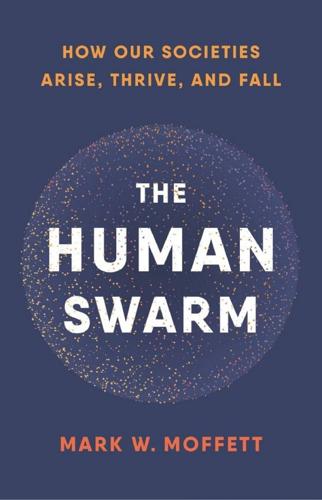
The Human Swarm: How Our Societies Arise, Thrive, and Fall
by
Mark W. Moffett
Published 31 Mar 2019
They lived across a swath of southern Africa—in the same general area and a similar sort of desert and savanna habitat where humans evolved—with genetic evidence suggesting they split from other human populations in our deep past.6 Nevertheless they were influenced by centuries of interactions with Bantu herdsmen who came from the north long before Europeans arrived. Before Europeans made contact, Australia was one of the few major locations on Earth where local hunter-gatherers had few encounters with agriculturalists. Aborigines occupied the continent for 50,000 years following an early diaspora out of Africa. Arguably that makes Aborigines a reliable source of insight into the past, yet the northernmost Aborigines traded and intermarried with tribes from the Torres Strait Islands, who raised crops of taro and banana. Additionally, for a period starting in 1720, a fleet of Indonesian fishermen came to northern Australia to hunt sea cucumbers.
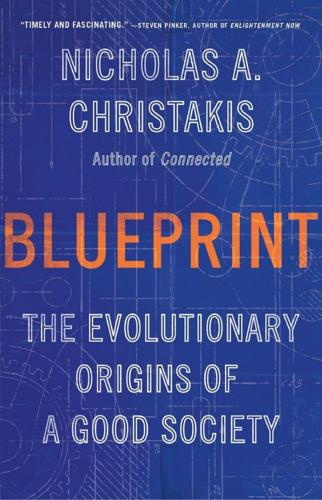
Blueprint: The Evolutionary Origins of a Good Society
by
Nicholas A. Christakis
Published 26 Mar 2019
Causes of possible intergroup variation include adaptation to environment, neutral drift, reproductive isolation of human populations, and founder effects. There are also broader genetic differences in populations of humans that, generally, track the continents of origin. See L. B. Jorde and S. P. Wooding, “Genetic Variation, Classification, and ‘Race,’” Nature Genetics 36 (2004): 528–533. 34. A. Quamrul and O. Galor, “The Out-of-Africa Hypothesis, Human Genetic Diversity, and Comparative Development,” American Economic Review 103 (2013): 1–46. Chapter 2: Unintentional Communities 1. Castaway 2000, produced by C. Kelley, BBC One, 2000. In 2016, Eden, a similar reality survival show, focused on a failed community in an isolated area of Scotland.
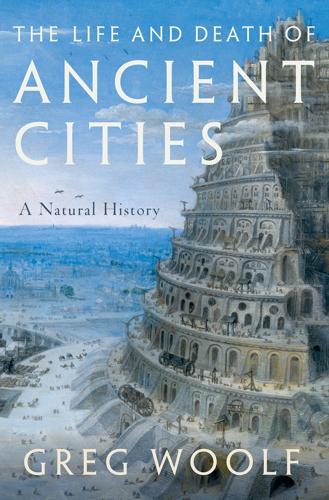
The Life and Death of Ancient Cities: A Natural History
by
Greg Woolf
Published 14 May 2020
(Before Present) to 12,000 b.p. , the Pleistocene Era: Genus homo appears near the start and various species of early humans move around Africa and Eurasia, expanding their range in interglacial periods, retreating into warmer places whenever the glaciers expanded. About 300, 000 b.p.: First evidence for homo sapiens (modern humans). 70,000–20,000 b.p.: Modern humans move out of Africa and rapidly spread east into Asia and Australia and west to the Atlantic, keeping south of the ice sheets, encountering and replacing other groups of early humans en route. About 27,000 b.p.: The last glacial maximum. About 15,000 b.p.: The first humans enter the Americas and settle most of North and South America in a few thousand years.

Flight of the WASP
by
Michael Gross
Within a few years, the museum’s dinosaur display hall was expanded to house Andrews’s Asia finds, among them the first dinosaur eggs ever unearthed; a skull from the largest land mammal, resembling a giant rhinoceros without a horn; other previously unknown mammal and reptile fossils, and what was called compelling proof that Central Asia was home to prehistoric humans.40 But Fairfield Osborn’s desire for a breakthrough discovery in Asia was thwarted when, in 1924, remains of a human who walked on two legs—called the Taung child, of the species Australopithecus africanus—were found in Africa, arguing against Osborn’s out-of-Asia theory. That find, and the now generally accepted out-of-Africa theory of humankind’s origin, were only slowly acknowledged, though, so the source of humanity remained in question, and Osborn’s backers persisted in believing that his work “served as a model of individual achievement and racial fulfillment.”41 * * * Before it was named anthropogeny in the nineteenth century, the study of the origins of humankind began with myth and later, pseudoscientific guesswork.
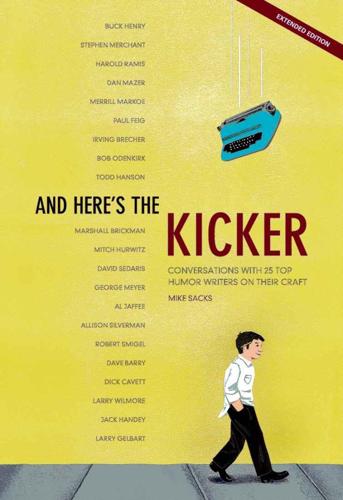
And Here's the Kicker: Conversations with 21 Top Humor Writers on Their Craft
by
Mike Sacks
Published 8 Jul 2009
The audience might not have known that, but they really should have known or else the point is gone. It's one of the most beautiful comedies I think I've ever seen. It's gorgeous to look at. It is great to look at. David Watkin was the cinematographer, and I love the Watkin look. He also did Chariots of Fire and Out of Africa. It's very beautiful and very moving in its own way. But maybe it was moving in the wrong way for a comedy. I don't think you can do laugh-out-loud comedy that is beautifully backlit. That's an interesting point — early comedies aren't necessarily beautiful. Not at all. No one gives a shit. If you look at those early films, such as Laurel and Hardy or Chaplin movies, you can see shadows where there shouldn't be shadows.

Like Dreamers: The Story of the Israeli Paratroopers Who Reunited Jerusalem and Divided a Nation
by
Yossi Klein Halevi
Published 4 Nov 2014
We can’t depend on anyone but ourselves.” THE NEXT DAY, February 21, 1974, the men of the 55th Brigade gathered along the Egyptian shore of the Suez Canal, near the spot where the paratroopers had first crossed. The farewell ceremony had almost been canceled: a tank brigade had been given the honor of being the last Israeli unit out of Africa, and the paratroopers revolted. We were the first ones into Africa, Danny Matt insisted, and we won’t leave unless we are the last ones out. The IDF relented. In June 1967 the paratroopers had ended their war by lining up, parade style, on the Temple Mount. Now they simply gathered around as Danny addressed them.

The uplift war
by
David Brin
Published 1 Jun 1987
True, the sharp yellow beak and razorlike talons looked formidable. But the stick-legged creatures were hardly much taller than Fiben, and their bones looked hollow and thin. No matter. These were starfarers—senior patrons-class beings whose Library-derived culture and technology were all but omnipotent long, long before humans rose -up out of Africa’s savannah, blinking with the dawnlight of fearful curiosity. By the time man’s lumbering slowships stumbled upon Galactic civilization, the Gubru and their clients had wrested aposition of some eminence among the powerful interstellar clans. Fierce conservatism and facile use of the Great Library had taken them far since their own patrons had found them on the Gubru homeworld and given them the gift of completed minds.
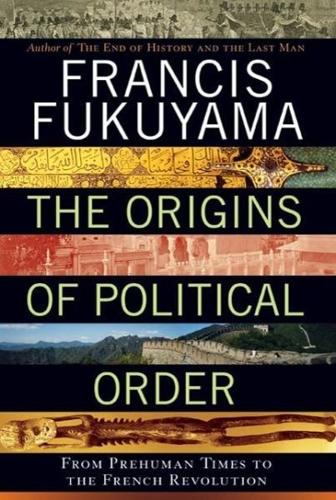
The Origins of Political Order: From Prehuman Times to the French Revolution
by
Francis Fukuyama
Published 11 Apr 2011
EVOLUTION AND MIGRATION Paleoanthropologists have been able to trace the descent of man from primate forebears to what are labeled “behaviorally modern human beings,” while population geneticists have done a remarkable job tracing the movements of human populations as they migrated through the different regions of the planet. There is broad agreement that the transition from ape to human being took place in Africa, but the exit out of Africa that led to the populating of the rest of the world happened in two separate waves. What are labeled archaic human beings—species like Homo erectus and Homo ergaster—left that continent as much as 1.6–2 million years ago and found their way to northern Asia. An ergaster descendant, Homo heidelbergensis, may have left Africa and reached Europe around 300,000–400,000 years ago, and was the progenitor of later species like the famous Neanderthals who inhabited much of Europe.37 Anatomically modern human beings—that is, humans who had the same rough size and physical characteristics as contemporary humans—appeared on the scene approximately two hundred thousand years ago.
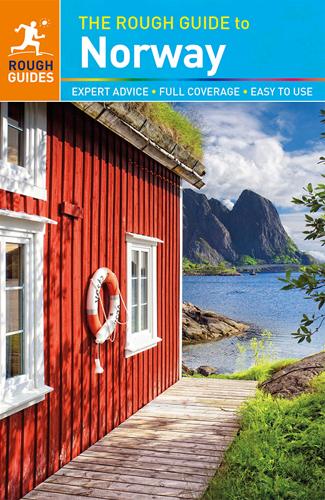
The Rough Guide to Norway
by
Phil Lee
Published 25 Nov 2013
Neither is the exterior betrayed by what’s inside, for every room is crammed with period antiques seemingly hunted down from every corner of the globe. Each of the 27 bedrooms is individually decorated in elaborate, period style and most celebrate the famous people who have stayed here, like King Hakon VII and Kaiser Wilhelm II, not to mention the Danish author Karen “Out Of Africa” Blixen. It’s a great place to spend the night and the food is first-rate, too. None of the rooms have telephones or TVs, which is inducement enough to sit on the terrace and watch the weather fronts sweeping in off the Norangsfjord, or have a day’s fishing – the hotel sells licences and dispenses advice; they also offer bike rental and will arrange guided mountain walks.

Political Order and Political Decay: From the Industrial Revolution to the Globalization of Democracy
by
Francis Fukuyama
Published 29 Sep 2014
In the process of general evolution, disparate species evolve similar characteristics because they have to solve similar problems: thus sensory organs like eyes evolved independently across different species. So too with human beings. When the first small group of behaviorally modern humans walked out of Africa into the Middle East about fifty thousand years ago, they began to diverge, to some extent genetically but more dramatically in terms of culture. There was a real precedent for the story of the Tower of Babel in the Bible: as humans spread to Europe, Asia, South Asia, Oceana, and eventually to the Americas, their languages and cultural practices began to differentiate as they settled into a wide variety of ecological niches.
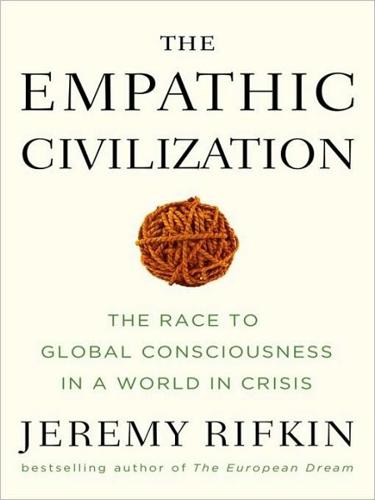
The Empathic Civilization: The Race to Global Consciousness in a World in Crisis
by
Jeremy Rifkin
Published 31 Dec 2009
“Magnitude 9.1—Off the West Coast of Northern Sumatra.” http://earthquake.usgs.gov/eqcenter/eqinthenews/2004/usslav/#summary 12 Musil, Steven. “Tech Community Joins Tsunami Relief Effort.” cnet news.com. January 3, 2005. 13 MacMillan, Robert. “Tsunami Prompts Online Outpouring.” Washington Post. January 3, 2005. 14 Owen, James. “Modern Humans Came out of Africa, ‘Definitive’ Study Says.” National Geographic News. July 18, 2007. www.nationalgeographic.com/news; “Effects of Ecology and Climate on Human Physical Variations.” CultureChange.org. www.culturechange.org 15 Steele, James, and Stephen Shennan. The Archaeology of Human Ancestry: Power, Sex, and Tradition.

Escape From Rome: The Failure of Empire and the Road to Prosperity
by
Walter Scheidel
Published 14 Oct 2019
Even that lip service came to an end when the Fatimid (rival) caliphate took over in 909. The Fatimids in turn were the first regional force to advance eastward, reversing three centuries of westward expansion of major Middle Eastern powers from the Sasanians to the Umayyads and Abbasids. Their capture of Egypt in 969 meant that Asian powers were shut out of Africa until the Ottomans appeared in the sixteenth century and established indirect and soon diminishing nominal control as far west as Algeria. In Spain and North Africa, the power of Arab and Berber states waxed and waned throughout the Middle Ages, but hegemonic empire did not return. At no time after the mid-eighth century was the original caliphate in a position to launch attacks against Europe.
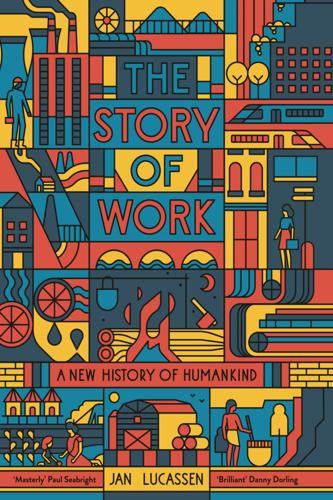
The Story of Work: A New History of Humankind
by
Jan Lucassen
Published 26 Jul 2021
Up to 1850, one-third of all surviving captives were retained in Africa, and after 1880 all of them. In sum, between 1500 and 1900, we are talking about the capture of easily 30 million sub-Saharan Africans (12.5 million across the Atlantic, 6 million to the north and east, maybe 4 million in casualties before transportation out of Africa and some 8 million inside Africa). What was the impact on Africa? In one word: enormous. Not only for those 30 million enslaved, but also for those doing the dirty work of capturing, supervising and transporting them.208 As might be expected, the effects of this were felt very unevenly geographically, and not only because coastal areas were more affected than the interior.

Fodor's Hawaii 2012
by
Fodor's Travel Publications
Published 15 Nov 2011
Hit the water at Hulopo‘e Beach: This beach may have it all: good swimming, a shady park for perfect picnicking, great reefs for snorkeling, and sometimes plenty of spinner dolphins. Getting Oriented Unlike the other Hawaiian Islands with their tropical splendors, Lāna‘i looks like a desert: kiawe trees right out of Africa, red-dirt roads, and a deep blue sea. Lāna‘ihale (house of Lāna‘i), the mountain that bisects the island, is carved into deep canyons by rain and wind on the windward side, and the drier leeward side slopes gently to the sea, where waves pound against surf-carved cliffs. The town of Lāna‘i City is in the center of the island, Upcountry.

Fodor's Hawaii 2013
by
Fodor's
Published 22 Jul 2012
Hit the water at Hulopoe Beach: This beach may have it all: good swimming, a shady park for perfect picnicking, great reefs for snorkeling, and sometimes plenty of spinner dolphins. Getting Oriented Unlike the other Hawaiian Islands with their tropical splendors, Lanai looks like a desert: kiawe trees right out of Africa, red-dirt roads, and a deep blue sea. Lanaihale (house of Lanai), the mountain that bisects the island, is carved into deep canyons by rain and wind on the windward side, and the drier leeward side slopes gently to the sea, where waves pound against surf-carved cliffs. The town of Lanai City is in the center of the island, Upcountry.

Growth: From Microorganisms to Megacities
by
Vaclav Smil
Published 23 Sep 2019
But as is the case with many grand generalizations, both the intensity and the unprecedented nature of the Neolithic demographic transition are arguable (as is the revolutionary description of a process that was clearly evolutionary, extending across millennia). A recent sequencing of 36 diverse Y chromosomes from Africa, Europe, Asia, and the Americas indicates a previously unknown period of relatively rapid population expansion that took place 40,000 to 50,000 years ago, that is between the migration out of Africa and the later Neolithic growth (Wei et al. 2013). This extreme population increase is seen as the result of an eventual adaptation to new mountainous and forested environments of the inner continents. And after analyzing 910 random samples of mitochondrial DNA (collected by the 1000 Genome Project) from 11 populations in Africa, Europe, and the Americas, Zheng et al. (2012) found that in all cases most major lineage expansions (11 out of 15 in Africa, all autochthonous lineages in Europe and the Americas) coalesced before the first appearance of agriculture and that major population expansions took place after the Last Glacial Maximum but before the Neolithic era; they suggested that the rising temperatures and growing populations actually provided the stimulus for the introduction of agriculture.

The Cold War: A World History
by
Odd Arne Westad
Published 4 Sep 2017
To some extent this difference in policy was the result of real divisions within the Administration, with key State Department officials pushing for negotiations to end regional conflicts while many NSC staffers continued to emphasize covert operations in support of anti-Communists. But it is doubtful whether the president himself perceived it as a split in policy. For Reagan, forcing the Soviets and Cubans out of Africa had always been a key aim. In his view, Gorbachev could only become a US partner if he agreed to a full withdrawal from Africa, Asia, and Latin America. Reagan’s approach was maximalist: he wanted to benefit as much as possible from Soviet weakness when the opportunity was there. After Cuito Cuanavale, all sides in the Angolan conflict began slowly to edge toward a negotiated solution.

How the Mind Works
by
Steven Pinker
Published 1 Jan 1997
Young children’s inductions from natural kinds: The role of categories and appearances. Child Development, 58, 1532–1540. Gergely, G., Nádasdy, Z., Csibra, G., & Bíró, S. 1995. Taking the intentional stance at 12 months of age. Cognition, 56, 165–193. Gibbons, A. 1994. African origins theory goes nuclear. Science, 264, 350–351. Gibbons, A. 1995a. Out of Africa—at last? Science, 267, 1272–1273. Gibbons, A. 1995b. The mystery of humanity’s missing mutations. Science, 267, 35–36. Gibbons, A. 1995c. Pleistocene population explosions. Science, 267, 27–28. Gibson, J. J. 1950. The perception of the visual world. Boston: Houghton Mifflin. Gibson, J. J. 1952.

Nourishing Traditions: The Cookbook That Challenges Politically Correct Nutrition and The...
by
Sally Fallon
,
Pat Connolly
and
Mary G. Enig, Phd.
Published 14 May 1995
Pooran Singh himself appeared. . .his melliferous Indian smile shone in the midst of his thick black beard, he stuttered with delight when he spoke. He was anxious to procure for himself the fat of the lions, that with his people is held in high esteem as a medicine—from the pantomime by which he expressed himself to me, I believe against rheumatism and impotence. Isak Dinesen Out of Africa DUCK CURRY Serves 8-12 3 wild ducks 3 tablespoons duck fat (Duck Fat and Cracklings) 2 large onions, peeled and finely chopped 2 cups finely chopped celery 4-5 tablespoons curry powder or curry paste 1 teaspoon ground cardamom 1 teaspoon fennel seeds 1 teaspoon fenugreek seeds ¼ teaspoon cayenne pepper 4 cups duck stock 1 tablespoon freshly grated ginger 4 cloves garlic, peeled and mashed 1 cup piima cream or creme fraiche sea salt and pepper Remove the skin and excess fat from the ducks and make duck stock from the whole birds, including the feet and heads (Turkey stock and duck stock).
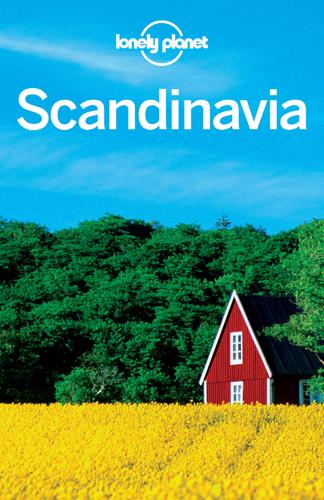
Scandinavia
by
Andy Symington
Published 24 Feb 2012
The vast majority of Danes are members of the National Church of Denmark, an Evangelical Lutheran denomination (a proportion of each Dane’s income tax goes directly to the church), but less than 5% of the population are regular churchgoers. Arts Famous Danish Authors By far the most famous Danish author is Hans Christian Andersen. Other prominent Danish writers include religious philosopher Søren Kierkegaard, whose writings were a forerunner of existentialism, and Karen Blixen, who under the name Isak Dinesen penned Out of Africa and Babette’s Feast, both made into acclaimed movies in the 1980s. One of Denmark’s foremost contemporary authors is Ib Michael, a magic realist who has seen many of his novels and poems translated into English. Architecture & Design For a small country Denmark has had a massive global impact in the fields of architecture and design.
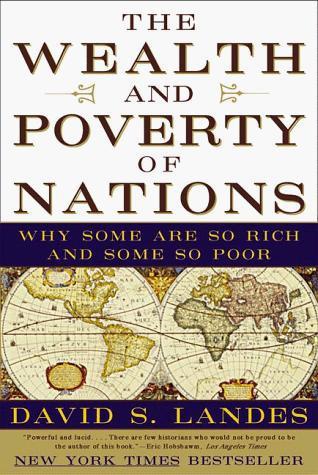
The Wealth and Poverty of Nations: Why Some Are So Rich and Some So Poor
by
David S. Landes
Published 14 Sep 1999
Underdevelopment and Development in Brazil. Vol. I. Economic Structure and Change 1822-1947. London: Allen & Unwin. —————, and Kazuo Sato. 1993. “Homogeneous Preferences and Heterogeneous Growth Performance: International Differences in Saving and Investment Behaviour,” Kyklos, 46, 2: 203-23. Lcfkowitz, Mary. 1996. Not Out of Africa: How Afrocentrism Became an Excuse to Teach Myth as History. New York: Basic Books. Lehmann, Hartmut, and Guenther Roth, eds. 1995. Weber’s Protestant Ethic: Origins, Evidence, Contexts. Cambridge: Univ. Press. Leibenstein, Harvey. 1976. Beyond Economic Man: A New Foundation for Microeconomics.
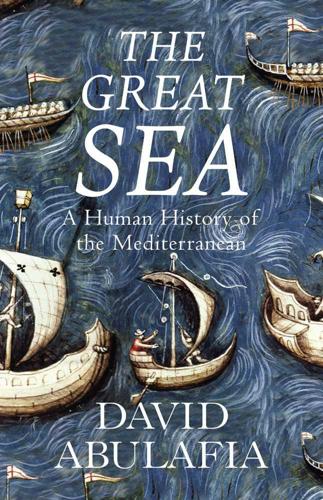
The Great Sea: A Human History of the Mediterranean
by
David Abulafia
Published 4 May 2011
They renewed their raids on Sardinia and Corsica, to which the Franks responded with an ambitious naval attack on the African coast. The problem was that the Frankish navy had no permanent base, and, even after winning a succession of engagements, a single defeat at Sousse was enough to force the Franks out of Africa. In any case, the Frankish empire had passed its peak with the death of Charlemagne in 814, and his successor Louis the Pious was distracted from the western Mediterranean by internal rivalries. In the 840s, the Arabs were free to raid Marseilles, Arles and Rome. To the extreme embarrassment of both the Byzantines and the Franks, who each claimed dominion over southern Italy, a Muslim navy captured the seaport of Bari in 847, establishing an emirate that lasted until 871, when finally the Franks and the Byzantines learned to work together long enough to expel the Muslims.21 After tentative moves in the ninth century, Arab pirate bases were established in the tenth century along the coast of Provence, and a little way inland at Fraxinetum (La Garde-Freinet).
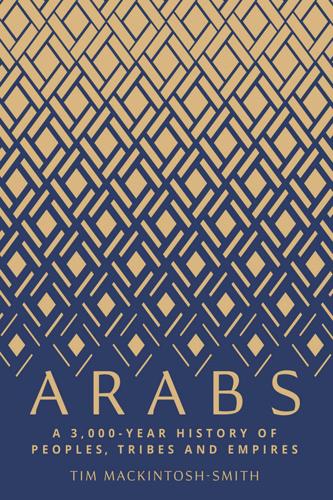
Arabs: A 3,000 Year History of Peoples, Tribes and Empires
by
Tim Mackintosh-Smith
Published 2 Mar 2019
At its heel and toe are two water-straits: Bab al-Mandab, at 26 kilometres wide only little more than the crossing from Dover to Calais, and the Strait of Hormuz, at 54 kilometres roughly the distance from Cape Cod to Nantucket. The third point of separation, the dry 200-kilometre ‘strait’ of Sinai, is broader, but easily navigable. And that is the point: all three straits separate, but also join. They invite crossings. Crossing them seems to be what early hominids and humans did, on their journey out of Africa – both Homo erectus, nearly two million years ago, and Homo sapiens at various possible times between 45,000 and 125,000 years ago; perhaps even earlier (much research remains to be done). One route of exodus led them through Sinai and across the top of the Arabian Peninsula; the other route took them over Bab al-Mandab, when sea-levels were much lower and the strait even narrower, then through the south of the peninsula and on across the equally diminished Strait of Hormuz.

A History of Modern Britain
by
Andrew Marr
Published 2 Jul 2009
Hendrik Verwoerd, the South African Prime Minister retorted that the Englishman was appeasing the black man, adding that they had enough problems in Africa without his coming to add to them. Why had London lost its nerve? Partly, it was the mere experience of looking about. The French were getting out of Africa. So too were the Belgians, leaving behind an appalling and very bloody civil war in the Congo. Private correspondence of Macmillan’s suggests that he also thought the two world wars had made a fundamental change in the position of the whites around the world: ‘What we have really seen since the war is the revolt of the yellows and blacks from the automatic leadership and control of the whites.’37 It need not, however, be a bloody revolt.

Behave: The Biology of Humans at Our Best and Worst
by
Robert M. Sapolsky
Published 1 May 2017
Ding et al., “Evidence of Positive Selection Acting at the Human Dopamine Receptor D4 Gene Locus,” PNAS 99 (2002): 309. Visit bit.ly/2nsuHz9 for a larger version of this graph. So which came first, 7R frequency or cultural style? The 4R and 7R variants, along with the 2R, occur worldwide, implying they already existed when humans radiated out of Africa 60,000 to 130,000 years ago. Classic work by Kenneth Kidd of Yale, examining the distribution of 7R, shows something remarkable. Starting at the left of the figure above, there’s roughly a 10 to 25 percent incidence of 7R in various African, European, and Middle Eastern populations. Jumping to the right side of the figure, there’s a slightly higher incidence among the descendants of those who started island-hopping from mainland Asia to Malaysia and New Guinea.

Melody Beattie 4 Title Bundle: Codependent No More and 3 Other Best Sellers by Melody Beattie: A Collection of Four Melody Beattie Best Sellers
by
Melody Beattie
Published 30 May 2010
So many of us have lost so much, have said so many good-byes, have been through so many changes. We may want to hold back the tides of change, not because the change isn’t good, but because we have had so much change, so much loss. Sometimes, when we are in the midst of pain and grief, we become shortsighted, like members of a tribe described in the movie Out of Africa. “If you put them in prison,” one character said, describing this tribe, “they die.” “Why?” asked another character. “Because they can’t grasp the idea that they’ll be let out one day. They think it’s permanent, so they die.” Many of us have so much grief to get through. Sometimes we begin to believe grief, or pain, is a permanent condition.

Kissinger: A Biography
by
Walter Isaacson
Published 26 Sep 2005
Like many neoconservatives, Moynihan opposed American intervention, but he felt that the Soviets should be denounced as loudly as possible for violating the spirit of détente. The U.S., he urged, should take the issue to the Security Council “and never let the argument fade until the last Cuban was out of Africa.” Kissinger, from Asia, cabled back that going to the Security Council made no sense. So Moynihan launched his own public crusade. He went on a Sunday talk show to proclaim that “the Russians had invaded southern Africa.” In the annual General Assembly debate over South Africa, he mounted the podium to denounce the Soviets as the “new colonial, imperialist power” in Africa.

Quicksilver
by
Neal Stephenson
Published 9 Sep 2004
“Why, I believe I have heard that the King is beginning to mint new coins,” Isaac said, looking to Daniel for confirmation. “My half-brother in London knows someone who saw a gold carolus ii dei gratia coin once, displayed in a crystal case on a silken pillow,” Daniel said. “People have begun to call them Guineas, because they are made of gold that the Duke of York’s company is taking out of Africa.” “I say, Daniel, is it true what they say, that those coins are perfectly circular?” “They are, Isaac—not like the good old English hammered coins that you and I carry in such abundance in our pockets and purses.” “Furthermore,” said the Ashkenazi, “the King brought with him a French savant, Monsieur Blondeau, on loan from King Louis, and that fellow built a machine that mills delicate ridges and inscriptions into the edges of the coins.”
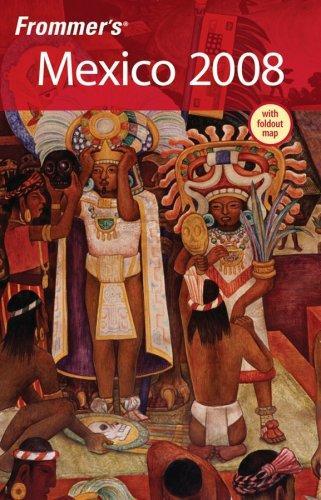
Frommer's Mexico 2008
by
David Baird
,
Juan Cristiano
,
Lynne Bairstow
and
Emily Hughey Quinn
Published 21 Sep 2007
A few buses travel this route, but they stop only at the towns that line the highway; many of them are several kilometers inland from the resorts along the coast. ALONG COSTA ALEGRE (NORTH TO SOUTH) C R U Z D E L O R E T O ’ S L U X U R Y E C O - R E T R E AT Moments The fact that the Hotelito Desconocido Hotelito Desconocido (“little unknown hotel”) is ecologically minded is a bonus, but it’s not the principal appeal. A cross between Out of Africa and Blue Lagoon, it is among my favorite places in Mexico. Think camping out with luxury linens, romantic candles everywhere, and a symphony performed by cicadas, birds, and frogs. The rustic, open-air rooms, called palafitos, are in cottages perched on stilts over a lagoon. A grouping of suites is on the ample sand bar that separates the tranquil estuary from the Pacific Ocean.
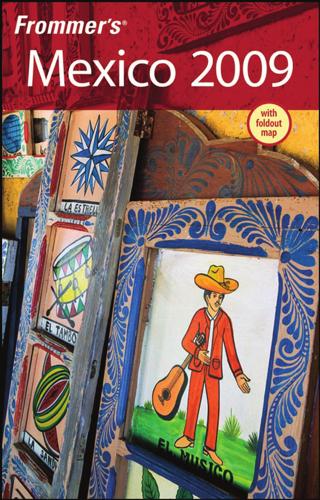
Frommer's Mexico 2009
by
David Baird
,
Lynne Bairstow
,
Joy Hepp
and
Juan Christiano
Published 2 Sep 2008
A few buses travel this route, but they stop only at the towns that line the highway; many of them are several kilometers inland from the resorts along the coast. ALONG COSTA ALEGRE (NORTH TO SOUTH) C R U Z D E L O R E T O ’ S L U X U R Y E C O - R E T R E AT Moments The fact that the Hotelito Desconocido Hotelito Desconocido (“little unknown hotel”) is ecologically minded is a bonus, but it’s not the principal appeal. A cross between Out of Africa and Blue Lagoon, it is among my favorite places 14 285619-ch10.qxp 360 7/22/08 11:13 AM Page 360 C H A P T E R 1 0 . P U E R T O V A L L A R TA & T H E C E N T R A L PA C I F I C C O A S T in Mexico. Think camping out with luxury linens, romantic candles everywhere, and a symphony performed by cicadas, birds, and frogs.

England
by
David Else
Published 14 Oct 2010
Beaumont House (01242-223311; www.bhhotel.co.uk; 56 Shurdington Rd; s £63-184, d £86-201; ) Set in a large garden just a short way from the centre of town, this boutique gues thouse is a memorable place with a range of carefully designed rooms with opulent decor. Go for the full-on safari look in Out of Africa, sultry boudoir in Out of Asia or more subtle design in the Prestbury Suite. Hotel Kandinsky (01242-527788; www.aliashotels.com; Bayshill Rd; s £95, d £125-155; ) Gloriously quirky, keenly priced and extravagantly decked out, this is a ‘funkier than average’ hotel, with lots of eclectic modern art, exotic furniture, designer style and an extremely efficient but laid-back attitude.

Executive Orders
by
Tom Clancy
Published 2 Jan 1996
American military uniforms weren't all that welcome here. In fact, the station chief warned, few things American were. Chavez noted that a car followed them in from the airport. Don't sweat it. We'll lose him at the embassy. You know, sometimes I wonder if it wasn't a good deal when my folks got kidnapped out of Africa. Don't tell anybody I said that, okay? South Alabama is like heaven on earth compared to this shithole. He parked the car in the embassy's back lot and took them inside. A minute later one of his people walked out, started the Chevy, and headed right back out. The tail car went with him. Shirts, the CIA resident officer said, handing them over.

The Codebreakers: The Comprehensive History of Secret Communication From Ancient Times to the Internet
by
David Kahn
Published 1 Feb 1963
Hampered by shortages of oil, men, and armor, he could only shift his divisions about in desperate but futile attempts to recover. The defeat became a rout, and the Afrika Korps fled west across the desert, leaving a battlefield littered with hundreds of destroyed or useless tanks and troop-carriers. A few months later the Germans were driven out of Africa, then out of Crete, then up the boot of Italy—always retreating, never again advancing. The Battle of Alamein marked the turning of the Allied hinge of fate. “Before Alamein we never had a victory,” Churchill said. “After Alamein we never had a defeat.” That change in fortune had revolved, to no small degree, upon cryptology

1,000 Places to See in the United States and Canada Before You Die, Updated Ed.
by
Patricia Schultz
Published 13 May 2007
A few blocks away, Uptown got a dose of chic with the recent arrival of the exceptionally popular Hotel ZaZa. The darling of young and glamorous celebrities, from Jessica Simpson to Lance Armstrong, the Mediterranean-style boutique hotel offers 154 rooms and 23 suites, a number of them named to reflect their design theme, like “Out of Africa” and “Shaga-Delic.” The on-site ZaSpa is spectacular (with treatments like the Rock Star Massage), and the Dragonfly restaurant and poolside Urban Oasis retreat shine with an eclectic but gratifying menu. THE ADOLPHUS: Tel 800-221-9083 or 214-742-8200; www.hoteladolphus.com. Cost: from $179 (off-peak), from $299 (peak).